MENU
The Electronic Scholarly Publishing Project: Providing access to classic scientific papers and other scholarly materials, since 1993. More About: ESP | OUR CONTENT | THIS WEBSITE | WHAT'S NEW | WHAT'S HOT
Comparative Timelines
The ESP Timeline (one of the site's most popular features) has been completely updated to allow the user to select (using the timeline controls above each column) different topics for the left and right sides of the display.
Select:
New Left Column
New Left Column
Dates
Decade
New Right Column
New Right Column
(no entry for this year)
1470
(no entry for this year)
After having secured much of what today is central and northern Peru, the Inca have expanded their empire into Ecuador. With a new king, Tupac Inca, they begin to expand southward into Chile, Bolivia and Argentina.
1471
(no entry for this year)
(no entry for this year)
1472
(no entry for this year)
(no entry for this year)
1473
(no entry for this year)
(no entry for this year)
1474
(no entry for this year)
(no entry for this year)
1475
(no entry for this year)
(no entry for this year)
1476
(no entry for this year)
(no entry for this year)
1477
(no entry for this year)
A conspiracy, that includes the Archbishop of Pisa and has the support of Pope Sixtus IV, leads to an attack on the Medici while they are in church. The Archbishop and several others are hanged. Pope Sixtus puts Florence under the interdict and excommunicates the Medici leader of Florence, Lorenzo de Medici. The pope forms a military alliance with the King of Naples, and Lorenzo's diplomacy prevents an attack.
1478
(no entry for this year)
(no entry for this year)
1479
(no entry for this year)
Ferdinand and Isabella of Spain employ the Spanish Inquisition to investigate whether converted Jews are secretly clinging to Judaism.
1480
(no entry for this year)
(no entry for this year)
1481
(no entry for this year)
Portuguese have founded new trading settlements on Africa's "Gold Coast." They are trading ironware, firearms, textiles and food for gold, ivory, food and slaves.
1482
(no entry for this year)
Edward IV of England has died. His son succeeds him as Edward V, and he is murdered. The Duke of Gloucester, the youngest brother of Edward IV, usurps the throne and is crowned Richard III.
1483
(no entry for this year)
(no entry for this year)
1484
(no entry for this year)
Henry Tudor, a relative of the Lancaster family, defeats Richard III at the Battle of Bosworth. The Tudor family takes power and is crowned Henry VII.
Henry VII marries Elizabeth of York, uniting the Lancaster and York families. The War of Roses is over.
1485
(no entry for this year)
(no entry for this year)
1486
(no entry for this year)
(no entry for this year)
1487
(no entry for this year)
(no entry for this year)
1488
(no entry for this year)
(no entry for this year)
1489
(no entry for this year)
(no entry for this year)
1490
(no entry for this year)
King Charles VIII of France invades Brittany and forces 14-year-old Ann of Brittany to marry him, adding Brittany to French territory.
1491
(no entry for this year)
Spain's monarchs, Ferdinand and Isabella, do their part in a war against Islam — they annex Granada. Also they give Jews three months to convert to Christianity if they are to avoid banishment from the country. And the voyage that the monarchy is paying for, led by Christopher Columbus, sets sail for China by going westward.
1492
(no entry for this year)
(no entry for this year)
1493
(no entry for this year)
Piero de Medici has ruled since the death of his father, Lorenzo, in 1492. He makes peace with the French, who have invaded Tuscany (in which Florence is located). A political rising drives him into exile. Florence is in anarchy. A Dominican priest, Savonarola, is anti-Renaissance. He is opposed to popular music, art and other worldliness.
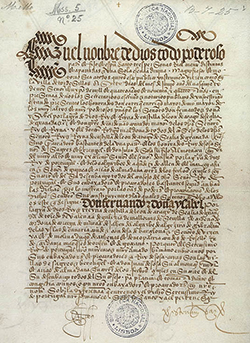 The Treaty of Tordesillas, signed in Tordesillas, Spain, on 7 June 1494, and ratified in Setúbal, Portugal, divided the newly discovered lands outside Europe between the Kingdom of Portugal and the Crown of Castile, along a meridian 370 leagues west of the Cape Verde islands, off the west coast of Africa. That line of demarcation was about halfway between Cape Verde (already Portuguese) and the islands visited by Christopher Columbus on his first voyage (claimed for Castile and León), named in the treaty as Cipangu and Antillia (Cuba and Hispaniola). The lands to the east would belong to Portugal and the lands to the west to Castile, modifying an earlier bull by Pope Alexander VI. The treaty was signed by Spain on 2 July 1494, and by Portugal on 5 September 1494. The other side of the world was divided a few decades later by the Treaty of Zaragoza, signed on 22 April 1529, which specified the antimeridian to the line of demarcation specified in the Treaty of Tordesillas. Portugal and Spain largely respected the treaties, while the indigenous peoples of the Americas did not acknowledge them.
The Treaty of Tordesillas, signed in Tordesillas, Spain, on 7 June 1494, and ratified in Setúbal, Portugal, divided the newly discovered lands outside Europe between the Kingdom of Portugal and the Crown of Castile, along a meridian 370 leagues west of the Cape Verde islands, off the west coast of Africa. That line of demarcation was about halfway between Cape Verde (already Portuguese) and the islands visited by Christopher Columbus on his first voyage (claimed for Castile and León), named in the treaty as Cipangu and Antillia (Cuba and Hispaniola). The lands to the east would belong to Portugal and the lands to the west to Castile, modifying an earlier bull by Pope Alexander VI. The treaty was signed by Spain on 2 July 1494, and by Portugal on 5 September 1494. The other side of the world was divided a few decades later by the Treaty of Zaragoza, signed on 22 April 1529, which specified the antimeridian to the line of demarcation specified in the Treaty of Tordesillas. Portugal and Spain largely respected the treaties, while the indigenous peoples of the Americas did not acknowledge them.
1494
(no entry for this year)
(no entry for this year)
1495
(no entry for this year)
(no entry for this year)
1496
(no entry for this year)
Boys working under Savonarola collect from homes things associated with moral laxity: mirrors, cosmetics, pictures, books, fine dresses, the works of immoral poets. Savonarola has these burned. Renaissance art work is lost. Pope Alexander VI excommunicates Savonarola.
1497
(no entry for this year)
Savonarola is hanged. An enraged crowd burns Savonarola at the same spot where he ordered his bonfire.
1498
(no entry for this year)
(no entry for this year)
1499
(no entry for this year)
(no entry for this year)
1500
(no entry for this year)
African Slaves in the New World Spanish settlers bring slaves from Africa to Santo Domingo (now the capital of the Dominican Republic).
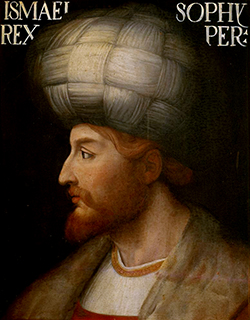 Ismail I, the founder and first shah of Safavid Iran, ruled from 1501 until his death in 1524. His reign is often considered the beginning of modern Iranian history, as well as one of the gunpowder empires. The rule of Ismail I is one of the most vital in the history of Iran. Before his accession in 1501, Iran, since its Islamic conquest eight-and-a-half centuries earlier, had not existed as a unified country under native Iranian rule. The dynasty founded by Ismail I would rule for over two centuries, being one of the greatest Iranian empires and at its height being amongst the most powerful empires of its time, ruling all of present-day Iran, the Republic of Azerbaijan, Armenia, most of Georgia, the North Caucasus, and Iraq, as well as parts of modern-day Turkey, Syria, Pakistan, Afghanistan, Uzbekistan, and Turkmenistan.
Ismail I, the founder and first shah of Safavid Iran, ruled from 1501 until his death in 1524. His reign is often considered the beginning of modern Iranian history, as well as one of the gunpowder empires. The rule of Ismail I is one of the most vital in the history of Iran. Before his accession in 1501, Iran, since its Islamic conquest eight-and-a-half centuries earlier, had not existed as a unified country under native Iranian rule. The dynasty founded by Ismail I would rule for over two centuries, being one of the greatest Iranian empires and at its height being amongst the most powerful empires of its time, ruling all of present-day Iran, the Republic of Azerbaijan, Armenia, most of Georgia, the North Caucasus, and Iraq, as well as parts of modern-day Turkey, Syria, Pakistan, Afghanistan, Uzbekistan, and Turkmenistan.
1501
(no entry for this year)
1502
(no entry for this year)
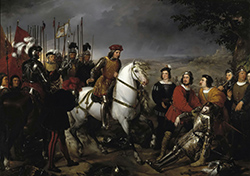 At the Battle of Cerignola Spanish forces defeat the French, considered the first battle in history won by gunpowder small arms.
At the Battle of Cerignola Spanish forces defeat the French, considered the first battle in history won by gunpowder small arms.
1503
(no entry for this year)
(no entry for this year)
1504
(no entry for this year)
(no entry for this year)
1505
Leonardo da Vinci produces his Codex on the Flight of Birds, a relatively short codex. It comprises 18 folios and measures 21 × 15 centimetres. Now held at the Royal Library of Turin, the codex begins with an examination of the flight behavior of birds and proposes mechanisms for flight by machines. Leonardo constructed a number of these machines, and attempted to launch them from a hill near Florence. However, his efforts failed. In the codex, Leonardo notes for the first time that the center of gravity of a flying bird does not coincide with its center of pressure.
(no entry for this year)
1506
(no entry for this year)
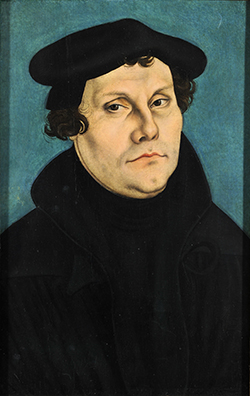 Martin Luther ordained to the priesthood. Luther was the seminal figure of the Protestant Reformation. He is widely regarded as one of the most influential figures in Western and Christian history. He came to reject several teachings and practices of the Roman Catholic Church; in particular, he disputed the view on indulgences. Luther attempted to resolve these differences amicably, first proposing an academic discussion of the practice and efficacy of indulgences in Ninety-five Theses, which he authored in 1517. In 1520, Pope Leo X demanded that Luther renounce all of his writings, and when Luther refused to do so, excommunicated him in January 1521. Later that year, Holy Roman Emperor Charles V condemned Luther as an outlaw at the Diet of Worms. When Luther died in 1546, Pope Leo X's excommunication was still in effect. Luther taught that salvation and, consequently, eternal life are not earned by good deeds; rather, they are received only as the free gift of God's grace through the believer's faith in Jesus Christ, who is the sole redeemer from sin. Luther's theology challenged the authority and office of the pope by teaching that the Bible is the only source of divinely revealed knowledge, and opposed sacerdotalism by considering all baptized Christians to be a holy priesthood. Attempts by the Catholic Church to suppress the new protestant movement led to more than 200 years of wars — the European wars of religion.
Martin Luther ordained to the priesthood. Luther was the seminal figure of the Protestant Reformation. He is widely regarded as one of the most influential figures in Western and Christian history. He came to reject several teachings and practices of the Roman Catholic Church; in particular, he disputed the view on indulgences. Luther attempted to resolve these differences amicably, first proposing an academic discussion of the practice and efficacy of indulgences in Ninety-five Theses, which he authored in 1517. In 1520, Pope Leo X demanded that Luther renounce all of his writings, and when Luther refused to do so, excommunicated him in January 1521. Later that year, Holy Roman Emperor Charles V condemned Luther as an outlaw at the Diet of Worms. When Luther died in 1546, Pope Leo X's excommunication was still in effect. Luther taught that salvation and, consequently, eternal life are not earned by good deeds; rather, they are received only as the free gift of God's grace through the believer's faith in Jesus Christ, who is the sole redeemer from sin. Luther's theology challenged the authority and office of the pope by teaching that the Bible is the only source of divinely revealed knowledge, and opposed sacerdotalism by considering all baptized Christians to be a holy priesthood. Attempts by the Catholic Church to suppress the new protestant movement led to more than 200 years of wars — the European wars of religion.
1507
(no entry for this year)
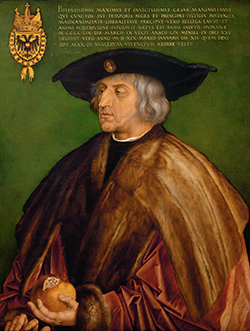 Maximilian I becomes Holy Roman Emperor, a role he held until his death in 1519. He was never crowned by the Pope, as the journey to Rome was blocked by the Venetians. He proclaimed himself elected emperor in 1508 (Pope Julius II later recognized this) at Trent, thus breaking the long tradition of requiring a papal coronation for the adoption of the Imperial title. Maximilian was the only surviving son of Frederick III, Holy Roman Emperor, and Eleanor of Portugal. Since his coronation as King of the Romans in 1486, he ran a double government, or Doppelregierung (with a separate court), with his father until Frederick's death in 1493. Maximilian expanded the influence of the House of Habsburg through war and his marriage in 1477 to Mary of Burgundy, the ruler of the Burgundian State, heiress of Charles the Bold, though he also lost his family's original lands in today's Switzerland to the Swiss Confederacy. Through the marriage of his son Philip the Handsome to eventual queen Joanna of Castile in 1496, Maximilian helped to establish the Habsburg dynasty in Spain, which allowed his grandson Charles to hold the thrones of both Castile and Aragon.
Maximilian I becomes Holy Roman Emperor, a role he held until his death in 1519. He was never crowned by the Pope, as the journey to Rome was blocked by the Venetians. He proclaimed himself elected emperor in 1508 (Pope Julius II later recognized this) at Trent, thus breaking the long tradition of requiring a papal coronation for the adoption of the Imperial title. Maximilian was the only surviving son of Frederick III, Holy Roman Emperor, and Eleanor of Portugal. Since his coronation as King of the Romans in 1486, he ran a double government, or Doppelregierung (with a separate court), with his father until Frederick's death in 1493. Maximilian expanded the influence of the House of Habsburg through war and his marriage in 1477 to Mary of Burgundy, the ruler of the Burgundian State, heiress of Charles the Bold, though he also lost his family's original lands in today's Switzerland to the Swiss Confederacy. Through the marriage of his son Philip the Handsome to eventual queen Joanna of Castile in 1496, Maximilian helped to establish the Habsburg dynasty in Spain, which allowed his grandson Charles to hold the thrones of both Castile and Aragon.
1508
(no entry for this year)
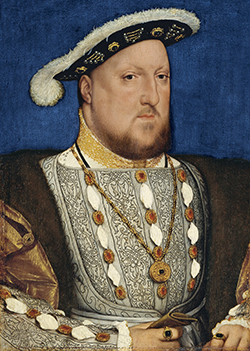 Henry VIII becomes King of England. Henry is known for his six marriages and his efforts to have his first marriage (to Catherine of Aragon) annulled. His disagreement with Pope Clement VII about such an annulment led Henry to initiate the English Reformation, separating the Church of England from papal authority. He appointed himself Supreme Head of the Church of England and dissolved convents and monasteries, for which he was excommunicated by the pope. Henry brought radical changes to the Constitution of England, expanding royal power and ushering in the theory of the divine right of kings in opposition to papal supremacy. He frequently used charges of treason and heresy to quell dissent, and those accused were often executed without a formal trial using bills of attainder. He achieved many of his political aims through his chief ministers, some of whom were banished or executed when they fell out of his favor. Thomas Wolsey, Thomas More, Thomas Cromwell, and Thomas Cranmer all figured prominently in his administration.
Henry VIII becomes King of England. Henry is known for his six marriages and his efforts to have his first marriage (to Catherine of Aragon) annulled. His disagreement with Pope Clement VII about such an annulment led Henry to initiate the English Reformation, separating the Church of England from papal authority. He appointed himself Supreme Head of the Church of England and dissolved convents and monasteries, for which he was excommunicated by the pope. Henry brought radical changes to the Constitution of England, expanding royal power and ushering in the theory of the divine right of kings in opposition to papal supremacy. He frequently used charges of treason and heresy to quell dissent, and those accused were often executed without a formal trial using bills of attainder. He achieved many of his political aims through his chief ministers, some of whom were banished or executed when they fell out of his favor. Thomas Wolsey, Thomas More, Thomas Cromwell, and Thomas Cranmer all figured prominently in his administration.
1509
(no entry for this year)
(no entry for this year)
1510
(no entry for this year)
(no entry for this year)
1511
(no entry for this year)
(no entry for this year)
1512
(no entry for this year)
(no entry for this year)
1513
(no entry for this year)
Raphael's friend, courtier Giovanbattista Branconio dell'Aquila, becomes the personal keeper of Hanno, the white elephant brought to Rome in 1514, as a gift by King Manuel I of Portugal to Pope Leo X (born Giovanni de' Medici) at his coronation.
1514
(no entry for this year)
(no entry for this year)
1515
(no entry for this year)
(no entry for this year)
1516
(no entry for this year)
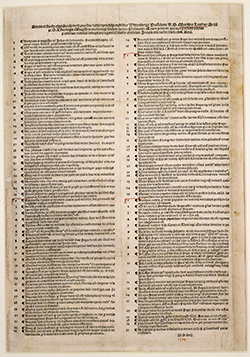 Martin Luther publishes his Ninety-five Theses or Disputation on the Power and Efficacy of Indulgences, a list of propositions for an academic disputation. This work is retrospectively considered to have launched the Protestant Reformation and the birth of Protestantism, despite various proto-Protestant groups having existed previously. It detailed Luther's opposition to what he saw as the Roman Catholic Church's abuse and corruption by Catholic clergy, who were selling plenary indulgences, which were certificates supposed to reduce the temporal punishment in purgatory for sins committed by the purchasers or their loved ones.
Martin Luther publishes his Ninety-five Theses or Disputation on the Power and Efficacy of Indulgences, a list of propositions for an academic disputation. This work is retrospectively considered to have launched the Protestant Reformation and the birth of Protestantism, despite various proto-Protestant groups having existed previously. It detailed Luther's opposition to what he saw as the Roman Catholic Church's abuse and corruption by Catholic clergy, who were selling plenary indulgences, which were certificates supposed to reduce the temporal punishment in purgatory for sins committed by the purchasers or their loved ones.
Ottoman Turks defeat the Mamluks of Egypt and take control of Egypt and the Arabian Peninsula.
1517
(no entry for this year)
(no entry for this year)
1518
(no entry for this year)
Horses are brought to the New World by Hernán Cortéz.
1519
(no entry for this year)
Suleiman I, also known as Suleiman the Magnificent, became Sultan in 1520 and led the Ottoman Empire to its greatest height. He expanded the empire's territory, reformed its legal system, and oversaw a cultural and artistic flourishing known as the Ottoman Renaissance.
Beginning of anabaptist movement in Germany under Thomas Münzer.
Pope Leo X excommunicates Martin Luther.
1520
(no entry for this year)
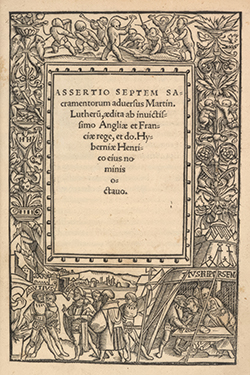 Pope Leo X confers title Defender of the Faith on King Henry VIII for his Assertio septem sacramentorum against Luther.
Pope Leo X confers title Defender of the Faith on King Henry VIII for his Assertio septem sacramentorum against Luther.
1521
(no entry for this year)
Slave Revolt: the Caribbean Slaves rebel on the Caribbean island of Hispaniola, which now comprises Haiti and the Dominican Republic.
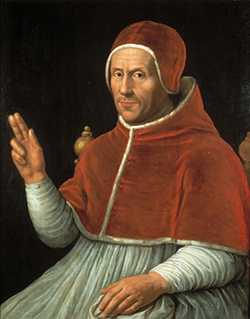 Adrian of Utrecht, Regent of Spain, elected Pope Adrian VI, the last non-Italian Pope for some time.
Adrian of Utrecht, Regent of Spain, elected Pope Adrian VI, the last non-Italian Pope for some time.
1522
(no entry for this year)
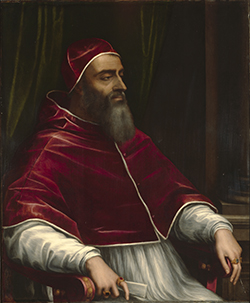 Pope Adrian VI dies, Giulio de' Medici becomes Pope Clement VII. Deemed the most unfortunate of the popes, Clement VII's reign was marked by a rapid succession of political, military, and religious struggles — many long in the making — which had far-reaching consequences for Christianity and world politics. Elected in 1524 at the end of the Italian Renaissance, Clement came to the papacy with a high reputation as a statesman. He had served with distinction as chief advisor to Pope Leo X (1513–1521, his cousin), Pope Adrian VI (1522–1523), and commendably as gran maestro of Florence (1519–1523). Assuming leadership at a time of crisis, with the Protestant Reformation spreading, the Church nearing bankruptcy, and large foreign armies invading Italy, Clement initially tried to unite Christendom by making peace among the many Christian leaders then at odds. He later attempted to liberate Italy from foreign occupation, believing that it threatened the Church's freedom. The complex political situation of the 1520s thwarted Clement's efforts.
Pope Adrian VI dies, Giulio de' Medici becomes Pope Clement VII. Deemed the most unfortunate of the popes, Clement VII's reign was marked by a rapid succession of political, military, and religious struggles — many long in the making — which had far-reaching consequences for Christianity and world politics. Elected in 1524 at the end of the Italian Renaissance, Clement came to the papacy with a high reputation as a statesman. He had served with distinction as chief advisor to Pope Leo X (1513–1521, his cousin), Pope Adrian VI (1522–1523), and commendably as gran maestro of Florence (1519–1523). Assuming leadership at a time of crisis, with the Protestant Reformation spreading, the Church nearing bankruptcy, and large foreign armies invading Italy, Clement initially tried to unite Christendom by making peace among the many Christian leaders then at odds. He later attempted to liberate Italy from foreign occupation, believing that it threatened the Church's freedom. The complex political situation of the 1520s thwarted Clement's efforts.
1523
(no entry for this year)
(no entry for this year)
1524
(no entry for this year)
(no entry for this year)
1525
(no entry for this year)
(no entry for this year)
1526
(no entry for this year)
(no entry for this year)
1527
(no entry for this year)
(no entry for this year)
1528
(no entry for this year)
(no entry for this year)
1529
(no entry for this year)
(no entry for this year)
1530
(no entry for this year)
(no entry for this year)
1531
(no entry for this year)
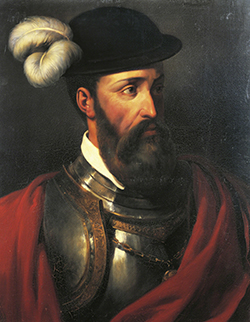 Francisco Pizarro leads the Spanish conquest of the Inca Empire.
Francisco Pizarro leads the Spanish conquest of the Inca Empire.
Sugarcane is first grown in Brazil.
1532
(no entry for this year)
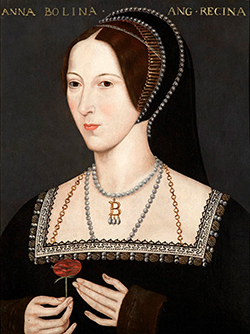 Anne Boleyn becomes Queen of England. Anne was the daughter of Thomas Boleyn (later Earl of Wiltshire), and his wife, Elizabeth Howard, and was educated in the Netherlands and France. Anne returned to England in early 1522, to marry her cousin James Butler, 9th Earl of Ormond; the marriage plans were broken off, and instead, she secured a post at court as maid of honor to Henry VIII's wife, Catherine of Aragon. Early in 1523, Anne was secretly betrothed to Henry Percy, son of Henry Percy, 5th Earl of Northumberland, but the betrothal was broken off when the Earl refused to support it. Cardinal Thomas Wolsey refused the match in January 1524. In February or March 1526, Henry VIII began his pursuit of Anne. She resisted his attempts to seduce her, refusing to become his mistress, as her sister Mary had previously been. Henry focused on annulling his marriage to Catherine, so he would be free to marry Anne. After Wolsey failed to obtain an annulment from Pope Clement VII, it became clear the marriage would not be annulled by the Catholic Church. As a result, Henry and his advisers, such as Thomas Cromwell, began breaking the Church's power in England and closing the monasteries. Henry and Anne formally married on 25 January 1533, after a secret wedding on 14 November 1532.
Anne Boleyn becomes Queen of England. Anne was the daughter of Thomas Boleyn (later Earl of Wiltshire), and his wife, Elizabeth Howard, and was educated in the Netherlands and France. Anne returned to England in early 1522, to marry her cousin James Butler, 9th Earl of Ormond; the marriage plans were broken off, and instead, she secured a post at court as maid of honor to Henry VIII's wife, Catherine of Aragon. Early in 1523, Anne was secretly betrothed to Henry Percy, son of Henry Percy, 5th Earl of Northumberland, but the betrothal was broken off when the Earl refused to support it. Cardinal Thomas Wolsey refused the match in January 1524. In February or March 1526, Henry VIII began his pursuit of Anne. She resisted his attempts to seduce her, refusing to become his mistress, as her sister Mary had previously been. Henry focused on annulling his marriage to Catherine, so he would be free to marry Anne. After Wolsey failed to obtain an annulment from Pope Clement VII, it became clear the marriage would not be annulled by the Catholic Church. As a result, Henry and his advisers, such as Thomas Cromwell, began breaking the Church's power in England and closing the monasteries. Henry and Anne formally married on 25 January 1533, after a secret wedding on 14 November 1532.
1533
(no entry for this year)
(no entry for this year)
1534
(no entry for this year)
(no entry for this year)
1535
(no entry for this year)
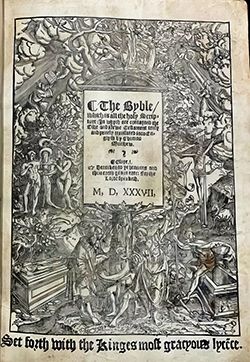 William Tyndale's partial translation of the Bible into English is published, which would eventually be incorporated into the King James Bible.
William Tyndale's partial translation of the Bible into English is published, which would eventually be incorporated into the King James Bible.
1537
(no entry for this year)
(no entry for this year)
1538
(no entry for this year)
Spain annexes Cuba.
1539
(no entry for this year)
Hernando de Alarcón sets sail to explore the Baja California peninsula; on September 26 he enters the Colorado River.
The Society of Jesus, or the Jesuits, is founded by Ignatius of Loyola and six companions with the approval of Pope Paul III.
1540
(no entry for this year)
The western headwaters of the Amazon River are encountered and explored by Francisco de Orellana.
Spanish explorer Hernando de Soto reaches the Mississippi River, naming it Rio de Espiritu Santo.
1541
(no entry for this year)
Juan Rodríguez Cabrillo explores the coast of California.
Pope Paul III establishes the Inquisition in Rome.
War resumes between Francis I of France and Emperor Charles V. This time Henry VIII is allied with the Emperor, while James V of Scotland and Sultan Suleiman I are allied with the French.
1542
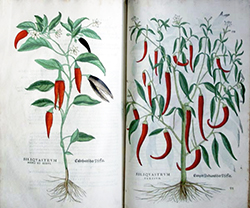 Leonhart Fuchs publishes his new herbal De historia stirpium commentarii insignes in Basel. It was illustrated by: Albrecht Meyer, who made drawings based on the actual plants; Heinrich Füllmaurer, who transferred the drawings to woodblock; and Vitus Rudolph Speckle, who cut the blocks and printed the drawings. It covers about 497 plants and has over 500 woodcut illustrations. Over 100 of the plants in the book were first descriptions. The University of Glasgow states that it is considered a landmark work in its field. Stanford University Press considers it one of the best illustrated books of all time and a masterpiece of the German Renaissance. It set a new standard for accuracy and quality, as well as being the first known publication of plants from the Americas, such as pumpkin, maize, marigold, potato, and tobacco. Plants were identified in German, Greek, and Latin, and sometimes English. The book was initially published in Latin and Greek and quickly translated into German. Just during Fuchs' lifetime the book went through 39 printings in Dutch, French, German, Latin, and Spanish and 20 years after his death was translated into English.
Leonhart Fuchs publishes his new herbal De historia stirpium commentarii insignes in Basel. It was illustrated by: Albrecht Meyer, who made drawings based on the actual plants; Heinrich Füllmaurer, who transferred the drawings to woodblock; and Vitus Rudolph Speckle, who cut the blocks and printed the drawings. It covers about 497 plants and has over 500 woodcut illustrations. Over 100 of the plants in the book were first descriptions. The University of Glasgow states that it is considered a landmark work in its field. Stanford University Press considers it one of the best illustrated books of all time and a masterpiece of the German Renaissance. It set a new standard for accuracy and quality, as well as being the first known publication of plants from the Americas, such as pumpkin, maize, marigold, potato, and tobacco. Plants were identified in German, Greek, and Latin, and sometimes English. The book was initially published in Latin and Greek and quickly translated into German. Just during Fuchs' lifetime the book went through 39 printings in Dutch, French, German, Latin, and Spanish and 20 years after his death was translated into English.
(no entry for this year)
1543
 Andreas Vesalius (Andries van Wesel) publishes the anatomy treatise De humani corporis fabrica (On the Workings of the Human Body).
Andreas Vesalius (Andries van Wesel) publishes the anatomy treatise De humani corporis fabrica (On the Workings of the Human Body).
(no entry for this year)
1544
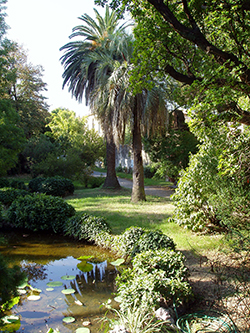 Orto botanico di Pisa botanical garden established by Cosimo I de' Medici, Grand Duke of Tuscany, under the direction of Luca Ghini, who also creates the first herbarium.
Orto botanico di Pisa botanical garden established by Cosimo I de' Medici, Grand Duke of Tuscany, under the direction of Luca Ghini, who also creates the first herbarium.
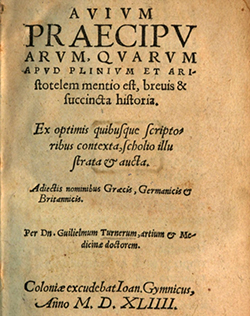 William Turner's Avium praecipuarum, quarum apud Plinium et Aristotelem mentio est, brevis et succincta historia is published in Cologne, the first printed book devoted entirely to ornithology.
William Turner's Avium praecipuarum, quarum apud Plinium et Aristotelem mentio est, brevis et succincta historia is published in Cologne, the first printed book devoted entirely to ornithology.
(no entry for this year)
1545
(no entry for this year)
(no entry for this year)
1546
German minerologist Georgius Agricola publishes De Natura Fossilium (On the Nature of Fossils), the first published paleontological treatise.
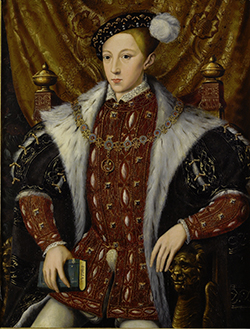 Edward VI becomes King of England and Ireland on 28 January and is crowned on 20 February at the age of 9. The son of Henry VIII and Jane Seymour, Edward was England's first monarch to be raised as a Protestant. During his reign, the realm was governed by a Regency Council because he never reached his majority.
Edward VI becomes King of England and Ireland on 28 January and is crowned on 20 February at the age of 9. The son of Henry VIII and Jane Seymour, Edward was England's first monarch to be raised as a Protestant. During his reign, the realm was governed by a Regency Council because he never reached his majority.
 Grand Prince Ivan the Terrible is crowned tsar of (All)Russia, thenceforth becoming the first Russian tsar.
Grand Prince Ivan the Terrible is crowned tsar of (All)Russia, thenceforth becoming the first Russian tsar.
1547
(no entry for this year)
Battle of Uedahara: Firearms are used for the first time on the battlefield in Japan.
1548
(no entry for this year)
(no entry for this year)
1549
(no entry for this year)
(no entry for this year)
1550
(no entry for this year)
(no entry for this year)
1551
(no entry for this year)
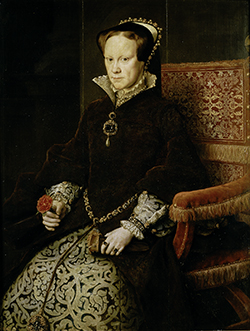 Mary Tudor becomes the first queen regnant of England and restores the Church of England under Papal authority.
Mary Tudor becomes the first queen regnant of England and restores the Church of England under Papal authority.
1553
(no entry for this year)
(no entry for this year)
1554
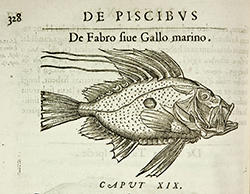 Guillaume Rondelet publishes a volume on Mediterranean fish — De Piscibus — and includes the assertion that glossopetrae, or tongue stones, resemble shark teeth. The hypothesis attracts little attention.
Guillaume Rondelet publishes a volume on Mediterranean fish — De Piscibus — and includes the assertion that glossopetrae, or tongue stones, resemble shark teeth. The hypothesis attracts little attention.
Roman naturalist Ippolito Salviani publishes History of Aquatic Animals.
(no entry for this year)
1555
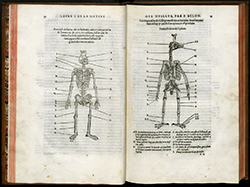 Pierre Belon publishes L'Histoire de la nature des oyseaux, a pioneering work in the comparative anatomy of birds.
Pierre Belon publishes L'Histoire de la nature des oyseaux, a pioneering work in the comparative anatomy of birds.
Pomponio Algerio, 25-year-old radical theologian, is executed by boiling in oil as part of the Roman inquisition. After refusing to conform to Church doctrine, he was sentenced to prison and asked to reconsider his Lutheran beliefs. After a year behind bars, he still refused to reconsider. Because Venetian authorities would not consent to an execution, Pope Paul IV sent officials to extradite Pomponio to Rome. In Rome, on 21 August 1555, a monk from the brotherhood of St John the Beheaded visited Pomponio in his cell urging him to repent. If he repented, he would be strangled before burning. The 24-year-old student refused. One year later, on 22 August 1556, he was executed by civil authorities in the Piazza Navona, Rome. Maintaining his composure while he was boiled in oil, he stayed alive for 15 minutes before dying.
The Shaanxi earthquake in China, during the Ming Dynasty, is history's deadliest known earthquake, killing approximately 830,000 people.
1556
(no entry for this year)
(no entry for this year)
1557
(no entry for this year)
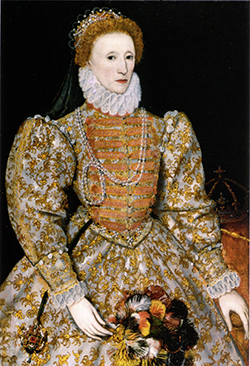 Elizabeth Tudor becomes Queen Elizabeth I at age 25. Sometimes called The Virgin Queen, Gloriana or Good Queen Bess, the childless Elizabeth was the last monarch of the Tudor dynasty. Elizabeth was the daughter of Henry VIII and Anne Boleyn, his second wife, who was executed two-and-a-half years after Elizabeth's birth. Anne's marriage to Henry VIII was annulled, and Elizabeth was declared illegitimate. Elizabeth's reign is known as the Elizabethan era. The period is famous for the flourishing of English drama, led by playwrights such as William Shakespeare and Christopher Marlowe, and for the seafaring prowess of English adventurers such as Francis Drake.
Elizabeth Tudor becomes Queen Elizabeth I at age 25. Sometimes called The Virgin Queen, Gloriana or Good Queen Bess, the childless Elizabeth was the last monarch of the Tudor dynasty. Elizabeth was the daughter of Henry VIII and Anne Boleyn, his second wife, who was executed two-and-a-half years after Elizabeth's birth. Anne's marriage to Henry VIII was annulled, and Elizabeth was declared illegitimate. Elizabeth's reign is known as the Elizabethan era. The period is famous for the flourishing of English drama, led by playwrights such as William Shakespeare and Christopher Marlowe, and for the seafaring prowess of English adventurers such as Francis Drake.
1558
(no entry for this year)
Led by Don Tristán de Luna y Arellano, a Spanish missionary colony of 1500 men on thirteen ships arrives from Vera Cruz at Pensacola Bay, founding the first European settlement on the mainland United States. On September 19, the colony is decimated by a hurricane.
1559
(no entry for this year)
 By winning the Battle of Okehazama, Oda Nobunaga becomes one of the pre-eminent warlords of Japan.
By winning the Battle of Okehazama, Oda Nobunaga becomes one of the pre-eminent warlords of Japan.
1560
(no entry for this year)
(no entry for this year)
1561
(no entry for this year)
Britain Joins Slave Trade. John Hawkins, the first Briton to take part in the slave trade, makes a huge profit hauling human cargo from Africa to Hispaniola.
1562
(no entry for this year)
(no entry for this year)
1563
(no entry for this year)
(no entry for this year)
1564
(no entry for this year)
(no entry for this year)
1565
 Conrad Gessner publishes De Omni Rerum Fossilium ("A Book of Fossil Objects").
Conrad Gessner publishes De Omni Rerum Fossilium ("A Book of Fossil Objects").
Antwerp doctor Samuel Quiccheberg publishes a description of the curiosity cabinet of Hans Jakob Fugger, including items from the animal, vegetable and mineral world.
(no entry for this year)
1566
(no entry for this year)
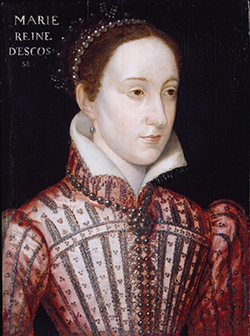 Mary, Queen of Scots, is imprisoned by Elizabeth I. Mary, the only surviving legitimate child of James V of Scotland, was six days old when her father died and she acceded to the throne. Mary had previously claimed Elizabeth's throne as her own and was considered the legitimate sovereign of England by many English Catholics, including participants in a rebellion known as the Rising of the North. Perceiving her as a threat, Elizabeth had her confined in various castles and manor houses in the interior of England. After eighteen and a half years in custody, Mary was found guilty of plotting to assassinate Elizabeth in 1586. She was beheaded the following year.
Mary, Queen of Scots, is imprisoned by Elizabeth I. Mary, the only surviving legitimate child of James V of Scotland, was six days old when her father died and she acceded to the throne. Mary had previously claimed Elizabeth's throne as her own and was considered the legitimate sovereign of England by many English Catholics, including participants in a rebellion known as the Rising of the North. Perceiving her as a threat, Elizabeth had her confined in various castles and manor houses in the interior of England. After eighteen and a half years in custody, Mary was found guilty of plotting to assassinate Elizabeth in 1586. She was beheaded the following year.
1567
(no entry for this year)
The Transylvanian Diet, under the patronage of the prince John Sigismund Zápolya, the former King of Hungary, inspired by the teachings of Ferenc Dávid, the founder of the Unitarian Church of Transylvania, promulgates the Edict of Torda, the first law of Freedom of religion and of conscience in the World.
1568
(no entry for this year)
(no entry for this year)
1569
(no entry for this year)
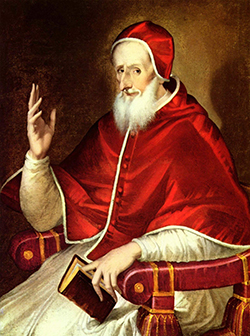 Pope Pius V issues Regnans in Excelsis, a papal bull excommunicating all who obeyed Elizabeth I and calling on all Roman Catholics to rebel against her.
Pope Pius V issues Regnans in Excelsis, a papal bull excommunicating all who obeyed Elizabeth I and calling on all Roman Catholics to rebel against her.
1570
(no entry for this year)
The Ottoman Empire suffered a major defeat at the Battle of Lepanto, a naval battle fought against a coalition of Christian states led by the Holy League. Despite the loss, the Ottoman navy remained a dominant force in the Mediterranean.
1571
(no entry for this year)
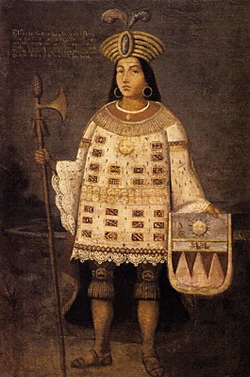 The last Inca leader Tupak Amaru apprehended by Spanish conquistadores at Vilcabamba, Peru, and executed in Cuzco.
The last Inca leader Tupak Amaru apprehended by Spanish conquistadores at Vilcabamba, Peru, and executed in Cuzco.
1572
(no entry for this year)
(no entry for this year)
1573
(no entry for this year)
(no entry for this year)
1574
(no entry for this year)
(no entry for this year)
1575
(no entry for this year)
English navigator Martin Frobisher sights Greenland.
1576
(no entry for this year)
(no entry for this year)
1577
(no entry for this year)
(no entry for this year)
1578
(no entry for this year)
Francis Drake, during his circumnavigation of the world, lands in what is now California, which he claims for Queen Elizabeth I of England as Nova Albion.
1579
(no entry for this year)
Francis Drake in the Golden Hind sails into Plymouth having completed the second circumnavigation of the world, westabout, begun in 1577.
Spain unifies with Portugal under Philip II. The struggle for the throne of Portugal ends the Portuguese Empire. The Spanish and Portuguese crowns are united for 60 years, i.e. until 1640.
1580
(no entry for this year)
Slaves in Florida Spanish residents in St. Augustine, the first permanent settlement in Florida, import African slaves.
1581
(no entry for this year)
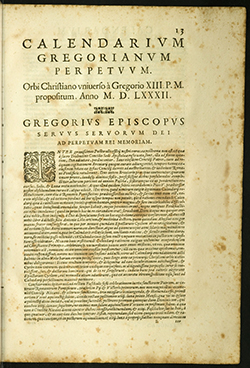 Pope Gregory XIII issues papal bull Inter Gravissimas, thereby establishing the The Gregorian Calendar. The last day of the Julian calendar was Thursday, 4 October 1582 and this was followed by the first day of the Gregorian calendar, Friday, 15 October 1582.
Pope Gregory XIII issues papal bull Inter Gravissimas, thereby establishing the The Gregorian Calendar. The last day of the Julian calendar was Thursday, 4 October 1582 and this was followed by the first day of the Gregorian calendar, Friday, 15 October 1582.
1582
(no entry for this year)
(no entry for this year)
1583
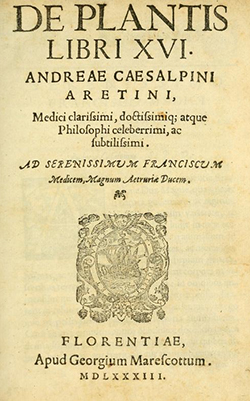 Andrea Cesalpino publishes De Plantis, ordering plants in families. In his works he classified plants according to their fruits and seeds, rather than alphabetically or by medicinal properties. In 1555, he succeeded Luca Ghini as director of the botanical garden in Pisa.
Andrea Cesalpino publishes De Plantis, ordering plants in families. In his works he classified plants according to their fruits and seeds, rather than alphabetically or by medicinal properties. In 1555, he succeeded Luca Ghini as director of the botanical garden in Pisa.
Walter Raleigh sends Philip Amadas and Arthur Barlowe to explore the Outer Banks of Virginia (now North Carolina), with a view to establishing an English colony; they locate Roanoke Island.
1584
(no entry for this year)
(no entry for this year)
1585
(no entry for this year)
(no entry for this year)
1586
Jacques Dal champs publishes Historia generalis plantarum in Lyon, describing 2,731 plants, a record number for this time.
Mary, Queen of Scots, is executed by Elizabeth I.
1587
(no entry for this year)
(no entry for this year)
1588
(no entry for this year)
(no entry for this year)
1589
(no entry for this year)
At the Siege of Odawara the Go-Hojo clan surrendered to Toyotomi Hideyoshi, unifying Japan.
1590
José de Acosta publishes Natural and Moral History of the Indies describing such weird creatures as iguanas.
(no entry for this year)
1591
Girolamo Porro produces a plan for a botanical garden at Padua, arguably expecting to assemble all the world's plants. Over the next century, well- traveled naturalists will abandon such goals as unrealistic.
(no entry for this year)
1592
(no entry for this year)
(no entry for this year)
1593
(no entry for this year)
(no entry for this year)
1594
The tulip bulbs planted by Carolus Clusius in the Hortus Botanicus Leiden, Holland, first flower.
A Spanish expedition led by lvaro de Menda a de Neira makes the first European landing in Polynesia, on the Marquesas Islands.
1595
(no entry for this year)
(no entry for this year)
1596
(no entry for this year)
(no entry for this year)
1597
(no entry for this year)
(no entry for this year)
1598
Jean Bauhin, a former student of Conrad Gesner's, publishes a monograph of the medicinal waters and surrounding environment of the German fountains at Boll, the first publication of a complete set of fossils from a specific location.
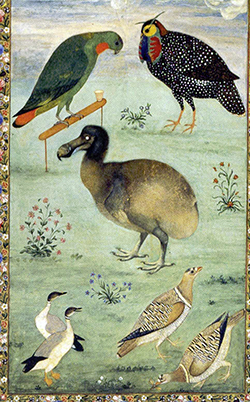 After being separated from the main Second Dutch Expedition to Indonesia fleet of Admiral Wybrand Van Warwyck, three ships under Jacob Cornelisz. van Neck land on the island which they name Mauritius and sight the dodo bird (Raphus cucullatus); it will become extinct around 1681.
After being separated from the main Second Dutch Expedition to Indonesia fleet of Admiral Wybrand Van Warwyck, three ships under Jacob Cornelisz. van Neck land on the island which they name Mauritius and sight the dodo bird (Raphus cucullatus); it will become extinct around 1681.
(no entry for this year)
1599
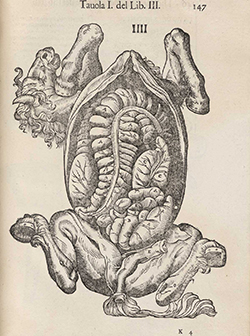 Lawyer Carlo Ruini's Anatomia del cavallo is published posthumously in Venice. This anatomy of the horse is the first published of any non-human animal.
Lawyer Carlo Ruini's Anatomia del cavallo is published posthumously in Venice. This anatomy of the horse is the first published of any non-human animal.
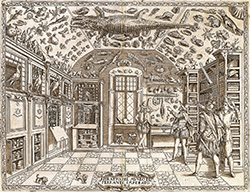 Ferrante Imperato publishes Dell'Historia Naturale (Natural History) attempting to catalog all of nature's animal, vegetable and mineral forms. He illustrated the book with his own cabinet of curiosities displayed at Palazzo Gravina in Naples. The engraving became the first pictorial representation of a Renaissance humanist's displayed natural history research collection.
Ferrante Imperato publishes Dell'Historia Naturale (Natural History) attempting to catalog all of nature's animal, vegetable and mineral forms. He illustrated the book with his own cabinet of curiosities displayed at Palazzo Gravina in Naples. The engraving became the first pictorial representation of a Renaissance humanist's displayed natural history research collection.
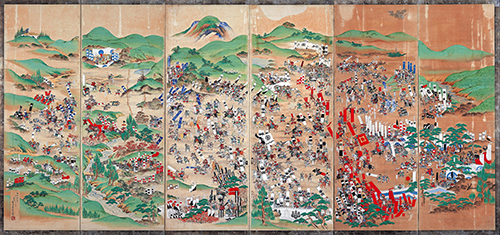 Battle of Sekigahara in Japan. End of the Warring States period and beginning of the Edo period.
Battle of Sekigahara in Japan. End of the Warring States period and beginning of the Edo period.
1600
(no entry for this year)
(no entry for this year)
1601
(no entry for this year)
The Dutch East India Company (VOC) is established by merging competing Dutch trading companies.[4] Its success contributes to the Dutch Golden Age.
1602
Ulisse Aldrovandi publishes De Animalibus Insectis.
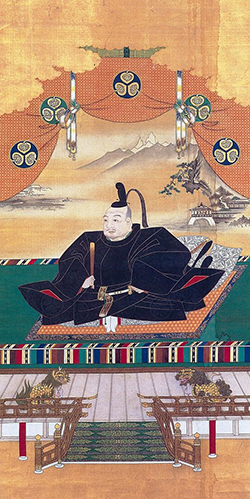 Tokugawa Ieyasu takes the title of Shogun, establishing the Tokugawa Shogunate. This begins the Edo period, which will last until 1869.
Tokugawa Ieyasu takes the title of Shogun, establishing the Tokugawa Shogunate. This begins the Edo period, which will last until 1869.
1603
(no entry for this year)
(no entry for this year)
1604
(no entry for this year)
Johann Carolus of Germany publishes the 'Relation', the first newspaper.
Tokugawa Ieyasu passes the title of Shogun to his son, Tokugawa Hidetada, and "retires" to Sunpu.
1605
(no entry for this year)
Captain Willem Janszoon and his crew aboard the Dutch East India Company ship Duyfken becomes the first recorded Europeans to sight and make landfall in Australia.
1606
(no entry for this year)
Jamestown, Virginia, is settled as what would become the first permanent English colony in North America.
1607
(no entry for this year)
Quebec City founded by Samuel de Champlain in New France (present-day Canada).
1608
(no entry for this year)
(no entry for this year)
1609
(no entry for this year)
(no entry for this year)
1610
(no entry for this year)
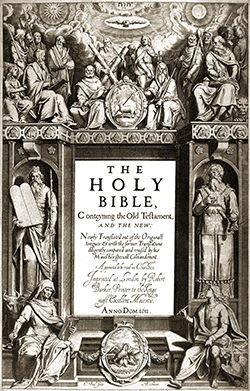 King James Bible is first published. The KJV is an English translation of the Christian Bible for the Church of England begun in 1604 and completed in 1611. The books of the King James Version include the 39 books of the Old Testament, an intertestamental section containing 14 books of the Apocrypha (most of which correspond to books in the Vulgate Deuterocanon adhered to by Roman Catholics), and the 27 books of the New Testament. It was first printed by the King's Printer Robert Barker and was the third translation into English approved by the English Church authorities.
King James Bible is first published. The KJV is an English translation of the Christian Bible for the Church of England begun in 1604 and completed in 1611. The books of the King James Version include the 39 books of the Old Testament, an intertestamental section containing 14 books of the Apocrypha (most of which correspond to books in the Vulgate Deuterocanon adhered to by Roman Catholics), and the 27 books of the New Testament. It was first printed by the King's Printer Robert Barker and was the third translation into English approved by the English Church authorities.
1611
(no entry for this year)
The first commercial tobacco crop is raised in Jamestown, Virginia.
1612
(no entry for this year)
(no entry for this year)
1613
(no entry for this year)
(no entry for this year)
1614
(no entry for this year)
(no entry for this year)
1615
(no entry for this year)
Death of retired Shogun Tokugawa Ieyasu.
1616
Fabio Colonna publishes "Dissertation on Tongue Stones" arguing that "nobody is so stupid" that he or she will not agree that tongue stones are really shark teeth. Like Rondelet several decades earlier, he attracts little attention.
Italian philosopher Lucilio Vanini suggests that humans descended from apes. In 1618 Vanini is arrested and, after a prolonged trial, condemned to have his tongue cut out, to be strangled at the stake and to have his body burned to ashes. The sentence was executed on 9 February 1619.
 Nikko Tosho-gu Shrine, dedicated to Tokugawa Ieyasu, the founder of the Tokugawa shogunate, is built. Ieyasu is enshrined there, where his remains are also entombed. During the Edo period, the Tokugawa shogunate carried out stately processions from Edo to the Nikko Tosho-gu. The shrine's annual spring and autumn festivals reenact these occasions, and are known as processions of a thousand warriors. Five structures at Nikko Tosho-gu are categorized as National Treasures of Japan, and three more as Important Cultural Properties. The stable of the shrine's sacred horses bears a carving of the three wise monkeys, who hear, speak and see no evil, a traditional symbol in Chinese and Japanese culture.
Nikko Tosho-gu Shrine, dedicated to Tokugawa Ieyasu, the founder of the Tokugawa shogunate, is built. Ieyasu is enshrined there, where his remains are also entombed. During the Edo period, the Tokugawa shogunate carried out stately processions from Edo to the Nikko Tosho-gu. The shrine's annual spring and autumn festivals reenact these occasions, and are known as processions of a thousand warriors. Five structures at Nikko Tosho-gu are categorized as National Treasures of Japan, and three more as Important Cultural Properties. The stable of the shrine's sacred horses bears a carving of the three wise monkeys, who hear, speak and see no evil, a traditional symbol in Chinese and Japanese culture.
1617
(no entry for this year)
Beginning of the Thirty Years War..
The Manchus start invading China. Their conquest eventually topples the Ming Dynasty.
1618
(no entry for this year)
Twenty slaves in Virginia Africans brought to Jamestown are the first slaves imported into Britain's North American colonies. Like indentured servants, they were probably freed after a fixed period of service.
1619
(no entry for this year)
(no entry for this year)
1621
(no entry for this year)
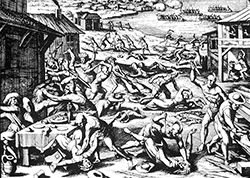 Jamestown massacre: Algonquian natives kill 347 English settlers outside Jamestown, Virginia (one-third of the colony's population) and burn the Henricus settlement.
Jamestown massacre: Algonquian natives kill 347 English settlers outside Jamestown, Virginia (one-third of the colony's population) and burn the Henricus settlement.
1622
(no entry for this year)
(no entry for this year)
1623
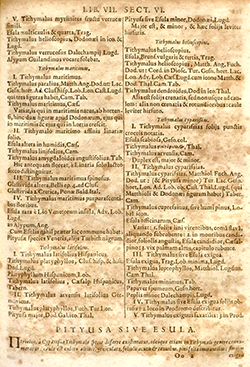 Gaspard Bauhin publishes Pinax Theatri Botanici describing some 6,000 plants.
Gaspard Bauhin publishes Pinax Theatri Botanici describing some 6,000 plants.
(no entry for this year)
1624
(no entry for this year)
English settlers occupy the islands of Barbados and St. Kitts.
1625
(no entry for this year)
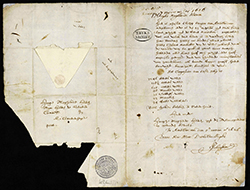 Pieter Jansz Schaghen writes to the States General of the Dutch Republic announcing the purchase of Manhattan from the Native Americans.
Pieter Jansz Schaghen writes to the States General of the Dutch Republic announcing the purchase of Manhattan from the Native Americans.
The Dutch West India Company imports 11 black male slaves into the New Netherlands.
1626
(no entry for this year)
(no entry for this year)
1628
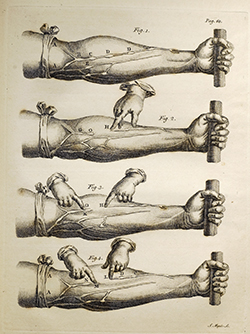 William Harvey publishes Exercitatio Anatomica de Motu Cordis et Sanguinis in Animalibus (Latin for "An Anatomical Exercise on the Motion of the Heart and Blood in Living Beings"). The book established the circulation of the blood and was a landmark in the history of physiology. Just as important as its substance was its method. Harvey combined observations, experiments, measurements, and hypotheses in extraordinary fashion to arrive at his doctrine. His work is a model of its kind. It had an immediate and far-reaching influence on Harvey's contemporaries. In the book, Harvey investigated the effect of ligatures on blood flow. The book also argued that blood was pumped around the body in a "double circulation", where after being returned to the heart, it is recirculated in a closed system to the lungs and back to the heart, where it is returned to the main circulation.
William Harvey publishes Exercitatio Anatomica de Motu Cordis et Sanguinis in Animalibus (Latin for "An Anatomical Exercise on the Motion of the Heart and Blood in Living Beings"). The book established the circulation of the blood and was a landmark in the history of physiology. Just as important as its substance was its method. Harvey combined observations, experiments, measurements, and hypotheses in extraordinary fashion to arrive at his doctrine. His work is a model of its kind. It had an immediate and far-reaching influence on Harvey's contemporaries. In the book, Harvey investigated the effect of ligatures on blood flow. The book also argued that blood was pumped around the body in a "double circulation", where after being returned to the heart, it is recirculated in a closed system to the lungs and back to the heart, where it is returned to the main circulation.
English troops capture Qu bec.
1629
(no entry for this year)
(no entry for this year)
1630
(no entry for this year)
Charles I of England grants a charter to Cecilius Calvert, second Lord Baltimore, for colony in Maryland
1632
(no entry for this year)
(no entry for this year)
1633
(no entry for this year)
(no entry for this year)
1634
(no entry for this year)
(no entry for this year)
1635
(no entry for this year)
Harvard College is established.
Colonial North America's slave trade begins when the first American slave carrier, Desire, is built and launched in Massachusetts.
Harvard University is founded in Cambridge, Massachusetts.
1636
(no entry for this year)
(no entry for this year)
1637
Francesco Stelluti publishes a summary of research on fossil wood conducted by himself and fellow Lincean Academy member Federico Cesi. Though resulting from meticulous research, the work reaches the wrong conclusion, describing the origin of fossil wood as inorganic.
(no entry for this year)
1638
(no entry for this year)
(no entry for this year)
1639
(no entry for this year)
John Punch, a runaway black servant, is sentenced to servitude for life. His two white companions are given extended terms of servitude. Punch is the first documented slave for life.
New Netherlands law forbids residents from harboring or feeding runaway slaves.
1640
(no entry for this year)
Massachusetts is the first colony to legalize slavery.
The D'Angola marriage is the first recorded marriage between blacks in New Amsterdam.
The Tokugawa Shogunate institutes Sakoku — foreigners are expelled and no one is allowed to enter or leave Japan.
1641
Calvinist lawyer Isaac La Peyrère seeks permission to publish his manuscript claiming that people have existed before Adam, and that Chaldeans can legitimately trace their civilization back 470,000 years. Permission is denied, but he will publish Men Before Adam anonymously 14 years later, inciting both outrage and mild amusement among religious leaders.
Dutch anatomist Nicolaas Tulp produces the first formal description of an ape (a chimp, bonobo or orangutan).
The city of Montr al is founded in what will become Canada.
1642
(no entry for this year)
The New England Confederation of Plymouth, Massachusetts, Connecticut, and New Haven adopts a fugitive slave law.
1643
Workers dig up a skeleton in Flanders. A court physician to the Danish king observes the excavation, measures the skeleton in "Brabantian cubits," and attributes the skeleton to a giant. It will later be identified as a fossil proboscidian.
Manchu dynasty established in China; end of the Ming line.
The Manchu conquer China ending the Ming Dynasty. The subsequent Qing Dynasty rules until 1912.
1644
(no entry for this year)
(no entry for this year)
1645
(no entry for this year)
(no entry for this year)
1646
(no entry for this year)
Peter Stuyvesant appointed governor of New Amsterdam.
George Fox founds the Society of Friends, or Quakers, in England.
1647
(no entry for this year)
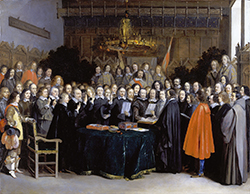 The Peace of Westphalia ends the Thirty Years' War and the Eighty Years' War and marks the ends of Spain and the Holy Roman Empire as major European powers.
The Peace of Westphalia ends the Thirty Years' War and the Eighty Years' War and marks the ends of Spain and the Holy Roman Empire as major European powers.
The Peace of Westphalia brings an end to the Thiry Years War.
1648
Franciscus Hackius publishes a lavish book on the natural history and medicines available from Brazil, Historia Naturalis Brasileae.
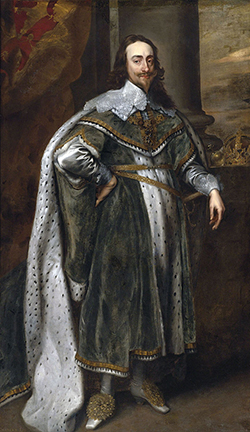 King Charles I is executed for High treason, the first and only English king to be subjected to legal proceedings in a High Court of Justice and put to death.
King Charles I is executed for High treason, the first and only English king to be subjected to legal proceedings in a High Court of Justice and put to death.
George Fox, the founder of the Society of Friends, is imprisoned at Nottingham.
1649
(no entry for this year)
Connecticut legalizes slavery.
1650
(no entry for this year)
(no entry for this year)
1651
William Harvey publishes Exercitationes de generatione animalium (On Animal Generation) explaining that all animal life begins as eggs, whether in birds, amphibians or mammals. According to Joseph Needham, in this work Harvey: (1) presented a doctrine of omne vivum ex ovo (all life comes from the egg), the first definite statement against the idea of spontaneous generation; (2) denied the possibility of generation from excrement and from mud, and pointed out that even worms have eggs; (3) identified the citricula as the point in the yolk from which the embryo develops and the blastoderm surrounding the embryo; (4) destroyed once and for all the Aristotelian (semen-blood) and Epicurean (semen-semen) theories of early embryogeny; and (5) settled the long controversy about which parts of the egg were nutritive and which was formative, by demonstrating the unreality of the distinction.
Massachusetts requires all black and Indian servants to receive military training.
Rhode Island passes laws restricting slavery and forbidding enslavement for more than 10 years.
1652
(no entry for this year)
Oliver Cromwell dissolves the Rump Parliament and replaces it with the Nominated Assembly (also called the Assembly of Saints or Barebones Parliament.) After three months, the Nominated Assembly passes a motion to dissolve itself and Cromwell establishes the Protectorate.
1653
(no entry for this year)
A Virginia court grants blacks the right to hold slaves.
Scotland incorporated with the English Commonwealth.
1654
(no entry for this year)
The island of Jamaica is captured from the Spaniards by the English.
1655
Danish scholar Ole Worm publishes Musei Wormiani Historia, a successful book about his cabinet of natural curiosities.
The first persecution of Quakers occurs in Massachusetts.
1656
(no entry for this year)
Virginia passes a fugitive slave law.
1657
(no entry for this year)
Cromwell dies and his son Richard becomes Lord Protector.
1658
(no entry for this year)
Richard Cromwell is pressured into dissolving the Protectorate; the Rump Parliament is restored.
1659
John Tradescant deeds his family treasures to fellow collector Elias Ashmole. Ashmole will later donate the collection to Oxford University, stipulating that a separate building is to be constructed for it.
Charles II, King of England, orders the Council of Foreign Plantations to devise strategies for converting slaves and servants to Christianity.
End of Puritan rule in England; restoration of the Stuarts.
The Commonwealth of England ends and the monarchy is brought back during the English Restoration.
1660
(no entry for this year)
(no entry for this year)
1661
(no entry for this year)
Hereditary slavery is established, when Virginia law decrees that children of black mothers shall be bond or free according to the condition of the mother.
Massachusetts reverses a ruling dating back to 1652, which allowed blacks to train in arms. New York, Connecticut, and New Hampshire pass similar laws restricting the bearing of arms.
1662
(no entry for this year)
Charles II, King of England, gives the Carolinas to proprietors. Until the 1680s, most settlers in the region are small landowners from Barbados.
In Gloucester County, Virginia the first documented slave rebellion in the colonies takes place.
Maryland legalizes slavery.
1663
German physician Otto von Guericke pieces together bones from different species to make a fossil "unicorn."
Maryland is the first colony to take legal action against marriages between white women and black men.
New York and New Jersey legalize slavery.
The State of Maryland mandates lifelong servitude for all black slaves. New York, New Jersey, the Carolinas, and Virginia all pass similar laws.
1664
In his private museum in Rome, Virgilio Romano exhibits a Hippopotamus major canine tooth found in Pleistocene gravels along the Via Nomentana.
Thomas Willis publishes The Anatomy of the Brain and Nerves.
Great Plague occurs in London.
1665
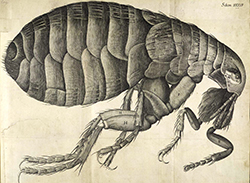 Robert Hooke observes cork under a microscope and uses the word cells to describe the tiny chambers that he sees. He publishes drawings of these cells, of fleas, and of other small creatures, in his book Micrographia.
Robert Hooke observes cork under a microscope and uses the word cells to describe the tiny chambers that he sees. He publishes drawings of these cells, of fleas, and of other small creatures, in his book Micrographia.
Maryland passes a fugitive slave law.
1666
(no entry for this year)
Virginia declares that Christian baptism will not alter a person's status as a slave.
Treaty of Breda; peace established among England, Holland, France, Denmark.
1667
Niels Stensen (Steno) describes his dissection of the head of a giant white shark and correctly identifies shark teeth, still generally thought (despite arguments to the contrary from Rondelet and Colonna in the preceding century) to be serpent tongues.
The Mission of Sault Ste. Marie, in what will become Michigan, is founded by Father Marquette.
New Jersey passes a fugitive slave law.
1668
Natural historian John Somner finds woolly rhino teeth near Canterbury in Kent, and figures they might be the remains of a sea monster. As he will die before he can publish his conclusions, his brother William will print his article A Brief Relation of Some Strange Bones There Lately Digged Up In Some Grounds of Mr. John Somner.
 Francesco Redi publishes Esperienze Intorno alla Generazione degli Insetti (Experiments on the Generation of Insects), which is regarded as his masterpiece and a milestone in the history of modern science. At the time, prevailing wisdom was that maggots arose spontaneously from rotting meat. Redi took six jars and divided them into two groups of three: In one experiment, in the first jar of each group, he put an unknown object; in the second, a dead fish; in the last, a raw chunk of veal. Redi covered the tops of the first group of jars with fine gauze so that only air could get into it. He left the other group open. After several days, he saw maggots appear on the objects in the open jars, on which flies had been able to land, but not in the gauze-covered jars. In the second experiment, meat was kept in three jars. One of the jars was uncovered, and two of the jars were covered, one with cork and the other one with gauze. Flies could only enter the uncovered jar, and in this, maggots appeared. In the jar that was covered with gauze, maggots appeared on the gauze but did not survive. Knowing full well the terrible fates of out-spoken thinkers such as Giordano Bruno and Galileo Galilei, Redi was careful to express his new views in a manner that would not contradict theological tradition of the Church; hence, his interpretations were always based on biblical passages, such as his famous adage: omne vivum ex vivo ("All life comes from life").
Francesco Redi publishes Esperienze Intorno alla Generazione degli Insetti (Experiments on the Generation of Insects), which is regarded as his masterpiece and a milestone in the history of modern science. At the time, prevailing wisdom was that maggots arose spontaneously from rotting meat. Redi took six jars and divided them into two groups of three: In one experiment, in the first jar of each group, he put an unknown object; in the second, a dead fish; in the last, a raw chunk of veal. Redi covered the tops of the first group of jars with fine gauze so that only air could get into it. He left the other group open. After several days, he saw maggots appear on the objects in the open jars, on which flies had been able to land, but not in the gauze-covered jars. In the second experiment, meat was kept in three jars. One of the jars was uncovered, and two of the jars were covered, one with cork and the other one with gauze. Flies could only enter the uncovered jar, and in this, maggots appeared. In the jar that was covered with gauze, maggots appeared on the gauze but did not survive. Knowing full well the terrible fates of out-spoken thinkers such as Giordano Bruno and Galileo Galilei, Redi was careful to express his new views in a manner that would not contradict theological tradition of the Church; hence, his interpretations were always based on biblical passages, such as his famous adage: omne vivum ex vivo ("All life comes from life").
Jan Swammerdam dissects a caterpillar for Cosimo de Medici, demonstrating that the butterfly wings already exist inside the caterpillar's body. A year later, he will publish Historia Insectorum Generalis.
(no entry for this year)
1669
(no entry for this year)
The Hudson Bay Company is incorporated.
The State of Virginia prohibits free blacks and Indians from keeping Christian (i.e. white) servants.
1670
Agostino Scilla publishes Vain Speculation Undeceived by Sense arguing for the organic origin of fossils.
(no entry for this year)
1671
(no entry for this year)
(no entry for this year)
1672
(no entry for this year)
The Mississippi River is discovered.
1673
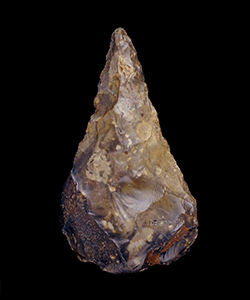 Apothecary and antiquary John Conyers finds an elephant tusk and a nearby handaxe about 12 feet below ground at Gray's Inn Lane, London. The Gray's Inn Lane handaxe will later be dated at 350,000 years old.
Apothecary and antiquary John Conyers finds an elephant tusk and a nearby handaxe about 12 feet below ground at Gray's Inn Lane, London. The Gray's Inn Lane handaxe will later be dated at 350,000 years old.
Leeuwenhoek begins corresponding with the Royal Society of London describing his discoveries under the microscope.
New York declares that blacks who convert to Christianity after their enslavement will not be freed.
1674
 Antonie van Leeuwenhoek creates a simple microscope with only one lens. He developed glass-handling techniques that allowed him to create lenses with magnifying power up to 270x — by far the most powerful magnifying lenses available. Although compound microscopes had been invented in the 1590s, nearly forty years before Leeuwenhoek was born, there were technical difficulties in building them, meaning that early compound microscopes (such as used by Robert Hooke) had a maximum magnification of only 20x or 30x. Leeuwenhoek's more powerful lenses allowed him to discover protozoa and other single-celled organisms and to be the first to observe bacteria.
Antonie van Leeuwenhoek creates a simple microscope with only one lens. He developed glass-handling techniques that allowed him to create lenses with magnifying power up to 270x — by far the most powerful magnifying lenses available. Although compound microscopes had been invented in the 1590s, nearly forty years before Leeuwenhoek was born, there were technical difficulties in building them, meaning that early compound microscopes (such as used by Robert Hooke) had a maximum magnification of only 20x or 30x. Leeuwenhoek's more powerful lenses allowed him to discover protozoa and other single-celled organisms and to be the first to observe bacteria.
King Philip's War (sometimes called the First Indian War, Metacom's War, Metacomet's War, or Metacom's Rebellion) begins in New England. The war was an armed conflict between American Indian inhabitants of present-day New England and English colonists and their Indian allies in 1675 78. The war is named for Metacomet, the Wampanoag chief who adopted the English name Philip due to the friendly relations between his father and the Mayflower Pilgrims. The war continued in the most northern reaches of New England until the signing of the Treaty of Casco Bay in April 1678. The war was the single greatest calamity to occur in seventeenth century Puritan New England and is considered by many to be the deadliest war in the history of European settlement in North America in proportion to the population. In the space of little more than a year, twelve of the region's towns were destroyed and many more damaged, the colony's economy was all but ruined, and its population was decimated, losing one-tenth of all men available for military service. More than half of New England's towns were attacked by Indians. By early July, over 400 had surrendered to the colonists, and Metacomet took refuge in the Assowamset Swamp below Providence, close to where the war had started. The colonists formed raiding parties of militia and Indians. They were allowed to keep the possessions of warring Indians and received a bounty on all captives. Metacomet was killed by one of these teams when he was tracked down by Captain Benjamin Church and Captain Josiah Standish of the Plymouth Colony militia at Mount Hope in Bristol, Rhode Island. He was shot and killed by an Indian named John Alderman on August 12, 1676. After his death, his wife and nine-year-old son were captured and sold as slaves in Bermuda. Philip's head was mounted on a pike at the entrance to Fort Plymouth, where it remained for more than two decades. His body was cut into quarters and hung in trees. Alderman was given Metacomet's right hand as a reward.
1675
Jan Swammerdam publishes a treatise on the mayfly entitled A Figure of Man's Miserable Life.
In Virginia, black slaves and black and white indentured servants band together to participate in Bacon's Rebellion.
1676
(no entry for this year)
(no entry for this year)
1677
(no entry for this year)
The Treaty of Nijmegen ends various interconnected wars among France, the Dutch Republic, Spain, Brandenburg, Sweden, Denmark, the Prince-Bishopric of M nster, and the Holy Roman Empire.
1678
(no entry for this year)
The habeas corpus act is passed in England.
1679
(no entry for this year)
The State of Virginia forbids blacks and slaves from bearing arms, prohibits blacks from congregating in large numbers, and mandates harsh punishment for slaves who assault Christians or attempt escape.
The Pueblo Revolt drives the Spanish out of New Mexico until 1692.
1680
(no entry for this year)
(no entry for this year)
1681
Royal Society member Neremiah Grew examines the "sea serpent teeth" found by John Somner in 1668 and recognizes that they are rhino teeth.
Amsterdam physician Gerard Blasius publishes Anatome Animalium examining animals' internal anatomy and skeletal structure.
What will become Pennsylvania is colonized by William Penn. Penn founds Philadelphia. Also, with other Friends, Penn purchases East Jersey.
New York makes it illegal for slaves to sell goods.
Virginia declares that all imported black servants are slaves for life.
La Salle (Ren -Robert Cavelier, Sieur de La Salle) explores the length of the Mississippi River and claims Louisiana for France.
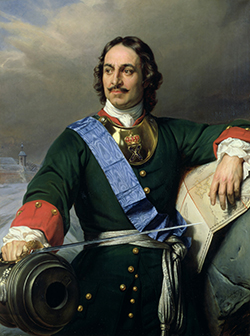 Peter the Great becomes joint ruler of Russia (sole tsar in 1696).
Peter the Great becomes joint ruler of Russia (sole tsar in 1696).
1682
Neremiah Grew publishes The Anatomy of Plants with microscopic observations of plant features.
The Ottoman Empire suffered a significant defeat at the Siege of Vienna, a failed attempt to capture the city of Vienna, Austria. This marked the beginning of the empire's decline, as it was forced to cede territory and lost its status as a major European power.
The Ottoman Empire is defeated in the second Siege of Vienna.
1683
(no entry for this year)
(no entry for this year)
1684
Dublin doctor Thomas Molyneux shows that a "giant's tooth" from the collection of Ole Worm really belongs to a whale, and a "giant's hand" shown in London is really the fin of a porpoise.
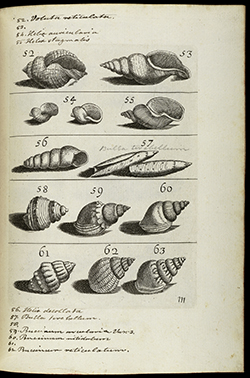 Filippo Buonanni publishes Ricreatione dell' occhio e della mente. — perhaps the first book devoted entirely to shells, for which he is considered a founder of conchology.
Filippo Buonanni publishes Ricreatione dell' occhio e della mente. — perhaps the first book devoted entirely to shells, for which he is considered a founder of conchology.
Edict of Fontainebleau outlaws Protestantism in France. King Charles II dies.
1685
(no entry for this year)
(no entry for this year)
1686
Timothy Nourse anticaptes eugenics with the argument that a gentleman "ought at least to be as careful of his race as he is of that of his horses, where the fairest and most beautiful are made choice of for breed."
(no entry for this year)
1687
(no entry for this year)
The Pennsylvania Quakers pass the first formal antislavery resolution.
1688
Giovanni Ciampini describes remains of the extinct straight-tusked elephant, Elephas antiquus, found in the town of Vitorchiano in the region of Latium.
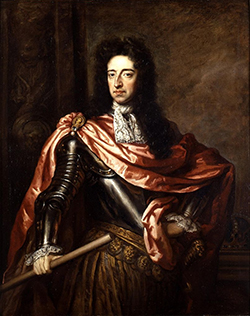 William III ascends to the throne over England, Scotland, and Ireland.
William III ascends to the throne over England, Scotland, and Ireland.
1689
(no entry for this year)
(no entry for this year)
1690
(no entry for this year)
South Carolina passes the first comprehensive slave codes.
Virginia passes the first anti-miscegenation law, forbidding marriages between whites and blacks or whites and Native Americans.
Virginia prohibits the manumission of slaves within its borders. Manumitted slaves are forced to leave the colony.
1691
(no entry for this year)
The colonies of Plymouth and Massachusetts are united.
Witchcraft mania begins to take over new England.
1692
(no entry for this year)
The College of William and Mary is founded in Williamsburg, Virginia, by a royal charter.
1693
Naturalist John Ray publishes Three Physicotheological Discourses about the Creation, the Deluge and the Conflagration, discussing conflicting theories about the nature of fossils.
Rice cultivation is introduced into Carolina. Slave importation increases dramatically.
The Bank of England is established.
1694
(no entry for this year)
(no entry for this year)
1695
(no entry for this year)
The Royal African Trade Company loses its monopoly and New England colonists enter the slave trade.
1696
(no entry for this year)
(no entry for this year)
1697
(no entry for this year)
Calcutta is founded by the English.
1698
Edward Lhwyd publishes a description of a "flatfish" in the Philosophical Transactions of the Royal Society. (The flatfish is really a trilobite, an ancient marine arthropod.)
(no entry for this year)
1699
Edward Lhwyd publishes a book devoted to British fossils. In it, he describes ichthyosaur remains as those of a fish.
Based on a dissection he performed the year before, Edward Tyson publishes Orang Outan, sive Homo sylvestris pointing out similarities between chimpanzee and human anatomy. (Although he has dissected an infant chimp, Tyson uses the term "orang-outan.")
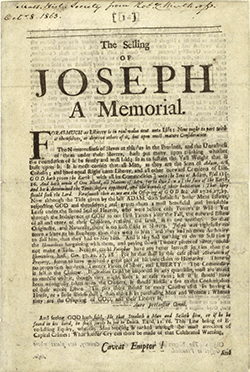 Samuel Sewall (1652-1730) publishes The Selling of Joseph — the first American protest against slavery.
Samuel Sewall (1652-1730) publishes The Selling of Joseph — the first American protest against slavery.
Pennsylvania legalizes slavery.
1700
(no entry for this year)
(no entry for this year)
1701
(no entry for this year)
New York passes An Act for Regulating Slaves. Among the prohibitions of this act are meetings of more than three slaves, trading by slaves, and testimony by slaves in court.
1702
(no entry for this year)
Delaware separates from Pennsylvania and becomes an independent colony.
Connecticut assigns the punishment of whipping to any slaves who disturb the peace or assault whites.
Massachusetts requires those masters who liberate slaves to provide a bond of 50 pounds or more in the event that the freedman becomes a public charge.
Rhode Island makes it illegal for blacks and Indians to walk at night without passes.
1703
(no entry for this year)
(no entry for this year)
1704
(no entry for this year)
Massachusetts makes marriage and sexual relations between blacks and whites illegal.
New York declares that punishment by execution will be applied to certain runaway slaves.
The Virginia Slave Code codifies slave status, declaring all non-Christian servants entering the colony to be slaves. It defines all slaves as real estate, acquits masters who kill slaves during punishment, forbids slaves and free colored peoples from physically assaulting white persons, and denies slaves the right to bear arms or move abroad without written permission.
1705
A giant fossil tooth is found along the banks of the Hudson River. It will initially be identified (by Cotton Mather) as that of a human giant who perished in Noah's flood, then correctly identified (by Georges Cuvier) as that of a mastodon.
Maria Sibylla Merian publishes Metamorphosis Insectorum Surinamensium describing insect species and other animals she has studied in Surinam.
The Ambonese Curiosity Cabinet by G.E. Rumphius is published. It provides detailed descriptions of soft and hard shellfish, minerals, rocks and fossils from Indonesia.
Connecticut requires that Indians, mulattos, and black servants gain permission from their masters to engage in trade.
New York declares blacks, Indians, and slaves who kill white people to be subject to the death penalty.
1706
(no entry for this year)
(no entry for this year)
1707
Hans Sloane publishes the first of two volumes describing the natural wonders of Jamaica. (The second volume will be published in 1725.)
Africans in the colony of South Carolina outnumber Europeans, making it the first English colony with a black majority.
Blacks outnumber whites in South Carolina.
Rhode Island requires that slaves be accompanied by their masters when visiting the homes of free persons.
The Southern colonies require militia captains to enlist and train one slave for every white soldier.
1708
(no entry for this year)
(no entry for this year)
1709
(no entry for this year)
New York forbids blacks, Indians, and mulattos from walking at night without lighted lanterns.
1710
(no entry for this year)
Great Britain's Queen Anne overrules a Pennsylvania colonial law prohibiting slavery.
Pennsylvania prohibits the importation of blacks and Indians.
Rhode Island prohibits the clandestine importation of black and Indian slaves.
Rio de Janeiro is captured by the French.
1711
(no entry for this year)
In Charleston, South Carolina slaves are forbidden from hiring themselves out.
New York declares it illegal for blacks, Indians, and slaves to murder other blacks, Indians, and slaves.
New York forbids freed blacks, Indians, and mulatto slaves from owning real estate and holding property.
Pennsylvania prohibits the importation of slaves.
Slave Revolt: New York Slaves in New York City kill whites during an uprising, later squelched by the militia. Nineteen rebels are executed.
1712
(no entry for this year)
England secures the exclusive right to transport slaves to the Spanish colonies in America.
1713
(no entry for this year)
1714
(no entry for this year)
Maryland declares all slaves entering the province and their descendants to be slaves for life.
Rhode Island legalizes slavery.
1715
(no entry for this year)
(no entry for this year)
1716
(no entry for this year)
New York enacts a fugitive slave law.
1717
William Stukely publishes An Account of the Almost Entire Sceleton of a Large Animal in a Very Hard Stone. The fossil is a plesiosaur, but is identified as a crocodile.
Dutch pharmacist Albertus Seba inventories his wonder cabinet for the avid collector Peter the Great, including 1,000 European insects and 400 animal specimens. The czar buys the inventory, and Seba begins his second collection, which he will describe in print starting in 1734.
(no entry for this year)
1718
(no entry for this year)
(no entry for this year)
1719
(no entry for this year)
(no entry for this year)
1720
(no entry for this year)
(no entry for this year)
1721
(no entry for this year)
(no entry for this year)
1722
(no entry for this year)
Virginia abolishes manumissions.
1723
(no entry for this year)
Louisiana's Code Noir is enacted in New Orleans to regulate black slavery and to banish Jews from the colony
French Louisiana prohibits slaves from marrying without the permission of their owners.
1724
(no entry for this year)
(no entry for this year)
1725
(no entry for this year)
(no entry for this year)
1726
(no entry for this year)
(no entry for this year)
1727
Balthasar Ehrhart identifies belemnites as fossil cephalopods.
(no entry for this year)
1728
Hans Sloane publishes two papers on fossils found in Siberia and North America arguing that they are fossil elephants, not giants or monsters.
The Qing Dynasty Emperor Yongzheng prohibits opium smoking in China. British refusal to comply with these anti-narcotics laws will ultimately lead to two wars (the Opium Wars) and the subjugation of China to Britain (and other western powers).
1729
In An Attempt towards a Natural History of England, John Woodward describes three "pinecones" that, upon later examination, will prove to be coprolites.
Louis Bourget's Lettres philosophiques sur la formation des sels et de cristaux et sur la génération et la méchanique organique (Philosophical letters on the formation of salts and crystals and on generation and organic mechanisms) makes the distinction between organic and inorganic growth.
The number of male and female slaves imported to the North American British colonies balances out for the first time.
1730
Otto Müller is among the first to see bacteria since Leeuwenhoek and the first to classify them into types.
The Spanish reverse a 1730 decision and declare that slaves fleeing to Florida from Carolina will not be sold or returned.
1731
 Jethro Tull's Horse-hoeing husbandry advocates the use of manure, pulverization of the soil, growing crops in rows, and hoeing to remove weeds.
Jethro Tull's Horse-hoeing husbandry advocates the use of manure, pulverization of the soil, growing crops in rows, and hoeing to remove weeds.
Slaves aboard the ship of New Hampshire Captain John Major kill both captain and crew, seizing the vessel and its cargo.
1732
 Nöel-Antoine Pluche publishes the first of eight volumes of Le spectacle de la nature (Spectacle of nature), popularizing "natural theology" in France.
Nöel-Antoine Pluche publishes the first of eight volumes of Le spectacle de la nature (Spectacle of nature), popularizing "natural theology" in France.
Quaker Elihu Coleman's A Testimony against That Anti-Christian Practice of Maling Slaves of Men is published.
1733
 Stephen Hales' Statical essays, containing haemastatics, etc., two volumes, reports his investigations on blood flow and pressure in animals and the hydrostatics of sap in plants.
Stephen Hales' Statical essays, containing haemastatics, etc., two volumes, reports his investigations on blood flow and pressure in animals and the hydrostatics of sap in plants.
(no entry for this year)
1734
 René de Réamure's Mémaoires pour servir à l'histoire des insects (History of insects) is one of the foundation works in entomology.
René de Réamure's Mémaoires pour servir à l'histoire des insects (History of insects) is one of the foundation works in entomology.
Georgia petitions Britain for the legalization of slavery.
Louis XV, King of France, declares that when an enslaved woman gives birth to the child of a free man, neither mother nor child can be sold. Further, after a certain time, mother and child will be freed.
Under an English law Georgia prohibits the importation and use of black slaves.
1735
 Systema Naturae (System of Nature) by Carolus Linnaeus introduces the system of classification for organisms that is still in use today.
Systema Naturae (System of Nature) by Carolus Linnaeus introduces the system of classification for organisms that is still in use today.
(no entry for this year)
1736
(no entry for this year)
An indentured black servant petitions a Massachusetts court and wins his freedom after the death of his master.
1737
Hermann Boerhaave prints Jan Swammerdam's Biblia naturae (Bible of nature), which was originally published to little notice in 1658. It contains his reports on the dissection of insects under a microscope.
 Linnaeus's Genera Plantorum (Genera of Plants) explains his method of systematic botany and classifies 18,000 species of plants.
Linnaeus's Genera Plantorum (Genera of Plants) explains his method of systematic botany and classifies 18,000 species of plants.
Georgia's trustees permit the importation of black slaves.
Spanish Florida promises freedom and land to runaway slaves.
1738
(no entry for this year)
Slaves in Stono, South Carolina rebel, sacking and burning an armory and killing whites. Some 75 slaves in South Carolina steal weapons and flee toward freedom in Florida (then under Spanish rule). Crushed by the South Carolina militia, the revolt results in the deaths of 40 blacks and 20 whiteThe colonial militia puts an end to the rebellion before slaves are able to reach freedom in Florida.
1739
Native Americans traveling with French soldiers find mastodon fossils along the Ohio River. The bones will be shipped back to France and become the first American fossils studied by scientists.
Georgia and Carolina attempt to invade Florida in retaliation for the territory's policy toward runaways.
South Carolina passes the comprehensive Negro Act, making it illegal for slaves to move abroad, assemble in groups, raise food, earn money, and learn to read English. Owners are permitted to kill rebellious slaves if necessary.
1740
(no entry for this year)
(no entry for this year)
1741
(no entry for this year)
(no entry for this year)
1742
Abraham Trembley makes the first permanent graft of animal tissue, using the Hydra.
(no entry for this year)
1743
(no entry for this year)
(no entry for this year)
1744
Abraham Trembley's Mémoires summarizes his research on the hydra and his discovery of regeneration in polyps.
Scholar and teacher Abraham Trembley publishes Mémoires Concerning the Natural History of a Type of Freshwater Polyp with Arms Shaped Like Horns. After watching them move and eat, he has concluded that the simple creatures (later to be classified as cnidarians) are animals, not plants.
(no entry for this year)
1745
 Traité d'insectologie (Treatise on insect ecology) by Charles Bonnet describes his observations on parthenogenetic reproduction and metamorphosis of aphids.
Traité d'insectologie (Treatise on insect ecology) by Charles Bonnet describes his observations on parthenogenetic reproduction and metamorphosis of aphids.
Bologna physician Vincenzo Menghini roasts the blood of fish, birds and mammals (including humans) then sifts through the residue with a magnetic blade, noting that roasted-blood particles adhere to it. The experiment provides evidence that blood contains iron.
(no entry for this year)
1746
(no entry for this year)
(no entry for this year)
1747
 Andreas Marggraf discovers sugar in beets, laying the foundation for Europe's sugar-beet industry.
Andreas Marggraf discovers sugar in beets, laying the foundation for Europe's sugar-beet industry.
(no entry for this year)
1748
 L'homme Machine (Man the Machine) by Julien Offray de la Mettrie describes humans as machines, without freedom or will.
L'homme Machine (Man the Machine) by Julien Offray de la Mettrie describes humans as machines, without freedom or will.
Georgia repeals its prohibition and permits the importation of black slaves.
1749
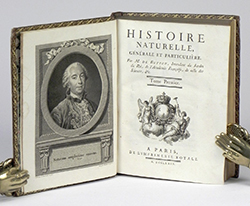 Georges-Louis Leclerc de Buffon publishes the first volume of Historie Naturelle. Thirty-six volumes came out between 1749 and 1789, followed by eight more after his death. The Histoire Naturelle was meant to address the whole of natural history, but actually covers only minerals, birds, and the quadrupeds among animals. It is accompanied by some discourses and a theory of the earth by way of introduction, and by supplements including an elegantly written account of the epochs of nature. The Histoire Naturelle had a distinctly mixed reception in the eighteenth century. Wealthy homes in both England and France purchased copies, and the first edition was sold out within six weeks. But Buffon was criticised by some priests for suggesting (in the essay Les Epoques de Nature, Volume XXXIV) that the earth was more than 6,000 years old and that mountains had arisen in geological time. The Paris faculty of theology, acting as the official censor, wrote to Buffon with a list of statements in the Histoire Naturelle that were contradictory to Roman Catholic Church teaching. In June, 2017, an antiquarian book deal offered a complete second edition of the Historie Naturelle for 14500 .
Georges-Louis Leclerc de Buffon publishes the first volume of Historie Naturelle. Thirty-six volumes came out between 1749 and 1789, followed by eight more after his death. The Histoire Naturelle was meant to address the whole of natural history, but actually covers only minerals, birds, and the quadrupeds among animals. It is accompanied by some discourses and a theory of the earth by way of introduction, and by supplements including an elegantly written account of the epochs of nature. The Histoire Naturelle had a distinctly mixed reception in the eighteenth century. Wealthy homes in both England and France purchased copies, and the first edition was sold out within six weeks. But Buffon was criticised by some priests for suggesting (in the essay Les Epoques de Nature, Volume XXXIV) that the earth was more than 6,000 years old and that mountains had arisen in geological time. The Paris faculty of theology, acting as the official censor, wrote to Buffon with a list of statements in the Histoire Naturelle that were contradictory to Roman Catholic Church teaching. In June, 2017, an antiquarian book deal offered a complete second edition of the Historie Naturelle for 14500 .
(no entry for this year)
1750
 Carolus Linnaeus's Philosophia Botanica rejects any notion of evolution and continues his work in classifying plants.
Carolus Linnaeus's Philosophia Botanica rejects any notion of evolution and continues his work in classifying plants.
John Needham publishes Nouvelles Observations Microscopiques arguing that decomposing plant and animal matter can spontaneously generate new life. Fifteen years later, Italian polymath Lazzaro Spallanzani will conduct a more careful set of experiments then publish a report rejecting Needham's conclusions.
Colonial South Carolina prohibits slaves from learning about or practicing medicine.
George II repeals the 1705 act, making slaves real estate in Virginia.
1751
 Linnaeus's Species Plantarum completes his development of the use of binary nomenclature in botany. The work still provides the foundation for the modern classification of species.
Linnaeus's Species Plantarum completes his development of the use of binary nomenclature in botany. The work still provides the foundation for the modern classification of species.
 Pierre-Louis de Maupertuis's Système de la Nature provides a theoretical speculation on heredity and the origin of species by chance.
Pierre-Louis de Maupertuis's Système de la Nature provides a theoretical speculation on heredity and the origin of species by chance.
(no entry for this year)
1752
(no entry for this year)
(no entry for this year)
1753
(no entry for this year)
The French and Indian War breaks out on the North American continent between the European powers Britain and France.
1754
(no entry for this year)
 The Great Lisbon Earthquake occurs, killing more than 60,000 people. The huge earthquake (estimated at 9.0 on the modern Richter scale) strikes Lisbon, Portugal, at 9:40 am, on 1 November, during church services for All Saint's Day. Because the earthquake hits on an important church holiday and destroys almost every important church in the city, much anxiety and confusion is generated amongst the citizens of this staunch and devout Roman Catholic city and country, which had been a major patron of the Church. Theologians speculate on the religious cause and message, seeing the earthquake as a manifestation of the anger of God. Some philosophers struggle to reconcile the event with the concept that humanity lives in the best of all possible worlds — a world closely supervised by a benevolent deity.
The Great Lisbon Earthquake occurs, killing more than 60,000 people. The huge earthquake (estimated at 9.0 on the modern Richter scale) strikes Lisbon, Portugal, at 9:40 am, on 1 November, during church services for All Saint's Day. Because the earthquake hits on an important church holiday and destroys almost every important church in the city, much anxiety and confusion is generated amongst the citizens of this staunch and devout Roman Catholic city and country, which had been a major patron of the Church. Theologians speculate on the religious cause and message, seeing the earthquake as a manifestation of the anger of God. Some philosophers struggle to reconcile the event with the concept that humanity lives in the best of all possible worlds — a world closely supervised by a benevolent deity.
1755
(no entry for this year)
(no entry for this year)
1756
(no entry for this year)
(no entry for this year)
1757
(no entry for this year)
Pennsylvania Quakers forbid their members from owning slaves or participating in the slave trade.
1758
Henri-Louis Duhamel du Monceau discovers that when he turns a seedling upside down, its roots and shoots reorient so that the root continues to grow downward while the shoot continues to grow upward.
The British capture Québec from the French.
1759
 In Theoria Generationis (his MD dissertation), Caspar Friedrich Wolff claims the existence of a vis essentialis — an essential force — that is at the heart of all living matter. He also describes the differentiation of tissues in a developing embryo, refuting the preformation concept — the idea that development consists in the growth of a fully formed, but miniature individual. His views were not well received.
In Theoria Generationis (his MD dissertation), Caspar Friedrich Wolff claims the existence of a vis essentialis — an essential force — that is at the heart of all living matter. He also describes the differentiation of tissues in a developing embryo, refuting the preformation concept — the idea that development consists in the growth of a fully formed, but miniature individual. His views were not well received.
The Kew Botanical Gardens open in London.
Jupiter Hammon of Long Island, New York, publishes a book of poetry. This is believed to be the first volume written and published by an African-American
New Jersey prohibits the enlistment of slaves in the militia without their master's permission.
 King George III ascends the English throne.
King George III ascends the English throne.
1760
 Joseph Gottlieb Kölreuter'S Vorläufige nachricht von einigen das geschlecht der pflantzen betreffende versuche and beobachtungen describes his research in heredity in plants.
Joseph Gottlieb Kölreuter'S Vorläufige nachricht von einigen das geschlecht der pflantzen betreffende versuche and beobachtungen describes his research in heredity in plants.
(no entry for this year)
1761
Jean-Baptiste Robinet's five-volume De la nature claims that organic species form a linear scale of progress, without gaps.
 Between 1761 and 1766, Joseph Gottlieb Kölreuter (Germany) demonstrates that hybrid offspring receive traits from both parents (pollen and ovule transmit genetic information), and are intermediate in most traits. First scientific hybrid produced (tobacco). Demonstrates the identity of reciprocal crosses. Notes hybrid vigor, segregation of offspring (parental and non-parental types) from a hybrid.
Between 1761 and 1766, Joseph Gottlieb Kölreuter (Germany) demonstrates that hybrid offspring receive traits from both parents (pollen and ovule transmit genetic information), and are intermediate in most traits. First scientific hybrid produced (tobacco). Demonstrates the identity of reciprocal crosses. Notes hybrid vigor, segregation of offspring (parental and non-parental types) from a hybrid.
Virginia restricts voting rights to white men.
 Catherine the Great becomes Empress of all the Russias after death of her husband.
Catherine the Great becomes Empress of all the Russias after death of her husband.
1762
 Charles Bonnet's Considerations sur les corps organisées gives his theory of "preformation" — the idea that each creature is already preformed in miniature in the egg, and that the egg contains all future generations in even smaller scale, ad infinitum.
Charles Bonnet's Considerations sur les corps organisées gives his theory of "preformation" — the idea that each creature is already preformed in miniature in the egg, and that the egg contains all future generations in even smaller scale, ad infinitum.
Charles Mason and Jeremiah Dixon begin surveying Mason-Dixon Line between Pennsylvania and Maryland.
 Chief Pontiac leads a Native American rebellion against British settlers in and around Detroit.
Chief Pontiac leads a Native American rebellion against British settlers in and around Detroit.
The French Indian War ends with the Treaty of Paris surrendering Canada to England.
1763
(no entry for this year)
(no entry for this year)
1764
(no entry for this year)
Britain enacts Quartering Act, requiring colonists to provide temporary housing to British soldiers.
Stamp Act passed; this is the first direct British tax on colonists.
1765
 Italian biologist Lazzaro Spallanzani suggests preserving food by sealing it in containers that do not permit air to penetrate.
Italian biologist Lazzaro Spallanzani suggests preserving food by sealing it in containers that do not permit air to penetrate.
Britain repeals the Stamp Act.
1766
 Albrecht von Haller is the first to show that nerves stimulate muscles to contract and that all nerves lead to the spinal cord and the brain.
Albrecht von Haller is the first to show that nerves stimulate muscles to contract and that all nerves lead to the spinal cord and the brain.
Britain passes Townshend Revenue Act levying taxes on America.
The Virginia House of Burgess boycotts the British slave trade in protest of the Townsend Acts. Georgia and the Carolinas follow suit.
1767
Benjamin Franklin writes a thank-you letter to a wealthy Irish trader for a box of proboscidian "tusks and grinders." Franklin believes the remains belong to elephants but makes astute observations about how their climate must have differed from the present.
 Britain's Capt. James Cook begins exploring the Pacific, putting ashore in such places as New Zealand and Australia.
Britain's Capt. James Cook begins exploring the Pacific, putting ashore in such places as New Zealand and Australia.
1768
 Lazzaro Spallanzani's Prodromo d'un ouvrage sur les reproductions animales (Foreword to a work on animal reproduction) tells of his demonstration that spontaneous generation of animals does not take place in tightly closed bottles that have been boiled for more than 30 minutes.
Lazzaro Spallanzani's Prodromo d'un ouvrage sur les reproductions animales (Foreword to a work on animal reproduction) tells of his demonstration that spontaneous generation of animals does not take place in tightly closed bottles that have been boiled for more than 30 minutes.
 Caspar Friedrich Wolff's De formatione intestinarum establishes principles of the formation of organs in embryos.
Caspar Friedrich Wolff's De formatione intestinarum establishes principles of the formation of organs in embryos.
 Father Junipero Serra founds Mission San Diego, first mission in California.
Father Junipero Serra founds Mission San Diego, first mission in California.
1769
 Charles Bonnet's Philosophical palingenesis, or ideas on the past and future states of living beings contains his view that the females of every species contain the germs of all future generations.
Charles Bonnet's Philosophical palingenesis, or ideas on the past and future states of living beings contains his view that the females of every species contain the germs of all future generations.
 Crispus Attucks, an escaped slave, becomes the first colonial resident to die for American independence when he is killed by the British in the Boston massacre.
Crispus Attucks, an escaped slave, becomes the first colonial resident to die for American independence when he is killed by the British in the Boston massacre.
Around 1770, the European slave trade with Africa reaches its peak, transporting nearly 80,000 enslaved Africans across the Atlantic annually.
Escaped slave, Crispus Attucks, is killed by British forces in Boston, Massachusetts. He is one of the first colonists to die in the war for independence.
1770
Erasmus Darwin has the allegorical motto E conchis omnia or "Everything from shells" painted on his carriage, promoting the idea of common descent. Bowing to social pressure, he removes it shortly thereafter.
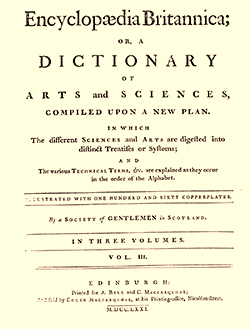 The first edition of the Encyclopedia Britannica is published.
The first edition of the Encyclopedia Britannica is published.
1771
In Gailenreuth Cave in Germany, Father Johann Esper finds human bones underlying those of extinct animals. He concludes that the bones got there by accident, an opinion Cuvier will share.
 Italian anatomist Luigi Galvani discovers accidentally the action of electricity on the muscles of the dissected frog: it causes a twitch.
Italian anatomist Luigi Galvani discovers accidentally the action of electricity on the muscles of the dissected frog: it causes a twitch.
Joseph Priestly discovers that a plant can produce enough breathable air to sustain a mouse and keep a candle burning. Though he describes it in different terms, he has discovered oxygen.
 On June 22, Lord Chief Mansfield rules in the James Somerset case that an enslaved person brought to England becomes free and cannot be returned to slavery. His ruling establishes the legal basis for the freeing of England's fifteen thousand slaves.
On June 22, Lord Chief Mansfield rules in the James Somerset case that an enslaved person brought to England becomes free and cannot be returned to slavery. His ruling establishes the legal basis for the freeing of England's fifteen thousand slaves.
James Albert Ukawsaw Gronniosaw's writes the first autobiographical slave narrative.
1772
(no entry for this year)
Jean Baptiste Point du Sable is the first settler in the community now known as Chicago. Point du Sable described himself as "a free mulatto man." He was married to a Potawatomi woman named Catherine some time in the 1770s.
 Phillis Wheatley of Boston publishes Poems on Various Subjects, Religious and Moral. This is the first book of poetry published by an African-American woman.
Phillis Wheatley of Boston publishes Poems on Various Subjects, Religious and Moral. This is the first book of poetry published by an African-American woman.
Phillis Wheatley becomes the first published African-American poet when a London publishing company releases a collection of her verse.
Slaves in Massachusetts unsuccessfully petition the government for their freedom.
The first separate black church in America is founded in South Carolina.
The "Boston Tea Party" occurs as a protest against British taxation policies.
1773
(no entry for this year)
Rhode Island becomes first colony to prohibit importation of slaves.
Connecticut, Rhode Island, and Georgia prohibit the importation of slaves.
The First Continental Congress bans trade with Britain and vows to discontinue the slave trade after the 1st of December.
Virginia takes action against slave importation.
1774
(no entry for this year)
Lord Dunmore, promises freedom to male slaves who join British army.
 General Washington forbids recruiting officers enlisting blacks to fight in defense of American freedom.
General Washington forbids recruiting officers enlisting blacks to fight in defense of American freedom.
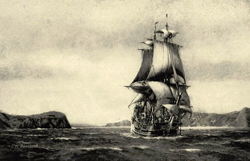 The first Spanish ship, the San Carlos, commanded by Juan Manuel de Ayala, enters San Francisco Bay.
The first Spanish ship, the San Carlos, commanded by Juan Manuel de Ayala, enters San Francisco Bay.
 The Grand Union flag is adopted by the American colonies in rebellion against England.
The Grand Union flag is adopted by the American colonies in rebellion against England.
Abolitionist Society Anthony Benezet of Philadelphia founds the world's first abolitionist society. Benjamin Franklin becomes its president in 1787.
In April, the first battles of the Revolutionary war are waged between the British and Colonial armies at Lexington and Concord, Massachusetts. Black Minutemen participate in the fighting.
In July, George Washington announces a ban on the enlistment of free blacks and slaves in the colonial army. By the end of the year, he reverses the ban, ordering the Continental Army to accept the service of free blacks.
In November, Virginia Governor John Murray, Lord Dunmore, issues a proclamation announcing that any slave fighting on the side of the British will be liberated.
The slave population in the colonies is nearly 500,000. In Virginia, the ratio of free colonists to slaves is nearly 1:1. In South Carolina it is approximately 1:2. 1775 Georgia takes action against slave importation.
Benjamin Franklin and Benjamin Rush form an anti-slavery group in Philadelphia.
The American Revolution begins with fighting at Lexington and Concord, Massachusetts.
The Continental Congress appoints George Washington head of the Continental Army.
1775
 Franz Anton Mesmer suggests that "animal magnetism" causes attractions between certain persons. Mesmer's name becomes the root of the English verb "mesmerize".
Franz Anton Mesmer suggests that "animal magnetism" causes attractions between certain persons. Mesmer's name becomes the root of the English verb "mesmerize".
 Johann Christian Fabricius's Systema Entomologiae classifies insects based on the structure of mouth organs rather than wings.
Johann Christian Fabricius's Systema Entomologiae classifies insects based on the structure of mouth organs rather than wings.
Presidio of San Francisco forms as a Spanish fort.
Continental Congress approves enlistment of free blacks .
Delaware prohibits the importation of African slaves.
In Philadelphia, Pennsylvania, members of the Continental Congress sign the Declaration of Independence.
In Philadelphia, Pennsylvania, the Society of Friends, also known as the Quakers, forbids its members from holding slaves.
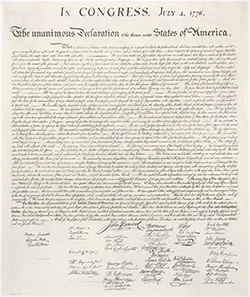 Declaration of Independence published. The Declaration of Independence is the statement adopted by the Second Continental Congress meeting at the Pennsylvania State House (Independence Hall) in Philadelphia on July 4, 1776, which announced that the thirteen American colonies, then at war with the Kingdom of Great Britain, regarded themselves as thirteen newly independent sovereign states, and no longer under British rule. Instead they formed a new nation — the United States of America. John Adams was a leader in pushing for independence, which was passed on July 2 with no opposing vote cast. A committee of five had already drafted the formal declaration, to be ready when Congress voted on independence. The term "Declaration of Independence" is not used in the document itself. Although Americans generally regard themselves as having been independent since July 4, 1776, in fact true, legal independence was not achieved until the Treaty of Paris was signed in 1783 and ratified by the Congress of the Confederation on January 14, 1784.
Declaration of Independence published. The Declaration of Independence is the statement adopted by the Second Continental Congress meeting at the Pennsylvania State House (Independence Hall) in Philadelphia on July 4, 1776, which announced that the thirteen American colonies, then at war with the Kingdom of Great Britain, regarded themselves as thirteen newly independent sovereign states, and no longer under British rule. Instead they formed a new nation — the United States of America. John Adams was a leader in pushing for independence, which was passed on July 2 with no opposing vote cast. A committee of five had already drafted the formal declaration, to be ready when Congress voted on independence. The term "Declaration of Independence" is not used in the document itself. Although Americans generally regard themselves as having been independent since July 4, 1776, in fact true, legal independence was not achieved until the Treaty of Paris was signed in 1783 and ratified by the Congress of the Confederation on January 14, 1784.
 Adam Smith publishes The Wealth of Nations, which lays the foundation for free-market capitalism.
Adam Smith publishes The Wealth of Nations, which lays the foundation for free-market capitalism.
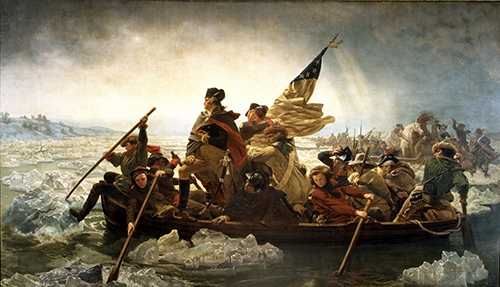 Washington leads the Continental Army in a crossing of the Delaware River, beginning on Christmas Day. The crossing catches the British army unaware, resulting in a victory for the rebel forces.
Washington leads the Continental Army in a crossing of the Delaware River, beginning on Christmas Day. The crossing catches the British army unaware, resulting in a victory for the rebel forces.
1776
Abbé Jacques-François Dicquemare describes reptilian fossils in Journal de Physique but refrains from speculating about their sources.
San Jose, California, is founded on orders from Antonio María de Bucareli y Ursúa, Spanish Viceroy of New Spain, thus providing an answer to the not-yet-asked question, Do you know the way to San Jose?
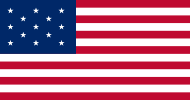 Continental Congress adopts the Stars and Stripes replacing the Grand Union flag. The new flag has thirteen stars and thirteen stripes, representing the thirteen original states: Delaware, Pennsylvania, New Jersey, Georgia, Connecticut, Massachusetts, Maryland, South Carolina, New Hampshire, Virginia, New York, North Carolina, and Rhode Island.
Continental Congress adopts the Stars and Stripes replacing the Grand Union flag. The new flag has thirteen stars and thirteen stripes, representing the thirteen original states: Delaware, Pennsylvania, New Jersey, Georgia, Connecticut, Massachusetts, Maryland, South Carolina, New Hampshire, Virginia, New York, North Carolina, and Rhode Island.
Vermont amends its constitution to ban slavery. Over the next 25 years, other Northern states emancipate their slaves and ban the institution: Pennsylvania, 1780; Massachusetts and New Hampshire, 1783; Connecticut and Rhode Island, 1784; New York, 1799; and New Jersey, 1804. Some of the state laws stipulate gradual emancipation.
New York enfranchises all free propertied men regardless of color or prior servitude.
Vermont is the first of the thirteen colonies to abolish slavery and enfranchise all adult males.
1777
(no entry for this year)
Rhode Island forbids the removal of slaves from the state.
Virginia prohibits the importation of slaves.
1778
(no entry for this year)
 Capt. James Cook dies during a skirmish in Hawaii.
Capt. James Cook dies during a skirmish in Hawaii.
1779
 Jan Ingenhousz discovers two distinct respiratory cycles in plants: at night oxygen is absorbed and carbon dioxide is exhaled; during the day carbon dioxide is absorbed and oxygen is exhaled. The exact nature of the exhaled gases becomes clear with the later discoveries by Lavoisier.
Jan Ingenhousz discovers two distinct respiratory cycles in plants: at night oxygen is absorbed and carbon dioxide is exhaled; during the day carbon dioxide is absorbed and oxygen is exhaled. The exact nature of the exhaled gases becomes clear with the later discoveries by Lavoisier.
Jan Ingenhousz discovers photosynthesis: In Experiments on Vegetables Ingenhousz shows that sunlight is essential for the production of oxygen by leaves.
The peculiar inheritance of human color-blindness reported to The Royal Society of London by Michael Lort.
 Lazzaro Spallanzani studies the role of semen in fertilization and learns that the sperm must make physical contact with the egg for fertilization to take place.
Lazzaro Spallanzani studies the role of semen in fertilization and learns that the sperm must make physical contact with the egg for fertilization to take place.
Massachusetts abolishes slavery and grants African-American men the right to vote.
A freedom clause in the Massachusetts constitution is interpreted as an abolishment of slavery. Massachusetts enfranchises all men regardless of race.
Delaware makes it illegal to enslave imported Africans.
Pennsylvania begins gradual emancipation.
Great Hurricane of 1780 — the deadliest Atlantic hurricane on record — kills 20,000 to 30,000 in Caribbean.
1780
(no entry for this year)
Los Angeles, California, is founded by 54 settlers, including 26 of African ancestry.
 Immanuel Kant publishes Critique of Pure Reason, a fundamental work of modern philosophy.
Immanuel Kant publishes Critique of Pure Reason, a fundamental work of modern philosophy.
1781
(no entry for this year)
Britain signs agreement recognizing U.S. independence.
Congress approves Great Seal of U.S. and the eagle as its symbol.
1782
(no entry for this year)
American Revolution Ends Britain and the infant United States sign the Peace of Paris treaty.
Earthquakes ravage Calabria in Italy, killing 30,000.
1783
(no entry for this year)
John Jay becomes first U.S. Secretary of State.
Russian trappers established a colony on Kodiak Island, Alaska.
Congress narrowly defeats Thomas Jefferson's proposal to ban slavery in new territories after 1800.
Treaty of Paris ratified, officially ending the American Revolutionary War
Congress of the Confederation ratifies the Treaty of Paris on January 14, 1784, formally ending the Revolutionary War.
John Wesley charters Methodist Church.
1784
Historian and naturalist Cosimo Alessandro Collini publishes a description of the first known pterosaur.
New York frees all slaves who served in the Revolutionary Army.
Napoleon Bonaparte (16) graduates from the military academy in Paris (42nd in a class of 51).
1785
 Lazzaro Spallanzani performs artificial insemination on a dog.
Lazzaro Spallanzani performs artificial insemination on a dog.
 Frederick the Great, King of Prussia, dies.
Frederick the Great, King of Prussia, dies.
1786
(no entry for this year)
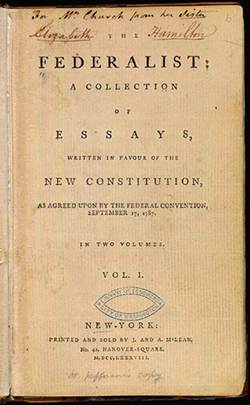 Federalist Papers published, calls for ratification of Constitution. The Federalist (later known as The Federalist Papers) is a collection of 85 articles and essays written (under the pseudonym Publius) by Alexander Hamilton, James Madison, and John Jay promoting the ratification of the United States Constitution. Seventy-seven were published serially in the Independent Journal and the New York Packet between October 1787 and August 1788. A compilation of these and eight others, called The Federalist: A Collection of Essays, Written in Favour of the New Constitution, as Agreed upon by the Federal Convention, September 17, 1787, was published in two volumes in 1788 by J. and A. McLean. The collection's original title was The Federalist; the title The Federalist Papers did not emerge until the 20th century. This book should be carefully read by anyone with an interest in American democracy.
Federalist Papers published, calls for ratification of Constitution. The Federalist (later known as The Federalist Papers) is a collection of 85 articles and essays written (under the pseudonym Publius) by Alexander Hamilton, James Madison, and John Jay promoting the ratification of the United States Constitution. Seventy-seven were published serially in the Independent Journal and the New York Packet between October 1787 and August 1788. A compilation of these and eight others, called The Federalist: A Collection of Essays, Written in Favour of the New Constitution, as Agreed upon by the Federal Convention, September 17, 1787, was published in two volumes in 1788 by J. and A. McLean. The collection's original title was The Federalist; the title The Federalist Papers did not emerge until the 20th century. This book should be carefully read by anyone with an interest in American democracy.
Constitutional convention opens at Philadelphia, George Washington presiding.
The Northwest Ordinance bans slavery in the Northwest Territory (what becomes the states of Ohio, Indiana, Illinois, Michigan, and Wisconsin). The ordinance together with state emancipation laws create a free North.
Austrian emperor Jozef II bans children under 8 from labor.
1787
(no entry for this year)
Maryland votes (December 23) to cede a ten-square-mile area for District of Columbia.
New York City becomes first capital of US.
The Massachusetts General Court (legislature), following an incident in which free blacks were kidnapped and transported to the island of Martinique, declares the slave trade illegal and provides monetary damages to victims of kidnappings.
Captain Arthur Phillip forms English colony at Sydney, Botany Bay, New South Wales, Australia.
 Kant publishes Critique of Practical Reason.
Kant publishes Critique of Practical Reason.
1788
Juan-Bautista Bru mounts the first relatively accurate fossil reconstruction of an extinct animal from South America. Georges Cuvier classifies it as a giant sloth.
US Congress passes Federal Judiciary Act, creating a six-person Supreme Court.
 George Washington becomes the first president of the United States.
George Washington becomes the first president of the United States.
 Fletcher Christian leads Mutiny on HMS Bounty and Captain William Bligh. Mutineers from the Bounty settle on Pitcairn Island.
Fletcher Christian leads Mutiny on HMS Bounty and Captain William Bligh. Mutineers from the Bounty settle on Pitcairn Island.
 Former slave Olaudah Equiano publishes his memoirs, and he travels in Britain lecturing against slavery.
Former slave Olaudah Equiano publishes his memoirs, and he travels in Britain lecturing against slavery.
The fall of the Bastille marks the beginning of the French Revolution.
1789
 Gilbert White's The Natural History and Antiquities of Selborne, a series of notes about animal and plant life in Selborne, England, is the first recognizable work of ecology. It goes through about 300 different editions and is still in print today.
Gilbert White's The Natural History and Antiquities of Selborne, a series of notes about animal and plant life in Selborne, England, is the first recognizable work of ecology. It goes through about 300 different editions and is still in print today.
 Johann Wolfgang Goethe's Versuch, die Metamorphose der Pflanzen zu erklären (Attempt to explain the metamorphosis of plants) claims incorrectly that all plant structures are modified leaves, but clearly espouses evolution.
Johann Wolfgang Goethe's Versuch, die Metamorphose der Pflanzen zu erklären (Attempt to explain the metamorphosis of plants) claims incorrectly that all plant structures are modified leaves, but clearly espouses evolution.
First U.S. census is conducted, showing a population of 3,939,214.
Society of Friends petitions Congress for abolition of slavery.
The first ten amendments to the US Constitution — The Bill of Rights — are ratified.
Washington, D.C., founded as the capitol of the United States.
1790
German poet Johann Wolfgang von Goethe writes The Morphology of Plants stating that all plant organs, flowers included, began as leaves — an assertion that will enjoy some support from 21st-century genetic research.
Vermont admitted as 14th state (first addition to the original thirteen colonies).
1791
(no entry for this year)
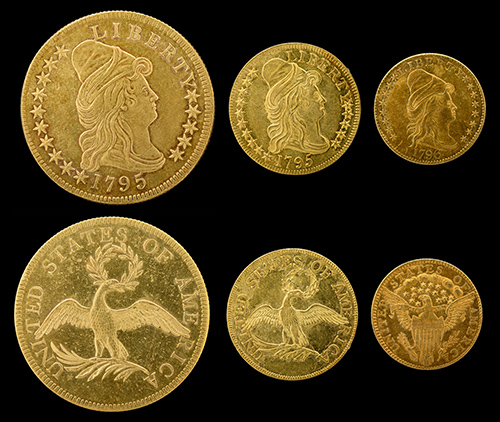 The Coinage Act of 1792 (also known as the Mint Act; officially: An act establishing a mint, and regulating the Coins of the United States), passed by the United States Congress on April 2, 1792, created the United States dollar as the country's standard unit of money, established the United States Mint, and regulated the coinage of the United States. This act established the silver dollar as the unit of money in the United States, declared it to be lawful tender, and created a decimal system for U.S. currency. The Act specified the issuing of three gold coins comprising a $10 gold coin called an "eagle", a $5 coin called a "half eagle", and a $2.5 coin called a "quarter eagle". The Act also authorized construction of a mint building in Philadelphia, the nation's capital at the time. This was the first federal building erected under the United States Constitution. Adjusted for inflation, the ten-dollar coin would be worth $231.00 in today's money. As collector's items, these gold coins have sold for more than $100,000 each.
The Coinage Act of 1792 (also known as the Mint Act; officially: An act establishing a mint, and regulating the Coins of the United States), passed by the United States Congress on April 2, 1792, created the United States dollar as the country's standard unit of money, established the United States Mint, and regulated the coinage of the United States. This act established the silver dollar as the unit of money in the United States, declared it to be lawful tender, and created a decimal system for U.S. currency. The Act specified the issuing of three gold coins comprising a $10 gold coin called an "eagle", a $5 coin called a "half eagle", and a $2.5 coin called a "quarter eagle". The Act also authorized construction of a mint building in Philadelphia, the nation's capital at the time. This was the first federal building erected under the United States Constitution. Adjusted for inflation, the ten-dollar coin would be worth $231.00 in today's money. As collector's items, these gold coins have sold for more than $100,000 each.
U.S. postal service created; postage 6–12 cents, depending on distance. (In today's dollars, that would be somewhere between $1.40 and $3.00.)
Captain George Vancouver claims Puget Sound for Britain.
France declares war on Austria, starting French Revolutionary Wars.
The French Republic is proclaimed.
Twenty-four merchants form New York Stock Exchange at 70 Wall Street.
1792
(no entry for this year)
To enforce Article IV, Section 2, the U.S. Congress enacts the Fugitive Slave Law. It allows slaveowners to cross state lines to recapture their slaves. They must then prove ownership in a court of law. In reaction, some Northern states pass personal liberty laws, granting the alleged fugitive slaves the rights to habeas corpus, jury trials, and testimony on their own behalf. These Northern state legislatures also pass anti-kidnapping laws to punish slave-catchers who kidnap free blacks, instead of fugitive slaves.
 King Louis XVI of France is executed.
King Louis XVI of France is executed.
1793
Reverend James Douglas publishes Nenia Britannica; or, A Sepulchral History of Great Britain providing perhaps the first record of a fossil (sea urchin) at an archaeological site.
Slavery abolished in the French colonies.
1794
 Erasmus Darwin (Charles' grandfather) publishes Zoonomia, or the Laws of Organic Life.
Erasmus Darwin (Charles' grandfather) publishes Zoonomia, or the Laws of Organic Life.
James Hutton publishes An Investigation of the Principles of Knowledge. Buried in the 2,138-page philosophical tome is a chapter about variety in nature in which Hutton anticipates Charles Darwin's theory of natural selection.
 John Dalton's Extraordinary facts relating to the vision of colors gives an early account of red-green color blindness, which he refers to as Daltonism, since he is afflicted with the condition.
John Dalton's Extraordinary facts relating to the vision of colors gives an early account of red-green color blindness, which he refers to as Daltonism, since he is afflicted with the condition.
 Zoonomia, or the Laws of Organic Life by Erasmus Darwin (grandfather of Charles Darwin) contains his ideas about evolution, which are Lamarckian in that they assume the environment has a direct influence on organisms, causing permanent changes in the germ line.
Zoonomia, or the Laws of Organic Life by Erasmus Darwin (grandfather of Charles Darwin) contains his ideas about evolution, which are Lamarckian in that they assume the environment has a direct influence on organisms, causing permanent changes in the germ line.
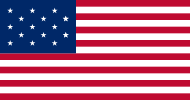 The US flag is modified to have fifteen stars and fifteen stripes, reflecting the addition of two new states: Vermont and Kentucky. This is the only US flag to have other than thirteen stripes.
The US flag is modified to have fifteen stars and fifteen stripes, reflecting the addition of two new states: Vermont and Kentucky. This is the only US flag to have other than thirteen stripes.
1795
 James Hutton's Theory of the Earth published, interpreting certain geological strata as former sea beds. Hutton proposes geological theory of gradualism.
James Hutton's Theory of the Earth published, interpreting certain geological strata as former sea beds. Hutton proposes geological theory of gradualism.
Johann Friedrich Blumenbach publishes De generis humani varietate nativa liber arguing that humans comprise a single species with five varieties: Caucasian, Mongolian, Ethiopian, (American) Indian and Malayan.
George Washington declines a third term as President, gives his Farewell Address.
1796
(no entry for this year)
Napoleon invades Egypt and defeats the Egyptians at the Battle of the Pyramids.
1798
 Publication of Thomas Malthus' Essay on the Principle of Population, a work that Darwin asserted helped him frame the principle of evolution by natural selection.
Publication of Thomas Malthus' Essay on the Principle of Population, a work that Darwin asserted helped him frame the principle of evolution by natural selection.
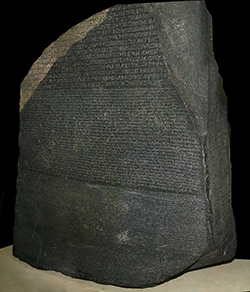 The Rosetta Stone is discovered in Egypt. The stone is a fragment of an Egyptian stele with the same inscription in three texts: ancient Egyptian hieroglyphs, Egyptian demotic script, and Greek. This side-by-side translation allows historians to translate ancient Egyptian hieroglyphs for the first time.
The Rosetta Stone is discovered in Egypt. The stone is a fragment of an Egyptian stele with the same inscription in three texts: ancient Egyptian hieroglyphs, Egyptian demotic script, and Greek. This side-by-side translation allows historians to translate ancient Egyptian hieroglyphs for the first time.
 Napoleon Bonaparte becomes First Consul and seizes power in France.
Napoleon Bonaparte becomes First Consul and seizes power in France.
1799
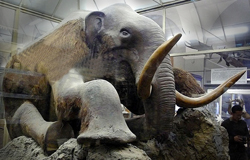 The first mammoth fossil fully documented by modern science is discovered near the delta of the Lena River in 1799 by Ossip Schumachov, a Siberian hunter. Schumachov allows it to thaw (a process taking several years) until he can retrieve the tusks for sale to the ivory trade in Yakutsk. He then abandons the specimen, allowing it to decay before its recovery. In 1806, Russian botanist Mikhail Adams rescues what remained of the specimen and brought it to the Zoological Museum of the Zoological Institute of the Russian Academy of Sciences in St. Petersburg. The specimen, which became known as the Adams Mammoth, is stuffed and mounted, and continues to be on display at the Zoological Institute.
The first mammoth fossil fully documented by modern science is discovered near the delta of the Lena River in 1799 by Ossip Schumachov, a Siberian hunter. Schumachov allows it to thaw (a process taking several years) until he can retrieve the tusks for sale to the ivory trade in Yakutsk. He then abandons the specimen, allowing it to decay before its recovery. In 1806, Russian botanist Mikhail Adams rescues what remained of the specimen and brought it to the Zoological Museum of the Zoological Institute of the Russian Academy of Sciences in St. Petersburg. The specimen, which became known as the Adams Mammoth, is stuffed and mounted, and continues to be on display at the Zoological Institute.
Charles White publishes An Account of the Regular Gradation in Man, and in Different Animals and Vegetables, a treatise on the great chain of being, showing people of color at the bottom of the human chain.
Faujas publishes a description of the Maastricht animal, a spectacular mosasaur found in chalk quarries in the Netherlands, describing it as a crocodile.
Thomas Jefferson publishes a paper describing Megalonyx, a North American fossil ground sloth similar to the one found in South America.
George Shaw publishes a description of a platypus even though he suspects the odd animal might be a hoax.
(no entry for this year)
1800
 Between 1800 and 1803, naturalist Alexander von Humboldt visits Mexico and writes influential accounts of his observations.
Between 1800 and 1803, naturalist Alexander von Humboldt visits Mexico and writes influential accounts of his observations.
 Karl Friedrich Burdach coins the term BIOLOGY to denote the study of human morphology, physiology and psychology.
Karl Friedrich Burdach coins the term BIOLOGY to denote the study of human morphology, physiology and psychology.
Erasmus Darwin publishes Phytologia declaring that leaves breathe air through tiny pores, sugar and starch are the products of plant "digestion," and nitrates and phosphorus promote vegetation.
 Thomas Jefferson becomes the third president of the United States.
Thomas Jefferson becomes the third president of the United States.
Ireland and Great Britain, England and Scotland, form United Kingdom.
1801
 Jean-Baptiste Lamarck's Système de Animaux sans Vertèbres (System for Animals without Vertebrae) includes a classification system for invertebrates and a preliminary view of his ideas of evolution.
Jean-Baptiste Lamarck's Système de Animaux sans Vertèbres (System for Animals without Vertebrae) includes a classification system for invertebrates and a preliminary view of his ideas of evolution.
The Ohio Constitution outlaws slavery. It also prohibits free blacks from voting.
1802
In Natural Theology, William Paley uses the analogy of a watch requiring a watchmaker to argue that the universe implies an intelligent designer.

 Gottfried Treviranus and Jean Baptiste de Lamarck independently broaden the meaning of BIOLOGY to include the study of all living things.
Gottfried Treviranus and Jean Baptiste de Lamarck independently broaden the meaning of BIOLOGY to include the study of all living things.
U.S. President Thomas Jefferson appoints Meriwether Lewis and William Clark to explore the uncharted West. Among the marvels Lewis and Clark are expected to find are erupting volcanoes, mountains of salt, unicorns, living mastodons and seven-foot-tall beavers. They will find none of these, but will find fossils.
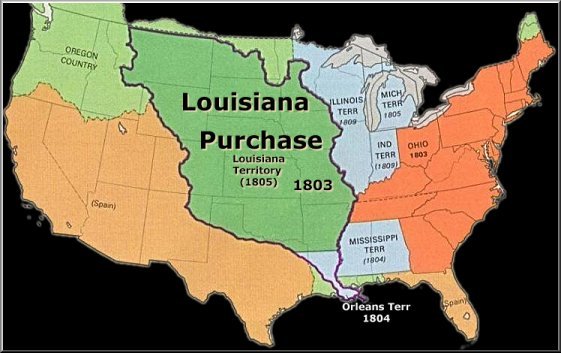 US buys large tract of land from France — The Louisiana Purchase.
US buys large tract of land from France — The Louisiana Purchase.
1803
(no entry for this year)

 Meriwether Lewis and William Clark begin their exploration of the Louisiana territory.
Meriwether Lewis and William Clark begin their exploration of the Louisiana territory.
1804
Georges Cuvier suggests that fossils found in the area around Paris are "thousands of centuries" old. This casual observation pushes the age of the Earth well beyond its commonly accepted limits. Cuvier also publishes a paper explaining that the fossil animals he has studied bear no resemblance to anything still living, an unambiguous endorsement of the theory of extinction.
James Parkinson publishes the first of a three-volume work entitled Organic Remains of a Former World. In this volume, he describes fossils as the remains of Noah's Flood. In the next several years, he will recognize fossils as the remains of a world before people, and acknowledge as much in the third volume, published in 1811.
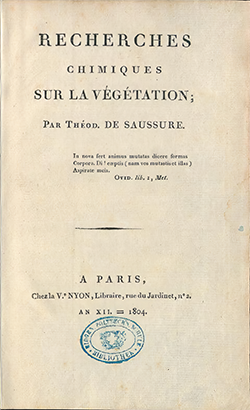 Nicolas-Théodore de Saussure's Recherches chimiques sur la végétation "Chemical researches on vegetation" shows that plants require carbon dioxide from the air and nitrogen from the soil. Earlier researchers had assumed the plants got carbon from the soil instead of from the air.
Nicolas-Théodore de Saussure's Recherches chimiques sur la végétation "Chemical researches on vegetation" shows that plants require carbon dioxide from the air and nitrogen from the soil. Earlier researchers had assumed the plants got carbon from the soil instead of from the air.
 Britain's Lord Nelson defeats the Franco-Spanish fleet at the Battle of Trafalgar. Lord Nelson is killed, but his victory ends Napoleons power at sea and makes a French invasion of Britain impossible.
Britain's Lord Nelson defeats the Franco-Spanish fleet at the Battle of Trafalgar. Lord Nelson is killed, but his victory ends Napoleons power at sea and makes a French invasion of Britain impossible.
1805
 The field of comparative anatomy begins, with the publications of Baron Georges Cuvier's Lesson in Comparative Anatomy
The field of comparative anatomy begins, with the publications of Baron Georges Cuvier's Lesson in Comparative Anatomy
(no entry for this year)
1806
(no entry for this year)
The Slave Trade Act 1807 or the Abolition of the Slave Trade Act 1807, was an Act of the Parliament of the United Kingdom passed on 25 March 1807, with the title of "An Act for the Abolition of the Slave Trade". The original act is in the Parliamentary Archives. The act abolished the slave trade in the British Empire, in particular the Atlantic slave trade, and also encouraged British action to press other European states to abolish their slave trades, but it did not abolish slavery itself.
1807
(no entry for this year)
United States Bans Slave Trade Importing African slaves is outlawed, but smuggling continues.
The US prohibits the importation of new slaves from Africa (but the holding of existing slaves and their descendents remains legal).
1808
(no entry for this year)
 12 Feb 1809
12 Feb 1809
Abraham Lincoln is born
 James Madison becomes the fourth president of the United States.
James Madison becomes the fourth president of the United States.
1809
 12 Feb 1809
12 Feb 1809
Charles Darwin is born
 Jean Baptiste de Lamarck's theory of evolution presented with the publication of his Philosophie Zoologique, which emphasized the fundamental unity of life and the capacity of species to vary.
Jean Baptiste de Lamarck's theory of evolution presented with the publication of his Philosophie Zoologique, which emphasized the fundamental unity of life and the capacity of species to vary.
(no entry for this year)
1810
Mary Anning's brother Joseph discovers the world's first recognized fossil ichthyosaur. Mary Anning will collect the fossil the next year.
"Luddites" destroy industrial machines in North England, in protest over too rapid modernization.
1811
Georges Cuvier identifies the "biblical flood" victim, described by Johann Jakob Scheuchzer in 1731, as a giant salamander.
Between 1812 and 1815, the United States and Great Britain fight the War of 1812.
Napoleon invades Russia; he captures Moscow, but unable to spend the winter there when the city catches fire, he marches his army back to France, experiencing tremendous losses along the way.
US declares war on Britain — War of 1812 begins.
1812
Georges Cuvier correctly identifies pterosaurs as flying reptiles. His conclusions will be largely ignored for many years.
(no entry for this year)
1813
 Swiss-French botanist Augustin Pyramus de Candolle introduces the word TAXONOMY in his lifelong project of a 21-volume plant encyclopedia. Seven volumes are published during his lifetime, the remainder after his death.
Swiss-French botanist Augustin Pyramus de Candolle introduces the word TAXONOMY in his lifelong project of a 21-volume plant encyclopedia. Seven volumes are published during his lifetime, the remainder after his death.
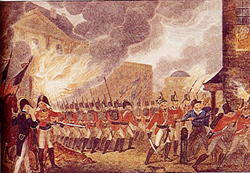 The British army burns down the White House in Washington DC.
The British army burns down the White House in Washington DC.
The defeat of the Creeks by Andrew Jackson begins the forced departure of Indian peoples from the South.
1814
(no entry for this year)
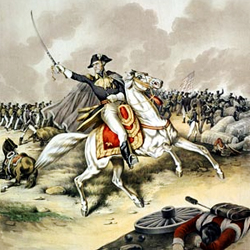 Three thousand troops of the United States Army, led by General Andrew Jackson, defeat the British at the Battle of New Orleans. Six hundred of the US troops are African-American.
Three thousand troops of the United States Army, led by General Andrew Jackson, defeat the British at the Battle of New Orleans. Six hundred of the US troops are African-American.

 An Allied army, led by Britain's Duke of Wellington, defeats Napoleon at the Battle of Waterloo.
An Allied army, led by Britain's Duke of Wellington, defeats Napoleon at the Battle of Waterloo.
1815
(no entry for this year)
Shaka becomes ruler of the Zulu Kingdom; his disciplined and mobile army conquers many peoples of southeastern Africa.
1816
(no entry for this year)
1817
Russian biologist Heinz Christian Pander studies the chick embryo and discovers the germ layers (i.e., three distinct regions of the embryo that give rise to the specific organ systems). Because of these findings, he is considered by many to be the "founder of embryology".
 Georges Cuvier's Le règne animal distribué d'après son organisation (The animal kingdom, distributed according to its organization) gives an account of the whole animal kingdom, dividing it into four distinct groups.
Georges Cuvier's Le règne animal distribué d'après son organisation (The animal kingdom, distributed according to its organization) gives an account of the whole animal kingdom, dividing it into four distinct groups.
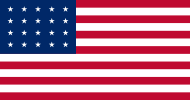 The US flag is modified to have twenty stars, reflecting the addition of five new states: Indiana, Louisiana, Mississippi, Ohio, and Tennessee. The number of stripes is returned to thirteen (both to symbolize the original thirteen states and to avoid having the number of stripes get so large that the flag would seem pink). From this point on, the US flag will have the same overall design, with changes in the number of stars used to denote the addition of new states.
The US flag is modified to have twenty stars, reflecting the addition of five new states: Indiana, Louisiana, Mississippi, Ohio, and Tennessee. The number of stripes is returned to thirteen (both to symbolize the original thirteen states and to avoid having the number of stripes get so large that the flag would seem pink). From this point on, the US flag will have the same overall design, with changes in the number of stars used to denote the addition of new states.
1818
(no entry for this year)
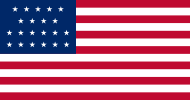 The US flag is modified to have twenty-one stars, reflecting the addition of one new state: Illinois.
The US flag is modified to have twenty-one stars, reflecting the addition of one new state: Illinois.
The Canadian government refuses to cooperate with the American government in the apprehension of fugitive slaves living in Canada. Consequently Canada becomes the destination for 40,000 fugitive slaves from United States between 1819 in 1861.
 The SS Savannah was an American hybrid sailing ship/side-wheel steamer built in 1818. She becomes the first steamship to cross the Atlantic Ocean, a feat accomplished during May–June, 1819. The Savannah was converted back into a sailing ship after returning from Europe. She was wrecked of Long Island in 1821.
The SS Savannah was an American hybrid sailing ship/side-wheel steamer built in 1818. She becomes the first steamship to cross the Atlantic Ocean, a feat accomplished during May–June, 1819. The Savannah was converted back into a sailing ship after returning from Europe. She was wrecked of Long Island in 1821.
The United States purchases Florida from Spain.
1819
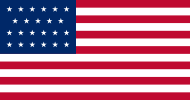 The US flag is modified to have twenty-three stars, reflecting the addition of two new states: Alabama and Maine.
The US flag is modified to have twenty-three stars, reflecting the addition of two new states: Alabama and Maine.
Debate over slavery in the US heats up; The Missouri Compromise admits Maine into the Union as a free state, with Missouri to enter the next year as a slave state. Slavery is banned north of the 36 30' line of latitude in the Louisiana Territory.
Missouri Compromise Missouri is admitted to the Union as a slave state, Maine as a free state. Slavery is forbidden in any subsequent territories north of latitude .
The first Christian missionaries arrived in the Hawaiian Islands.
1820
 Christian Friedrich Nasse formulated Nasse's law: hemophilia occurs only in males and is passed on by unaffected females.
Christian Friedrich Nasse formulated Nasse's law: hemophilia occurs only in males and is passed on by unaffected females.
Gideon Mantell discovers, in England, a fossil trunk of a tree resembling that of a tropical palm, evidence of a much warmer climate.
(no entry for this year)
1821
(no entry for this year)
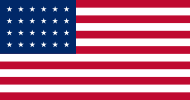 The US flag is modified to have twenty-four stars, reflecting the addition of one new state: Missouri.
The US flag is modified to have twenty-four stars, reflecting the addition of one new state: Missouri.
Slave Revolt: South Carolina Freed slave Denmark Vesey attempts a rebellion in Charleston. Thirty-five participants in the ill-fated uprising are hanged.
1822
Etienne Geoffroy publishes Anatomical Philosophy discussing similarities between skeletal structures — such as bat wings, paws and hands — that support the evolutionary claims of Lamarck. He also argues that arthropods and vertebrates have similar but inverse body plans, an assertion that will ultimately be widely accepted.
 Between 1822-1824, Thomas Andrew Knight, John Goss, and Alexander Seton all independently perform crosses with the pea and observe dominance in the immediate progeny, and segregation of various hereditary characters in the next generation. However, they do not study later generations or determine the numerical ratios in which the characters are transmitted.
Between 1822-1824, Thomas Andrew Knight, John Goss, and Alexander Seton all independently perform crosses with the pea and observe dominance in the immediate progeny, and segregation of various hereditary characters in the next generation. However, they do not study later generations or determine the numerical ratios in which the characters are transmitted.
William Buckland publishes an account of how ancient hyenas lived and fed in Kirkdale Cave, based on their fossil remains. This is one of the first descriptions of living habits based on fossil evidence.
Slavery is abolished in Chile.
1823
 Thomas Andrew Knight confirms reports of dominance, recessivity, and segregation in peas, but does not detect regularities.
Thomas Andrew Knight confirms reports of dominance, recessivity, and segregation in peas, but does not detect regularities.
William Buckland finds a skeleton covered in ocher. Called the Red Lady, it will later be identified as Cro-Magnon (and male).
Mexico outlaws slavery. This decision creates the incentive for Anglo Texans to fight for independence in 1835-1836.
Mexico becomes a republic, three years after declaring independence from Spain.
1824
William Buckland publishes Notice on the Megalosaurus ("giant lizard"), the first dinosaur fossil to be described and named, although the term "dinosaur" doesn't yet exist. Buckland also announces the discovery of the first fossil mammal from the Mesozoic.
1825
Father John MacEnery starts digging in Kent's Cave in Devon. He'll eventually find human remains in the same layer as those of extinct mammals, a finding that will be dismissed by Buckland.
Gideon Mantell publishes Notice on the Iguanodon, the second description of a dinosaur and the first description of an herbivorous fossil reptile.
(no entry for this year)
1826
(no entry for this year)
(no entry for this year)
1827
 Karl Ernst von Baer first demonstrated the mammalian ovum; he regarded the sperm cells as "Entozoa," i.e., parasites, and named them spermatozoa.
Karl Ernst von Baer first demonstrated the mammalian ovum; he regarded the sperm cells as "Entozoa," i.e., parasites, and named them spermatozoa.
(no entry for this year)
1828
A year after discovering the mammalian egg cell, Karl Ernst von Baer publishes Entwickelungsgeschichte der Thiere tracing the developmental history of animals.
 Publication of Karl Ernst von Baer's The Embryology of Animals which strongly opposed preformationism.
Publication of Karl Ernst von Baer's The Embryology of Animals which strongly opposed preformationism.
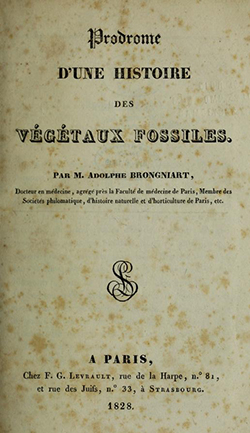 Adolphe Brongniart publishes Prodrome d'une histoire des Végétaux Fossils, a study of fossil plants. He outlines four distinct phases in plant prehistory: (1) primitive plants from the Coal Measures, (2) the first conifers, (3) domination by cycads and conifers, and (4) flowering plants.
Adolphe Brongniart publishes Prodrome d'une histoire des Végétaux Fossils, a study of fossil plants. He outlines four distinct phases in plant prehistory: (1) primitive plants from the Coal Measures, (2) the first conifers, (3) domination by cycads and conifers, and (4) flowering plants.
Mary Anning discovers Britain's first recognized pterosaur fossil. (Gideon Mantell has already found pterosaur remains, but has attributed them to a bird).
 Chemist Friedrich Wöhler (1800-1882) synthesizes the organic compound urea, a feat previously thought impossible because of the vital force thought to be a part of organic substances.
Chemist Friedrich Wöhler (1800-1882) synthesizes the organic compound urea, a feat previously thought impossible because of the vital force thought to be a part of organic substances.
 Andrew Jackson becomes the seventh president of the United States.
Andrew Jackson becomes the seventh president of the United States.
Slavery abolished in Mexico.
1829
Philippe-Charles Schmerling discovers a Neanderthal fossil, the partial cranium of a small child. The fossil will not be accurately identified as Neanderthal, however, for a century, though Charles Lyell will illustrate it in Antiquity of Man in 1863.
 On April 6, the Church of Jesus Christ of Latter-Day Saints is founded by Joseph Smith Jr. (1805-1844), in Fayette, New York. In Palmyra, New York, The Book of Mormon is published for the first time; Smith has translated it, he says, from golden tablets he found buried near Palmyra.
On April 6, the Church of Jesus Christ of Latter-Day Saints is founded by Joseph Smith Jr. (1805-1844), in Fayette, New York. In Palmyra, New York, The Book of Mormon is published for the first time; Smith has translated it, he says, from golden tablets he found buried near Palmyra.
The first wagon trains to cross the Rocky Mountains arrived in California.
The U.S. Congress passes the Indian Removal Act.
The world's population tops 1,000,000,000 (it had been roughly 750 million only 50 years earlier).
1830
 Charles Lyell's multi-volume Principles of Geology appear (between 1830 amd 1833), advancing the theory of uniformitarianism, i.e., the view that geological formations are explainable in terms of forces and conditions observable at present.
Charles Lyell's multi-volume Principles of Geology appear (between 1830 amd 1833), advancing the theory of uniformitarianism, i.e., the view that geological formations are explainable in terms of forces and conditions observable at present.
Georg Goldfuss announces that he sees "hairs" on a pterosaur fossil. This outlandish assertion will be supported by later finds.
 The first edition of Birds of America, by the painter and ornithologist John James Audubon (1785-1851), appears.
The first edition of Birds of America, by the painter and ornithologist John James Audubon (1785-1851), appears.
Nat Turner leads a slave rebellion in Southampton, Virginia, killing at least 57 whites. Hundreds of black slaves are killed in retaliation.
Alabama makes it illegal for enslaved or free blacks to preach.
 In Boston, William Lloyd Garrison founds the abolitionist newspaper, The Liberator, signaling a dramatic shift in the antislavery movement. In the previous decades, it had centered in the South and favored a combination of compensated emancipation and colonization of freed slaves back to Africa. In the 1830s, the abolitionist movement becomes the dominant voice among antislavery advocates. Abolitionists demand the immediate end to slavery, which they consider to be a moral evil, without compensation to slaveowners.
In Boston, William Lloyd Garrison founds the abolitionist newspaper, The Liberator, signaling a dramatic shift in the antislavery movement. In the previous decades, it had centered in the South and favored a combination of compensated emancipation and colonization of freed slaves back to Africa. In the 1830s, the abolitionist movement becomes the dominant voice among antislavery advocates. Abolitionists demand the immediate end to slavery, which they consider to be a moral evil, without compensation to slaveowners.
Nat Turner, a literate slave who believes he is chosen to be the Moses of his people, instigates a slave revolt in Virginia. He and his followers kill 57 whites, but the revolt is unsuccessful and up to 200 slaves are killed. After an intense debate, the Virginia legislature narrowly rejects a bill to emancipate Virginia's slaves. The widespread fear of slave revolts, compounded by the rise of abolitionism, leads legislatures across the South to increase the harshness of their slave codes. Also, expressions of anti-slavery sentiment are suppressed throughout the South through state and private censorship.
North Carolina enacts a statute that bans teaching enslaved people to read and write.
Slave Revolt: Virginia Slave preacher Nat Turner leads a two-day uprising against whites, killing about 60. Militiamen crush the revolt then spend two months searching for Turner, who is eventually caught and hanged. Enraged Southerners impose harsher restrictions on their slaves.
1831
 Charles Darwin joins the crew of the HMS Beagle as the ship's naturalist. The Beagle plans a two-year voyage to map the coast of South America. This turns out to be a five-year trip.
Charles Darwin joins the crew of the HMS Beagle as the ship's naturalist. The Beagle plans a two-year voyage to map the coast of South America. This turns out to be a five-year trip.
Patrick Matthew publishes On Naval Timber and Arboriculture with an appendix describing what Charles Darwin will later name natural selection. After becoming aware of Matthew's hypothesis, Darwin will acknowledge it in a reprint of On the Origin of Species.
 Robert Brown published his observations reporting the discovery and widespread occurrence of nuclei in cells.
Robert Brown published his observations reporting the discovery and widespread occurrence of nuclei in cells.
Oberlin College is founded in Ohio. It admits African-Americans. By 1860, one third of its students are black.
 Electric telegraph invented by Samuel Morse.
Electric telegraph invented by Samuel Morse.
1832
Gideon Mantell finds the first fossil Hylaeosaurus, an ankylosaur. He will formally name it the following year, making it the third identified dinosaur species.
The American Anti-Slavery Society is established in Philadelphia.
The British Parliament abolishes slavery in the entire British Empire.
1833
 The first volume of the five-volume Recherches sur les poissons fossiles (Researches on Fossil Fishes) by Jean-Louis-Rodolphe Agassiz is published.
The first volume of the five-volume Recherches sur les poissons fossiles (Researches on Fossil Fishes) by Jean-Louis-Rodolphe Agassiz is published.
South Carolina bans the teaching of blacks, and slave or free, in its borders.
Federal troops are ordered to put down a riot by workers along the Chesapeake and Ohio Canal. It is the first time federal troops have been used to settle a labor battle in the United States.
1834
Based on a vertebrae and other fragments from Alabama, anatomist Richard Harlan identifies Basilosaurus as a fossil reptile. It will later be identified as a fossil whale.
Texas declares its independence from Mexico. In its constitution as an independent nation, Texas recognizes slavery and makes it difficult for free blacks to remain there.
Southern states expel abolitionists and forbid the mailing of antislavery propaganda.
 The first volume of La Dèmocracie en Amèrique (Democracy in America), by Alexis de Tocqueville (1805-1859), is published in France. Tocqueville, a historian and politician and member of the French aristocracy, writes about the American people and their institutions, based on his 9 months of travels through the United States and eastern Canada in 1831-1832.
The first volume of La Dèmocracie en Amèrique (Democracy in America), by Alexis de Tocqueville (1805-1859), is published in France. Tocqueville, a historian and politician and member of the French aristocracy, writes about the American people and their institutions, based on his 9 months of travels through the United States and eastern Canada in 1831-1832.
1835
 While serving as scientific officer on the HMS Beagle, Charles Darwin visits the Galapagos Islands. He observes that the many varieties of finches on the islands seem to have developed from a common ancestor found on the mainland of South America.
While serving as scientific officer on the HMS Beagle, Charles Darwin visits the Galapagos Islands. He observes that the many varieties of finches on the islands seem to have developed from a common ancestor found on the mainland of South America.
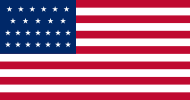 The US flag is modified to have twenty-five stars, reflecting the addition of one new state: Arkansas.
The US flag is modified to have twenty-five stars, reflecting the addition of one new state: Arkansas.
 Davy Crockett killed, as Texans are defeated by the Mexican army at the Alamo.
Davy Crockett killed, as Texans are defeated by the Mexican army at the Alamo.
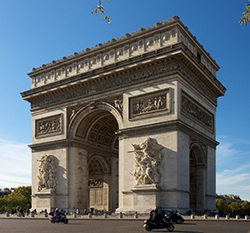 In Paris, the Arc de Triomphe is completed. The arch was ordered built by Napoleon in 1806.
In Paris, the Arc de Triomphe is completed. The arch was ordered built by Napoleon in 1806.
 Texas gains independence from Mexico after winning the battle of San Jacinto.
Texas gains independence from Mexico after winning the battle of San Jacinto.
1836
Henry Riley and Samuel Stutchbury name Thecodontosaurus, the fourth named dinosaur species.
 Elements of Botany, by the naturalist Asa Gray (1810-1888), is published. It is the first botanical textbook.
Elements of Botany, by the naturalist Asa Gray (1810-1888), is published. It is the first botanical textbook.
 German biologist Theodor Schwann discovers the enzyme pepsin — the first known animal enzyme. He reports the discovery in Über das Wesen der Verdauungsprozesses (On the essence of digestion).
German biologist Theodor Schwann discovers the enzyme pepsin — the first known animal enzyme. He reports the discovery in Über das Wesen der Verdauungsprozesses (On the essence of digestion).
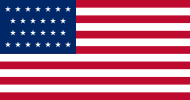 The US flag is modified to have twenty-six stars, reflecting the addition of one new state: Michigan.
The US flag is modified to have twenty-six stars, reflecting the addition of one new state: Michigan.
 Martin Van Buren becomes eighth president of the United States.
Martin Van Buren becomes eighth president of the United States.
 William IV, King of Great Britain, dies.
William IV, King of Great Britain, dies.
1837
Charles Darwin formulates the theory of natural selection to explain evolution. Fearful of the reaction his theory will cause, he delays publishing.
Hermann von Meyer names Plateosaurus, the fifth named dinosaur species.
 Coronation of Victoria as queen of Great Britain.
Coronation of Victoria as queen of Great Britain.
1838

 M. J. Schleiden and T. Schwann develop the cell theory. Schleiden notes nucleoli within nuclei.
M. J. Schleiden and T. Schwann develop the cell theory. Schleiden notes nucleoli within nuclei.
 Chemist Jöns Jakob Berzelius (1779-1848) shows that the presence of iron is what enables blood to absorb as much oxygen as it does.
Chemist Jöns Jakob Berzelius (1779-1848) shows that the presence of iron is what enables blood to absorb as much oxygen as it does.

 The word PROTEIN first appears in the chemical literature in a paper by G. J. Mulder. The term, however, was invented by J. J. Berzelius.
The word PROTEIN first appears in the chemical literature in a paper by G. J. Mulder. The term, however, was invented by J. J. Berzelius.
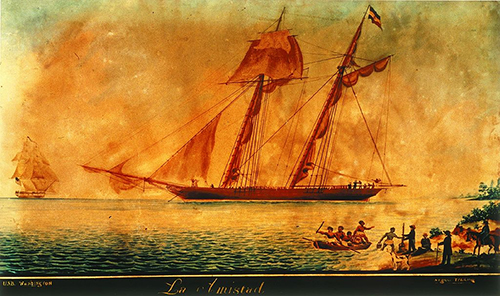 La Amistad was a 19th-century two-masted schooner, owned by a Spaniard living in Cuba. It became renowned in July 1839 for a slave revolt by Mende captives, who had been enslaved in Sierra Leone, and were being transported from Havana, Cuba to their purchasers' plantations. The African captives took control of the ship, killing some of the crew and ordering the survivors to sail the ship to Africa. The Spanish survivors secretly maneuvered the ship north, and La Amistad was captured off the coast of Long Island by the brig USS Washington. The Mende and La Amistad were interned in Connecticut while federal court proceedings were undertaken for their disposition. The owners of the ship and Spanish government claimed the slaves as property; but the US had banned the African trade and argued that the Mende were legally free. Because of issues of ownership and jurisdiction, the case gained international attention. Former president John Quincy Adams argued on behalf of the slaves when the appeal was brought before the U.S. Supreme Court, which eventually determined the Africans to be free men. The case became a symbol in the United States in the movement to abolish slavery.
La Amistad was a 19th-century two-masted schooner, owned by a Spaniard living in Cuba. It became renowned in July 1839 for a slave revolt by Mende captives, who had been enslaved in Sierra Leone, and were being transported from Havana, Cuba to their purchasers' plantations. The African captives took control of the ship, killing some of the crew and ordering the survivors to sail the ship to Africa. The Spanish survivors secretly maneuvered the ship north, and La Amistad was captured off the coast of Long Island by the brig USS Washington. The Mende and La Amistad were interned in Connecticut while federal court proceedings were undertaken for their disposition. The owners of the ship and Spanish government claimed the slaves as property; but the US had banned the African trade and argued that the Mende were legally free. Because of issues of ownership and jurisdiction, the case gained international attention. Former president John Quincy Adams argued on behalf of the slaves when the appeal was brought before the U.S. Supreme Court, which eventually determined the Africans to be free men. The case became a symbol in the United States in the movement to abolish slavery.
Sultan Abdulmecid I implemented the Tanzimat reforms in an attempt to modernize the Ottoman Empire and strengthen it against European powers. The reforms included changes to the legal system, education, and the military, and were influenced by western ideas.

 In response to the British opium trade, Lin Zexu wrote a letter to Queen Victoria, urging her to end the opium trade: We find that your country is sixty or seventy thousand li from China. Yet there are barbarian ships that strive to come here for trade for the purpose of making a great profit. The wealth of China is used to profit the barbarians. That is to say, the great profit made by barbarians is all taken from the rightful share of China. By what right do they then in return use the poisonous drug to injure the Chinese people? Even though the barbarians may not necessarily intend to do us harm, yet in coveting profit to an extreme, they have no regard for injuring others. Let us ask, where is your conscience? The letter to the Queen never reached her. Belatedly, it was delivered and published in The Times of London.
In response to the British opium trade, Lin Zexu wrote a letter to Queen Victoria, urging her to end the opium trade: We find that your country is sixty or seventy thousand li from China. Yet there are barbarian ships that strive to come here for trade for the purpose of making a great profit. The wealth of China is used to profit the barbarians. That is to say, the great profit made by barbarians is all taken from the rightful share of China. By what right do they then in return use the poisonous drug to injure the Chinese people? Even though the barbarians may not necessarily intend to do us harm, yet in coveting profit to an extreme, they have no regard for injuring others. Let us ask, where is your conscience? The letter to the Queen never reached her. Belatedly, it was delivered and published in The Times of London.
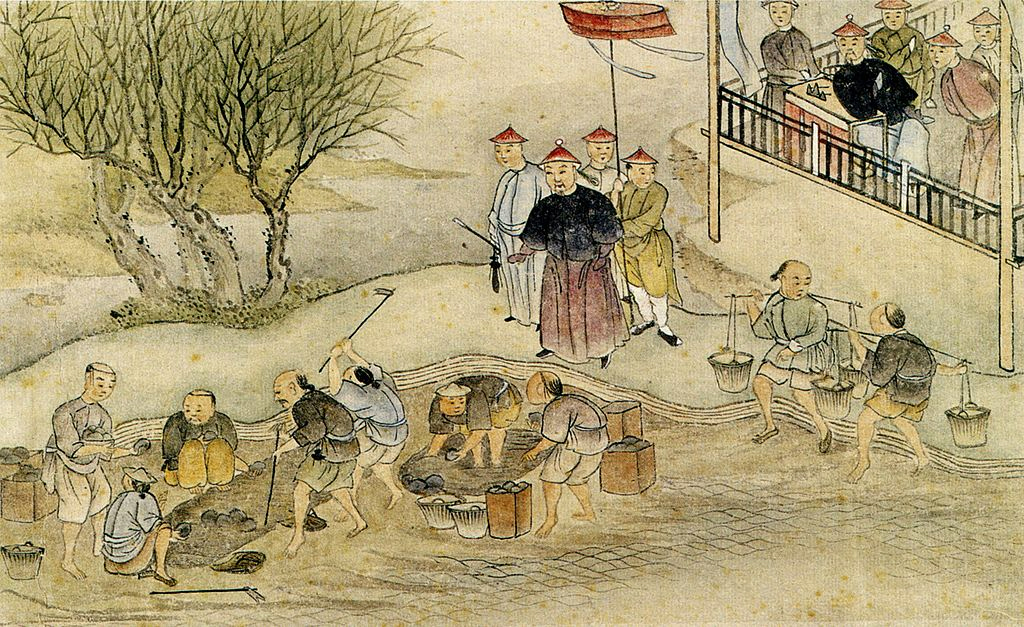 Lin Zexu was a Chinese scholar-official of the Qing dynasty best known for his role in the First Opium War of 1839. In March 1839, Lin arrived in Guangdong Province to take measures that would eliminate the opium trade. He was a formidable bureaucrat known for his competence and high moral standards, with an imperial commission from the Daoguang Emperor to halt the illegal importation of opium by the British. Upon arrival, he made changes within a matter of months. He arrested more than 1,700 Chinese opium dealers and confiscated over 70,000 opium pipes. He initially attempted to get foreign companies to forfeit their opium stores in exchange for tea, but this ultimately failed. Lin resorted to using force in the western merchants' enclave. A month and a half later, the merchants gave up nearly 1.2 million kg (2.6 million pounds) of opium. Beginning 3 June 1839, 500 workers laboured for 23 days to destroy it, mixing the opium with lime and salt and throwing it into the sea outside of Humen Town. Lin composed an elegy apologising to the gods of the sea for polluting their realm.
Lin Zexu was a Chinese scholar-official of the Qing dynasty best known for his role in the First Opium War of 1839. In March 1839, Lin arrived in Guangdong Province to take measures that would eliminate the opium trade. He was a formidable bureaucrat known for his competence and high moral standards, with an imperial commission from the Daoguang Emperor to halt the illegal importation of opium by the British. Upon arrival, he made changes within a matter of months. He arrested more than 1,700 Chinese opium dealers and confiscated over 70,000 opium pipes. He initially attempted to get foreign companies to forfeit their opium stores in exchange for tea, but this ultimately failed. Lin resorted to using force in the western merchants' enclave. A month and a half later, the merchants gave up nearly 1.2 million kg (2.6 million pounds) of opium. Beginning 3 June 1839, 500 workers laboured for 23 days to destroy it, mixing the opium with lime and salt and throwing it into the sea outside of Humen Town. Lin composed an elegy apologising to the gods of the sea for polluting their realm.
The First Opium War between Britain and China occurs between 1839 and 1842, triggered when Chinese officials attempt to prevent the sale of narcotics (opium) to the Chinese people by the British East India trading Company. The British respond by bringing in gunboats and shelling Chinese coastal cities.
 The process of vulcanization, developed by Charles Goodyear, makes possible the commercial use of rubber.
The process of vulcanization, developed by Charles Goodyear, makes possible the commercial use of rubber.
1839
 Czech scientist Jan Evangelista Purkyně (also written Johannes Evangelist Purkinje) coins the word PROTOPLASM to describe the contents of a cell.
Czech scientist Jan Evangelista Purkyně (also written Johannes Evangelist Purkinje) coins the word PROTOPLASM to describe the contents of a cell.
(no entry for this year)
1840
 Charles Darwin's Zoology of the Voyage of the Beagle appears.
Charles Darwin's Zoology of the Voyage of the Beagle appears.
Martin Barry expressed the belief that the spermatozoon enters the egg.
The U.S.S. Creole, a ship carrying slaves from Virginia to Louisiana, is seized by the slaves on board and taken to Nassau, where they are free.
 John Tyler becomes tenth president of the United States.
John Tyler becomes tenth president of the United States.
 The first centralized government bureau of statistics is founded in Belgium by the mathematician Lambert Adolphe Jacques Quetelet (1781-1840).
The first centralized government bureau of statistics is founded in Belgium by the mathematician Lambert Adolphe Jacques Quetelet (1781-1840).
1841
(no entry for this year)
 Frederick Douglass leads a successful campaign against Rhode Island's proposed Dorr Constitution, which would have continued the prohibition on black male voting rights.
Frederick Douglass leads a successful campaign against Rhode Island's proposed Dorr Constitution, which would have continued the prohibition on black male voting rights.
In Prigg v. Pennsylvania, the U.S. Supreme Court upholds the Fugitive Slave Law of 1793, stating that slaveowners have a right to retrievetheir "property." In so doing, the court rules that Pennsylvania's anti-kidnapping law is unconstitutional. At the same time, the Supreme Court declares that enforcement of the Fugitive Slave Lawis a federal responsibility in which states are not compelled to participate. Between 1842 and 1850, nine Northern states pass new personal liberty laws which forbid state officials from cooperating in the return of alleged fugitive slaves and bar the use of state facilities for that purpose.
Slavery is abolished in Uruguay.
The Virginia Legislature votes against abolishing slavery.
In Commonwealth v. Hunt, a case involving the Boston Journeyman Bootmakers Society, the Chief Justice of the Massachusetts Supreme Court ruled that trade unions are legal. The ruling revises the common law that treated such unions as criminal conspiracies.
The Massachusetts State Legislature enacts a child labor law that limits the working hours of children under 12 years-old to 10 hours per day.
P. T. Barnum lures crowds of thousands to see his "Feejee Mermaid."
1842
 Charles Darwin's book The Structure and Distribution of Coral Reefs being the first part of the geology of the voyage of the Beagle, is published. During the year Darwin composes an abstract of his theory of species evolution.
Charles Darwin's book The Structure and Distribution of Coral Reefs being the first part of the geology of the voyage of the Beagle, is published. During the year Darwin composes an abstract of his theory of species evolution.
 Carl Wilhelm von Nägeli (1817-1891) publishes Zur Entwicklungsgeschichte des Pollens. His paper describes cell division in plants with remarkable accuracy, and discusses seed formation in flowering plants.
Carl Wilhelm von Nägeli (1817-1891) publishes Zur Entwicklungsgeschichte des Pollens. His paper describes cell division in plants with remarkable accuracy, and discusses seed formation in flowering plants.
Richard Owen names Cetiosaurus, the sixth named dinosaur species.
 Die Thierchemie, by chemist Baron Justus von Liebig (1803-1873), is published, and the science of biochemistry begins.
Die Thierchemie, by chemist Baron Justus von Liebig (1803-1873), is published, and the science of biochemistry begins.
 The term DINOSAUR is coined by Richard Owen (1804-1892) to describe a class of animals that we now believe were dominant on the Earth for approximately 175 million years.
The term DINOSAUR is coined by Richard Owen (1804-1892) to describe a class of animals that we now believe were dominant on the Earth for approximately 175 million years.
 Congress grants S. F. B. Morse $30,000 to build the first telegraph line (Washington to Baltimore).
Congress grants S. F. B. Morse $30,000 to build the first telegraph line (Washington to Baltimore).
1843
Louis Agassiz completes Les Poissons Fossiles describing fossil fish of the world. This single monograph increases tenfold the formally described vertebrates known to science.
 That the nervous system uses electricity in communicating between different parts of the body is demonstrated by Emil Heinrich du Bois-Reymond (1818-1896). He founds the field of electrophysiology.
That the nervous system uses electricity in communicating between different parts of the body is demonstrated by Emil Heinrich du Bois-Reymond (1818-1896). He founds the field of electrophysiology.
(no entry for this year)
1844
 Charles Darwin first outlines his thoughts on natural selection in an unpublished essay.
Charles Darwin first outlines his thoughts on natural selection in an unpublished essay.
 Robert Chambers, a Scottish journalist, publishes (anonymously) his Vestiges of the Natural History of Creation, an early book outlining an evolutionary view of the natural world.
Robert Chambers, a Scottish journalist, publishes (anonymously) his Vestiges of the Natural History of Creation, an early book outlining an evolutionary view of the natural world.
 The second part of the Geology of the Beagle, Charles Darwin's Geological Observations on Volcanic Islands Visited During the Voyage of H.M.S. Beagle, is published. Darwin's book claims to supply evidence for the geological theories of Charles Lyell (1797-1875), from areas that Lyell himself had never seen.
The second part of the Geology of the Beagle, Charles Darwin's Geological Observations on Volcanic Islands Visited During the Voyage of H.M.S. Beagle, is published. Darwin's book claims to supply evidence for the geological theories of Charles Lyell (1797-1875), from areas that Lyell himself had never seen.
 That all the cells in an organism are generated from successive divisions of the egg cell is described by Rudolf Albert von Kölliker (1817-1905). Kölliker shows that the egg is itself a cell.
That all the cells in an organism are generated from successive divisions of the egg cell is described by Rudolf Albert von Kölliker (1817-1905). Kölliker shows that the egg is itself a cell.
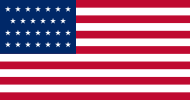 The US flag is modified to have twenty-seven stars, reflecting the addition of one new state: Florida.
The US flag is modified to have twenty-seven stars, reflecting the addition of one new state: Florida.
 Frederick Douglass publishes his autobiography, The Life and Times of Frederick Douglass.
Frederick Douglass publishes his autobiography, The Life and Times of Frederick Douglass.
 James K. Polk becomes eleventh president of the United States.
James K. Polk becomes eleventh president of the United States.
Texas is annexed by the United States.
The Irish potato famine begins, one of the century's worst natural disasters. One million citizens starve to death, and one million others emigrate, mostly to the United States
1845
(no entry for this year)
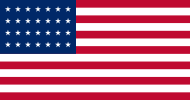 The US flag is modified to have twenty-eight stars, reflecting the addition of one new state: Texas.
The US flag is modified to have twenty-eight stars, reflecting the addition of one new state: Texas.
Mexican-American War Defeated, Mexico yields an enormous amount of territory to the United States. Americans then wrestle with a controversial topic: Is slavery permitted in the new lands?
The first professional baseball game is played, in Hoboken, New Jersey.
The Mexican War (1846-48) between the United States and Mexico results in the United States taking possession of California and much of the Southwest, which had been Mexican territory.
The Oregon Treaty delineates border between the United States and Canada.
1846
 Karl Wilhelm Von Nägeli shows that plant cells are not formed as buds from the surfaces of existing cells, as was proposed by Theodore Schwann.
Karl Wilhelm Von Nägeli shows that plant cells are not formed as buds from the surfaces of existing cells, as was proposed by Theodore Schwann.
Joseph Leidy identifies in pork the parasite that causes trichinosis, a potentially fatal human disease.
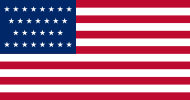 The US flag is modified to have twenty-nine stars, reflecting the addition of one new state: Iowa.
The US flag is modified to have twenty-nine stars, reflecting the addition of one new state: Iowa.
 The North Star, an abolitionist newspaper, begins publication in Rochester, New York. The paper is founded by escaped slave Frederick Douglass (1817-1895), with money he earned as a result of his autobiography.
The North Star, an abolitionist newspaper, begins publication in Rochester, New York. The paper is founded by escaped slave Frederick Douglass (1817-1895), with money he earned as a result of his autobiography.
Liberia is formed as a home for released American slaves.
Missouri bans the education of free blacks.
The Istanbul slave market is abolished.
The Factory Act is passed in Britain. It forbids women and children between the ages of 13 and 18 to work more than 10 hours per day.
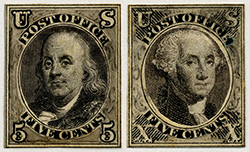 The first United States postage stamps are issued
The first United States postage stamps are issued
1847
Jakob Mathias Schleiden and Theodor Schwann announce that cells are the basic units of all living structures.
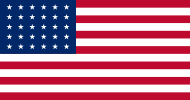 The US flag is modified to have thirty stars, reflecting the addition of one new state: Wisconsin.
The US flag is modified to have thirty stars, reflecting the addition of one new state: Wisconsin.
Slavery is abolished in old French and Danish colonies.
 Karl Marx publishes The Communist Manifesto, which asserts that revolution by the working classes will ultimately destroy capitalism.
Karl Marx publishes The Communist Manifesto, which asserts that revolution by the working classes will ultimately destroy capitalism.
Revolution breaks out across much of Europe; the Second Republic is proclaimed in France.
1848
 On the archetype and homologies of the vertebrate skeleton, by Richard Owen (1804-1892), is published. In the book Owen argues that the skull, and other parts of the body, are formed by the modification of the vertebra of different animals.
On the archetype and homologies of the vertebrate skeleton, by Richard Owen (1804-1892), is published. In the book Owen argues that the skull, and other parts of the body, are formed by the modification of the vertebra of different animals.
Richard Owen describes "homologies" — similarities of design in bird wings, fish fins and human hands.
A Neanderthal skull is excavated from Forbes Quarry on the northern side of the Rock of Gibraltar. Over the next few decades, the skull will be stashed in a library cabinet in Gibraltar, dusted off and sent to London, accurately likened to the ancient skullcap from Neander Valley in Germany, nearly named Homo calpicus, and finally stored and largely forgotten in the Royal College of Surgeons.
 Charles Lewis Reason becomes the first African-American college instructor when he is hired at predominantly white Free Mission College (later New York Central College) to teach Greek, Latin, French, and mathematics.
Charles Lewis Reason becomes the first African-American college instructor when he is hired at predominantly white Free Mission College (later New York Central College) to teach Greek, Latin, French, and mathematics.
 Harriet Tubman escapes from slavery and goes on to lead more than 300 slaves to freedom on the underground railroad.
Harriet Tubman escapes from slavery and goes on to lead more than 300 slaves to freedom on the underground railroad.
 Zachary Taylor becomes twelfth president of the United States.
Zachary Taylor becomes twelfth president of the United States.
The California gold rush begins as more than 100,000 people swarm to California to make their fortunes after gold is found there in 1848.
Showmen Moses Kimball and P. T. Barnum purchase the contents of the Peale Museum (established in 1784).
1849
 Botanist Carl Friedrich von Gärtner (1772-1850) publishes Versuche und Beobachtungen über die Bastarderzeugung im Pflanzenreiche. The book describes thousands of experiments, many involving the production of hybrids, on more than 500 species of plants. Mendel will study this book in detail when he attends the University of Vienna in the early 1850s, and will cite the book in the opening of his paper of 1865.
Botanist Carl Friedrich von Gärtner (1772-1850) publishes Versuche und Beobachtungen über die Bastarderzeugung im Pflanzenreiche. The book describes thousands of experiments, many involving the production of hybrids, on more than 500 species of plants. Mendel will study this book in detail when he attends the University of Vienna in the early 1850s, and will cite the book in the opening of his paper of 1865.
Based on a humerus 58 inches in circumference, Mantell names a new dinosaur species: Pelorosaurus, the first recognized sauropod.
The Compromise of 1850 is introduced into Congress by Henry Clay as an omnibus bill designed to settle disputes arising from the conclusion of the Mexican War. It passes after Stephen Douglas divides the bill into several parts: California enters the Union as a free state; the slave trade (but not slavery) is abolished in Washington D.C.; the fugitive slave law is strengthened; and the Utah and New Mexico Territories are opened to slavery on the basis of popular sovereignty (allowing territorial voters to decide the issue without federa linterference).
1850
 German physicist Gustav Theodor Fechner discovers that an increase in the intensity of a stimulus does not produce a one-to-one increase in the intensity of sensation. Instead, the sensation seems to increase as the logarithm of the excitation.
German physicist Gustav Theodor Fechner discovers that an increase in the intensity of a stimulus does not produce a one-to-one increase in the intensity of sensation. Instead, the sensation seems to increase as the logarithm of the excitation.
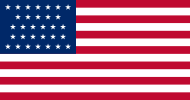 The US flag is modified to have thirty-one stars, reflecting the addition of one new state: California.
The US flag is modified to have thirty-one stars, reflecting the addition of one new state: California.
1851
(no entry for this year)
 The French Republic falls; Louis Napoleon (Napoleon III) is crowned Emperor.
The French Republic falls; Louis Napoleon (Napoleon III) is crowned Emperor.
The U.S. state of Massachusetts adopts a compulsory school-attendance law, the first effective example of such a law in the nation.
1852
 Albrecht von Kölliker publishes the first textbook of histology, Handbuch der Gewebelehre.
Albrecht von Kölliker publishes the first textbook of histology, Handbuch der Gewebelehre.
 Hermann Ludwig von Helmholtz becomes the first to discover how fast a message travels along a nerve, measuring the speed of transmission in a frog nerve cell.
Hermann Ludwig von Helmholtz becomes the first to discover how fast a message travels along a nerve, measuring the speed of transmission in a frog nerve cell.
 Commodore Matthew Perry sails into Japan's Edo Bay with his black ships (four modern, steam-powered warships), urging Japan to open trade policies with the United States.
Commodore Matthew Perry sails into Japan's Edo Bay with his black ships (four modern, steam-powered warships), urging Japan to open trade policies with the United States.
 Franklin Pierce becomes fourteenth president of the United States.
Franklin Pierce becomes fourteenth president of the United States.
1853
 Rudolph Albert von Kölliker discovers the cellular origin of spermatozoa, which were believed by some to originate from a fermentation process.
Rudolph Albert von Kölliker discovers the cellular origin of spermatozoa, which were believed by some to originate from a fermentation process.
Kansas-Nebraska Act: In an attempt to spur population growth in the western territories in advance of a transcontinental railroad, Stephen Douglas introduces a bill to establish the territories of Kansas and Nebraska. In order to gain Southern support, the bill stipulates that slavery in the territories will be decided by popular sovereignty. Thus the Kansas-Nebraska Act repeals the Missouri Compromise ban on slavery north of 36 30' in the lands of the Louisiana Purchase.
Ostend Manifesto: The U.S. ministers to Britain, France, and Spain meet in Ostend, Belgium. They draft a policy recommendation to President Pierce, urging him to attempt again to purchase Cuba from Spain and, if Spain refuses, to take the island by force. When the secret proposal, called the Ostend Manifesto, is leaked to the press, it creates an uproar since Cuba would likely become another slave state.
 On May 24, Virginia fugitive slave Anthony Burns is captured in Boston and returned to slavery under the provisions of the Fugitive Slave Act. Fifty thousand Boston residents watch his transport through the streets of the city in shackles. A Boston church raises $1500 to purchase his freedom and Burns returns to the city in 1855, a free man.
On May 24, Virginia fugitive slave Anthony Burns is captured in Boston and returned to slavery under the provisions of the Fugitive Slave Act. Fifty thousand Boston residents watch his transport through the streets of the city in shackles. A Boston church raises $1500 to purchase his freedom and Burns returns to the city in 1855, a free man.
On May 30, the Kansas-Nebraska act is passed by Congress. The act repeals the Missouri Compromise and permits the admission of Kansas and Nebraska territories to the Union after their white male voters decide the fate of slavery in those territories.
Slavery is abolished in Peru and Venezuela.
The Republican Party is formed in the summer in opposition to the extension of slavery into the western territories.
1854
(no entry for this year)
The Massachusetts Legislature outlaws racially segregated schools.
1855
 Alfred Russel Wallace publishes "On the Law which has Regulated the Introduction of New Species," anticipating Darwin's theory of evolution by natural selection.
Alfred Russel Wallace publishes "On the Law which has Regulated the Introduction of New Species," anticipating Darwin's theory of evolution by natural selection.
 Rudolf Virchow states the principle that new cells come into being only by division of previously existing cells: Omnis cellula e cellula.
Rudolf Virchow states the principle that new cells come into being only by division of previously existing cells: Omnis cellula e cellula.
 Recherches sur la putréfaction, by Louis Pasteur, is published. The book describes how fermentation is caused by microorganisms.
Recherches sur la putréfaction, by Louis Pasteur, is published. The book describes how fermentation is caused by microorganisms.
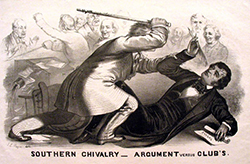 The Caning of Charles Sumner: Senator Charles Sumner delivers a stinging speech in the U.S. Senate, "The Crime against Kansas," in which he attacks slavery, the South, and singles out his Senate colleague, Andrew Butler of South Carolina, for criticism. In retaliation, Butler's nephew, Congressman Preston Brooks of South Carolina, attacks Sumner with a cane while the Massachusetts senator is seated at his desk on the floor of the Senate. The injuries he sustains cause Sumner to be absent from the Senate for four years. The episode revealed the polarization in America, as Sumner became a martyr in the North and Brooks a hero in the South. Northerners were outraged. Southerners sent Brooks hundreds of new canes in endorsement of his assault. One was inscribed "Hit him again." Brooks claimed that he had not intended to kill Sumner, or else he would have used a different weapon. In a speech to the House defending his actions, Brooks stated that he "meant no disrespect to the Senate of the United States" or the House by his attack on Sumner. He was tried in a District of Columbia court, convicted for assault, and fined $300 ($8,000 in today's dollars), but received no prison sentence.
The Caning of Charles Sumner: Senator Charles Sumner delivers a stinging speech in the U.S. Senate, "The Crime against Kansas," in which he attacks slavery, the South, and singles out his Senate colleague, Andrew Butler of South Carolina, for criticism. In retaliation, Butler's nephew, Congressman Preston Brooks of South Carolina, attacks Sumner with a cane while the Massachusetts senator is seated at his desk on the floor of the Senate. The injuries he sustains cause Sumner to be absent from the Senate for four years. The episode revealed the polarization in America, as Sumner became a martyr in the North and Brooks a hero in the South. Northerners were outraged. Southerners sent Brooks hundreds of new canes in endorsement of his assault. One was inscribed "Hit him again." Brooks claimed that he had not intended to kill Sumner, or else he would have used a different weapon. In a speech to the House defending his actions, Brooks stated that he "meant no disrespect to the Senate of the United States" or the House by his attack on Sumner. He was tried in a District of Columbia court, convicted for assault, and fined $300 ($8,000 in today's dollars), but received no prison sentence.
In South Africa, Boers establish the South African Republic (Transvaal), with Pretoria as its capital. Marthinus Wessels Pretorius, 37, is named the first president.
The Second Opium War (1856-1860) between Britain and China leads to further erosion of Chinese sovereignty.
1856
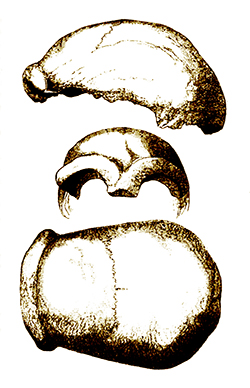 The remains of the first known example of what come to be known as the "Neanderthals" is found in a cave near Düsseldorf, in the Neander Valley. The discovery was made by limestone quarry miners and consists of a skullcap, two femora, the three right arm bones, two of the left arm bones, ilium, and fragments of a scapula and ribs. The fossils were given to Johann Carl Fuhlrott, a local teacher and amateur naturalist. The first description of the remains was made by anatomist Hermann Schaaffhausen and the find was announced jointly in 1857.In 1997, the specimen was the first to yield Neanderthal mitochondrial DNA fragments. The description of this discovery represents the beginning of paleoanthropology as a scientific discipline.
The remains of the first known example of what come to be known as the "Neanderthals" is found in a cave near Düsseldorf, in the Neander Valley. The discovery was made by limestone quarry miners and consists of a skullcap, two femora, the three right arm bones, two of the left arm bones, ilium, and fragments of a scapula and ribs. The fossils were given to Johann Carl Fuhlrott, a local teacher and amateur naturalist. The first description of the remains was made by anatomist Hermann Schaaffhausen and the find was announced jointly in 1857.In 1997, the specimen was the first to yield Neanderthal mitochondrial DNA fragments. The description of this discovery represents the beginning of paleoanthropology as a scientific discipline.
Louis Agassiz publishes Essay on Classification advocating a theory of multiple creations and contradicting both evolution and Noah's ark.
 Gregor Mendel, a monk at the Augustinian monastery of St. Thomas in Brünn, Austria (now Brno, Czechoslovakia), begins breeding experiments with the garden pea, Pisum sativum.
Gregor Mendel, a monk at the Augustinian monastery of St. Thomas in Brünn, Austria (now Brno, Czechoslovakia), begins breeding experiments with the garden pea, Pisum sativum.
Heinz Christian Pander describes conodonts — toothy microfossils that will puzzle paleontologists for many years.
 Farmer Hinton Rowan Helper publishes The Impending Crisis of the South, and How to Meet It, in which he argues that slavery in economically unwise, and particularly devastating to small farmers who do not own slaves. He writes that slavery is "the root of all the shame, poverty, ignorance, tyranny and imbecility" in the South. He also argues that slavery foolishly ties up economic resources in human beings when it might be spent on labor-saving improvements.
Farmer Hinton Rowan Helper publishes The Impending Crisis of the South, and How to Meet It, in which he argues that slavery in economically unwise, and particularly devastating to small farmers who do not own slaves. He writes that slavery is "the root of all the shame, poverty, ignorance, tyranny and imbecility" in the South. He also argues that slavery foolishly ties up economic resources in human beings when it might be spent on labor-saving improvements.
The African slave trade is prohibited in the Ottoman Empire
 The Dred Scott Decision makes the Missouri Compromise unconstitutional and increases tension between North and South over slavery in the United States. Writing for the majority, Chief Justice Roger B. Taney asserted that blacks were "beings of an inferior order, and altogether unfit to associate with the white race, either in social or political relations, and so far inferior that they had no rights which the white man was bound to respect." This embarrassing decision represents a low point in the history of the United States Supreme Court.
The Dred Scott Decision makes the Missouri Compromise unconstitutional and increases tension between North and South over slavery in the United States. Writing for the majority, Chief Justice Roger B. Taney asserted that blacks were "beings of an inferior order, and altogether unfit to associate with the white race, either in social or political relations, and so far inferior that they had no rights which the white man was bound to respect." This embarrassing decision represents a low point in the history of the United States Supreme Court.
 James Buchanan becomes fifteenth president of the United States.
James Buchanan becomes fifteenth president of the United States.
 Giuseppe Garibaldi, who returned to Italy in 1854 after several years working at Staten Island, New York, founds the Italian National Association. The organization is designed to promote the unification of Italy.
Giuseppe Garibaldi, who returned to Italy in 1854 after several years working at Staten Island, New York, founds the Italian National Association. The organization is designed to promote the unification of Italy.
1857
(no entry for this year)
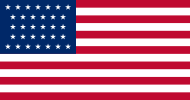 The US flag is modified to have thirty-two stars, reflecting the addition of one new state: Minnesota.
The US flag is modified to have thirty-two stars, reflecting the addition of one new state: Minnesota.
 Abraham Lincoln, running for the United States Senate, declares "A house divided against itself cannot stand." He loses the race to Stephen Douglas, but his performance in there now-legendary debates leads to his nomination as the Republican candidate for president in 1860.
Abraham Lincoln, running for the United States Senate, declares "A house divided against itself cannot stand." He loses the race to Stephen Douglas, but his performance in there now-legendary debates leads to his nomination as the Republican candidate for president in 1860.
In Ireland, the group Sein Féin is founded.
1858
Rudolf Virchow finalizes the cell theory originally announced by Schleiden and Schwann 11 years earlier by declaring that cells are the basic units of all living things, and all cells are formed by the division of existing cells.
 Alfred Russel Wallace sends to Darwin a manuscript — "On the Tendency of Varieties to Depart Indefinitely from the Original Type" — that shows clearly that Wallace has independently formulated a model of evolution by natural selection.
Alfred Russel Wallace sends to Darwin a manuscript — "On the Tendency of Varieties to Depart Indefinitely from the Original Type" — that shows clearly that Wallace has independently formulated a model of evolution by natural selection.

 Darwin's and Wallace's ideas are jointly presented to the Linnaean Society of London.
Darwin's and Wallace's ideas are jointly presented to the Linnaean Society of London.
The first relatively complete dinosaur skeleton, of Hadrosaurus foulkii, is found in New Jersey.
 Physician Henry Gray publishes Anatomy of the Human Body, Descriptive and Surgical. Gray's Anatomy will be a standard textbook of anatomy for more than a century.
Physician Henry Gray publishes Anatomy of the Human Body, Descriptive and Surgical. Gray's Anatomy will be a standard textbook of anatomy for more than a century.
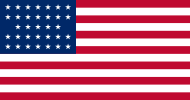 The US flag is modified to have thirty-three stars, reflecting the addition of one new state: Oregon.
The US flag is modified to have thirty-three stars, reflecting the addition of one new state: Oregon.
Harriet Wilson of Milford, New Hampshire, publishes Our Nig; or Sketches from the Life of a Free Black, the first novel by an African-American woman.
 On October 16, John Brown leads 20 men, including five African-Americans, in an unsuccessful attempt to seize the Federal Armory at Harper's ferry, Virginia, with the goal of inspiring a slave insurrection. He was captured by US troops under the command of Colonel Robert E. Lee, tried, and hanged on December 2.
On October 16, John Brown leads 20 men, including five African-Americans, in an unsuccessful attempt to seize the Federal Armory at Harper's ferry, Virginia, with the goal of inspiring a slave insurrection. He was captured by US troops under the command of Colonel Robert E. Lee, tried, and hanged on December 2.
1859
 Charles Darwin publishes On the Origin of Species.
Charles Darwin publishes On the Origin of Species.
An exceptionally well-preserved skeleton is discovered in Bavaria. Two years later, this bird-like, bipedal dinosaur will be named Compsognathus, meaning "dainty jaw."
Catholic priest Jean-Jacques Pouech describes fossil eggshell fragments. They will eventually prove to be the first described dinosaur eggs.
On December 20, South Carolina secedes from the union, setting in motion the forces leading to the US Civil war.
Southern Secession South Carolina secedes in December. More states follow the next year.
The Pony Express begins cross-country mail delivery.
1860
 Louis Agassiz attacks Darwin's the origin of species, rejecting the idea of evolution of the species and arguing that each species was created separately.
Louis Agassiz attacks Darwin's the origin of species, rejecting the idea of evolution of the species and arguing that each species was created separately.
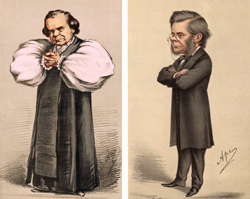 Thomas Henry Huxley (sometimes known as Darwin's bulldog) clashes with Bishop "Soapy Sam" Wilberforce about evolution at the annual meeting of The British Association for the Advancement of Science, in what has come to be known as the Huxley-Wilberforce debate.
Thomas Henry Huxley (sometimes known as Darwin's bulldog) clashes with Bishop "Soapy Sam" Wilberforce about evolution at the annual meeting of The British Association for the Advancement of Science, in what has come to be known as the Huxley-Wilberforce debate.
Bishop Wilberforce is supposed to have asked Huxley sarcastically whether "it was through his grandfather or his grandmother that he claimed descent from a monkey." Huxley responded, "If then the question is put to me whether I would rather have a miserable ape for a grandfather or a man highly endowed by nature and possessed of great means of influence and yet employs these faculties and that influence for the mere purpose of introducing ridicule into a grave scientific discussion, I unhesitatingly affirm my preference for the ape." Or words to that effect.
John Phillips diagrams the progressive but fluctuating diversity of life on Earth based on the fossil record. His work evidences massive extinctions at the end of the Paleozoic and Mesozoic, and increased diversity in each subsequent age.
 Louis Pasteur becomes significantly involved in biological research with the publication of "Mémoir sur la fermentation alcoolique" in which he showed that alcoholic fermentation seemed to be carried out by yeast, which were themselves living organisms.
Louis Pasteur becomes significantly involved in biological research with the publication of "Mémoir sur la fermentation alcoolique" in which he showed that alcoholic fermentation seemed to be carried out by yeast, which were themselves living organisms.
 Abraham Lincoln becomes sixteenth president of the United States.
Abraham Lincoln becomes sixteenth president of the United States.
Fort Sumter shelled, American Civil War begins.
The First Battle of Bull Run, also known as the First Battle of Manassas (the name used by Confederate forces and still often used in the Southern United States), is fought on July 21, 1861, near Manassas, Virginia. It is the first major land battle of the American Civil War. Neither Confederate nor Union troops were ready for battle. Union troops advanced on Confederate troops, almost breaking through, but at the last moment, Confederate reinforcements arrived on the battlefield and carried the day. Union troops were routed. Union civilian spectators, who had come to watch the expected Confederate defeat as entertainment, were forced to run for their lives.
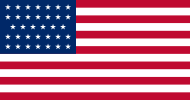 The US flag is modified to have thirty-four stars, reflecting the addition of one new state: Kansas.
The US flag is modified to have thirty-four stars, reflecting the addition of one new state: Kansas.
United States Civil War Four years of brutal conflict claim 623,000 lives.
Congress passes the First Confiscation Act, which prevents Confederate slave owners from re-enslaving runaways.
1861

 Between 1861 and 1862, Max Johann Sigismund Schultze (Germany) and Heinrich Anton de Bary (Germany) establish the essential unity of protoplasm in all living cells.
Between 1861 and 1862, Max Johann Sigismund Schultze (Germany) and Heinrich Anton de Bary (Germany) establish the essential unity of protoplasm in all living cells.
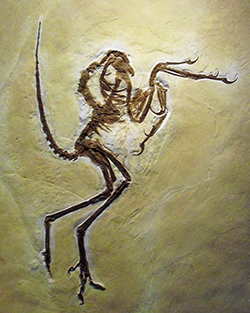 First recognized fossil Archaeopteryx lithographica skeleton is found in the stone quarries of Solnhofen.
First recognized fossil Archaeopteryx lithographica skeleton is found in the stone quarries of Solnhofen.
 In "Mémoires sur les corpuscles organisés qui existent dans l'atmosphère," Pasteur applies heat to bent-neck flasks to show unequivocally that the "organized bodies" (microbes) which drive fermentation originate from "organized bodies" that exist in the atmosphere. In this elegant series of experiments, Pasteur laid to rest the long-held belief in spontaneous generation."
In "Mémoires sur les corpuscles organisés qui existent dans l'atmosphère," Pasteur applies heat to bent-neck flasks to show unequivocally that the "organized bodies" (microbes) which drive fermentation originate from "organized bodies" that exist in the atmosphere. In this elegant series of experiments, Pasteur laid to rest the long-held belief in spontaneous generation."
On April 16, Congress abolishes slavery in the District of Columbia.
 Otto von Bismarck is appointed Prime Minister of Prussia.
Otto von Bismarck is appointed Prime Minister of Prussia.
 The Battle of Fort Donelson (11-16 Feb) is an early Union victory in the American Civil War, which opened the Cumberland River as an avenue for the invasion of the South. The success elevated Brig. Gen. Ulysses S. Grant from an obscure and largely unproven leader to the rank of major general.
The Battle of Fort Donelson (11-16 Feb) is an early Union victory in the American Civil War, which opened the Cumberland River as an avenue for the invasion of the South. The success elevated Brig. Gen. Ulysses S. Grant from an obscure and largely unproven leader to the rank of major general.
The Battle of Shiloh (6-7 Apr). Although the Confederates swept the field on the first day, Union troops under U. S. Grant retook the field on the second day. Combined Union and Confederate casualties (23,746 killed, wounded, or missing) represented more than the total American battle-related casualties of the American Revolutionary War, the War of 1812, and the Mexican-American War combined.
1862
(no entry for this year)
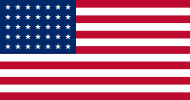 The US flag is modified to have thirty-five stars, reflecting the addition of one new state: West Virginia. This new state was created when Union sympathizers in the western portion of Virginia seceded from Virginia (then in secession from the US) and rejoined the Union.
The US flag is modified to have thirty-five stars, reflecting the addition of one new state: West Virginia. This new state was created when Union sympathizers in the western portion of Virginia seceded from Virginia (then in secession from the US) and rejoined the Union.
Abraham Lincoln's Emancipation Proclamation takes effect on January 1, legally freeing slaves in areas of the South still in rebellion against the United States.
 The Battle of Gettysburg (1-3 Jul) was the battle with the largest number of casualties in the American Civil War. Union Maj. Gen. George Gordon Meade's Army of the Potomac defeated attacks by Confederate Gen. Robert E. Lee's Army of Northern Virginia, ending Lee's invasion of the North.
The Battle of Gettysburg (1-3 Jul) was the battle with the largest number of casualties in the American Civil War. Union Maj. Gen. George Gordon Meade's Army of the Potomac defeated attacks by Confederate Gen. Robert E. Lee's Army of Northern Virginia, ending Lee's invasion of the North.

 The Siege of Vicksburg was the final major military action in the Vicksburg Campaign of the American Civil War. Union Maj. Gen. Ulysses S. Grant crossed the Mississippi River and drove the Confederate army of Lt. Gen. John C. Pemberton into the fortress city of Vicksburg, Mississippi, and placed the city under siege. After more than forty days, with no re-enforcement and supplies nearly gone, the garrison surrendered on July 4. This surrender, combined with Lee's defeat at Gettysburg the previous day, represents the turning point of the war. From then on, military victory for the Confederacy was impossible.
The Siege of Vicksburg was the final major military action in the Vicksburg Campaign of the American Civil War. Union Maj. Gen. Ulysses S. Grant crossed the Mississippi River and drove the Confederate army of Lt. Gen. John C. Pemberton into the fortress city of Vicksburg, Mississippi, and placed the city under siege. After more than forty days, with no re-enforcement and supplies nearly gone, the garrison surrendered on July 4. This surrender, combined with Lee's defeat at Gettysburg the previous day, represents the turning point of the war. From then on, military victory for the Confederacy was impossible.
1863
Anti-evolutionist James Hunt, founder of the Anthropological Society of London, gives a presidential address to the society stating that human races were created separately. He further argues that the African species is closer in ability to apes than to Europeans.
Alfred Russel Wallace describes the "Wallace line," the dividing line between Indo-Malayan and Austro-Malayan fauna, in Proceedings of the Royal Geographical Society of London.

 Dominique Alexandre Godron and Charles Victor Naudin (France) independently report experiments in plant hybridization. Naudin confirmed Sageret's work, in general discussed work of the early hybridizers, and reported dominance and segregation in Datura (jimsonweed) hybrids. He did not deal with single characters and reported no statistical observations on the second generation. His theoretical explanation of his facts was a forerunner of Mendel's ideas, but inferred rather than deduced.
Dominique Alexandre Godron and Charles Victor Naudin (France) independently report experiments in plant hybridization. Naudin confirmed Sageret's work, in general discussed work of the early hybridizers, and reported dominance and segregation in Datura (jimsonweed) hybrids. He did not deal with single characters and reported no statistical observations on the second generation. His theoretical explanation of his facts was a forerunner of Mendel's ideas, but inferred rather than deduced.
T. H. Huxley publishes Man's Place in Nature discussing human and primate paleontology, and showing similarities between humans and other animals.
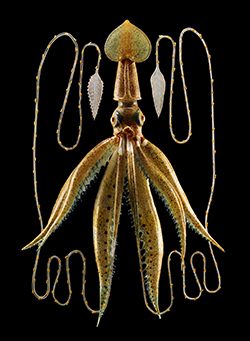 Father-and-son glassworkers Leopold and Rudolf Blaschka begin making glass models of marine invertebrates. Marine biologists will refer to their exquisitely detailed, accurate models 150 years later while trying to see how many of the depicted species can still be found in the wild.
Father-and-son glassworkers Leopold and Rudolf Blaschka begin making glass models of marine invertebrates. Marine biologists will refer to their exquisitely detailed, accurate models 150 years later while trying to see how many of the depicted species can still be found in the wild.
 After the Confederate defeat at Chattanooga, President Lincoln promoted Grant to a special regular army rank, Lieutenant General, authorized by Congress on March 2, 1864. This rank had previously been awarded two other times, a full rank to George Washington and a Brevet rank to Winfield Scott. Lincoln then places Grant in charges of all Union forces.
After the Confederate defeat at Chattanooga, President Lincoln promoted Grant to a special regular army rank, Lieutenant General, authorized by Congress on March 2, 1864. This rank had previously been awarded two other times, a full rank to George Washington and a Brevet rank to Winfield Scott. Lincoln then places Grant in charges of all Union forces.


 Sherman captures Atlanta, marches to Savannah. Through a series of bloody battles, Grant forces Lee back to Petersburg, Virginia, and then lays siege to the city. Lincoln is reelected, destroying the South's hope for a political settlement to the war.
Sherman captures Atlanta, marches to Savannah. Through a series of bloody battles, Grant forces Lee back to Petersburg, Virginia, and then lays siege to the city. Lincoln is reelected, destroying the South's hope for a political settlement to the war.
1864
 Ernst Haeckel (Häckel) outlines the essential elements of modern zoological classification.
Ernst Haeckel (Häckel) outlines the essential elements of modern zoological classification.
On February 1, Abraham Lincoln signs the 13th Amendment to the United States Constitution outlawing slavery throughout the United States.
The Thirteenth Amendment to the United States Constitution officially abolished slavery and involuntary servitude, except as punishment for a crime. It was passed by the Senate on April 8, 1864, passed by the House on January 21, 1865, and adopted on December 6, 1865.
Lee surrenders, US Civil war ends, Lincoln assassinated.
 Andrew Johnson becomes seventeenth president of the United States.
Andrew Johnson becomes seventeenth president of the United States.
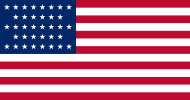 The US flag is modified to have thirty-six stars, reflecting the addition of one new state: Nevada.
The US flag is modified to have thirty-six stars, reflecting the addition of one new state: Nevada.
 The Ku Klux Klan is formed on December 24 in Polanski, Tennessee, by six Confederate veterans. Nathan Bedford Forrest, a former Confederate cavalry general and slave trader, serves as the Klan's first grand wizard or leader-in-chief.
The Ku Klux Klan is formed on December 24 in Polanski, Tennessee, by six Confederate veterans. Nathan Bedford Forrest, a former Confederate cavalry general and slave trader, serves as the Klan's first grand wizard or leader-in-chief.
1865
John Lubbock publishes Prehistoric Times dividing what has previously been understood to be the Stone Age into two parts: the older Paleolithic and the newer Neolithic. In the same book, he also argues that modern Tasmanians and Fuegians are throwbacks to archaic humans.
Franz Schweigger-Seidel and A. von la Valette St. George (Germany) independently prove that a spermatozoon is a single cell and contains nucleus and cytoplasm
 Gregor Mendel presents his work on inheritance in peas to the Brünn Natural History Society. The results are published the following year.
Gregor Mendel presents his work on inheritance in peas to the Brünn Natural History Society. The results are published the following year.
Sir John William Dawson of McGill University identifies "shells" of huge foraminiferal protozoans. Known as Eozoön or "dawn animal," this find is used as an argument against evolution because it shows a relatively "modern" animal early in the fossil record. It will prove, however, to be a geologically young pseudofossil formed by heat and pressure on limestone.
Paolo Mantegazza publishes Degli Innesti Animali e della Produzione Artificiale delle Cellule (On Animal Grafts and Artificial Cell Production) describing the results of a series of interspecies animal grafts, such as the transplant of a cockspur onto a cow ear. Grafts described include transplants between dogs, frogs and rodents. Mantegazza reports that some grafts decomposed while others became "pathological tumours."
On June 13, Congress approves the Fourteenth Amendment to the Constitution, guaranteeing due process and equal protection under the law to all citizens. The amendment also grants citizenship to African-Americans.
1866
German zoologist Ernst Haeckel publishes General Morphology of Organisms, the first detailed genealogical tree relating all known organisms, incorporating the principles of Darwinian evolution.
 Ernst Heinrich Haeckel (Häckel) hypothesizes that the nucleus of a cell transmits its hereditary information.
Ernst Heinrich Haeckel (Häckel) hypothesizes that the nucleus of a cell transmits its hereditary information.
 Mendel publishes his work on heredity, Versuche über Pflanzen Hybriden.
Mendel publishes his work on heredity, Versuche über Pflanzen Hybriden.
 Ernst Heinrich Haeckel (Häckel) first used the term ECOLOGY to describe the study of living organisms and their interactions with other organisms and with their environment.
Ernst Heinrich Haeckel (Häckel) first used the term ECOLOGY to describe the study of living organisms and their interactions with other organisms and with their environment.
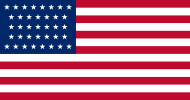 The US flag is modified to have thirty-seven stars, reflecting the addition of one new state: Nebraska.
The US flag is modified to have thirty-seven stars, reflecting the addition of one new state: Nebraska.
The Alaska Purchase resulted in the transfer of Alaska to the United States from the Russian Empire for a total price of $ 7,000,000. The purchase, made at the initiative of United States Secretary of State William H. Seward, gained 586,412 square miles of new United States territory.
1867
H. S. Bidwell (United States) reports controlled pollination in maize.
The Meiji Restoration in Japan (led by samurai from the western clans of Satsuma, Choshu, Tosa, and Hizen) overthrows the feudal shogunate system and initiates Japan's participation in the modern world.
The Impeachment of Andrew Johnson, 17th President of the United States, was one of the most dramatic events in the political life of the United States during Reconstruction, and the first impeachment in history of a sitting United States president.
1868
 Charles Darwin publishes The Variation of Animals and Plants under Domestication, in which he offers his own theory of heredity, which he called the "Provisional Hypothesis of Pangenesis."
Charles Darwin publishes The Variation of Animals and Plants under Domestication, in which he offers his own theory of heredity, which he called the "Provisional Hypothesis of Pangenesis."
Ernst Haeckel publishes Natürliche Schöpfungsgeschichte, subdividing humanity into 12 separate species. He also asserts that evolution consists of 22 phases, the 21st being the "missing link" between apes and humans.
Thomas Henry Huxley publishes "On the Animals which are Most Nearly Intermediate between Birds and Reptiles," arguing that birds are descendants of dinosaurs. This suggestion will not be taken very seriously for another century.
Three human skulls and other skeletal remains, roughly 30,000 years old, are discovered at a rock shelter called Cro-Magnon (old French for "big hole").
On February 26, Congress sends the Fifteenth Amendment to the Constitution to the states for approval. The amendment guarantees African-American males the right to vote.
Transcontinental Rail Service Begun in the United States On May 10th, at Promontory Point, Utah, a golden rail spike was struck, completing the first transcontinental railroad line.
 Ulysses S. Grant becomes eighteenth president of the United States.
Ulysses S. Grant becomes eighteenth president of the United States.
 Japan colonizes Hokkaido as part of its new nation state.
Japan colonizes Hokkaido as part of its new nation state.
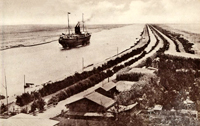 The Suez Canal opened to traffic on 17 November. The canal linked the Mediterranean and the Red Sea. It was 103 miles long and it brought Oriental ports 5,000 miles closer to Europe. Work had begun on the canal in 1859, financed primarily by French investors. The canal increased the strategic importance of Egypt to European powers.
The Suez Canal opened to traffic on 17 November. The canal linked the Mediterranean and the Red Sea. It was 103 miles long and it brought Oriental ports 5,000 miles closer to Europe. Work had begun on the canal in 1859, financed primarily by French investors. The canal increased the strategic importance of Egypt to European powers.
1869
 Francis Galton publishes Hereditary Genius. In it he describes a scientific study of human pedigrees from which he concludes that intelligence has a genetic basis.
Francis Galton publishes Hereditary Genius. In it he describes a scientific study of human pedigrees from which he concludes that intelligence has a genetic basis.
 Standard Oil Formed On January 10th, 1870, John D Rockefeller and four partners incorporate the Standard Oil Company. The company gains control of nearly 95% of the oil refining industry in the United States.
Standard Oil Formed On January 10th, 1870, John D Rockefeller and four partners incorporate the Standard Oil Company. The company gains control of nearly 95% of the oil refining industry in the United States.
The First Vatican Council of the Roman Catholic Church proclaims the dogma of the infallibility of the Pope.
The Franco-Prussian war (1870-71) leads to the formation of the German Empire.
1870
O. C. Marsh discovers the first North American pterosaur, from chalk deposits in Kansas. He calculates the wingspan at 20 feet. The following year, he will collect more fossils that confirm this calculation.
Quarry workers in the Valley Forge area discover the Port Kennedy Bone Cave, under roughly the same site where the Continental Army wintered over a century earlier. The site proves rich in Pleistocene plant and animal fossils, but will be accidentally flooded decades later. The site will be lost to science until its rediscovery after the turn of the 21st century.
The rivalry between fossil collectors O. C. Marsh and E. D. Cope turns ugly when Marsh publicly points out Cope's error in reconstructing a fossil marine reptile (putting its head on the tip of its tail). Their rivalry is the public's gain as they try to outdo each other in identifying new dinosaur species — over 130.
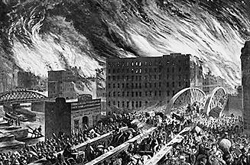 On October 8th, a fire broke out in the west side of Chicago. The Great Chicago Fire lasted two days, killing 300 people, and destroying most of Chicago. Property damages were estimated at 200 million dollars.
On October 8th, a fire broke out in the west side of Chicago. The Great Chicago Fire lasted two days, killing 300 people, and destroying most of Chicago. Property damages were estimated at 200 million dollars.
On October 8th, a fire broke out in the village of Peshtigo, Wisconsin. The Peshtigo Fire caused more deaths than any other fire in the history of the United States. By the time it was over, 1,875 square miles (1.2 million acres) of forest had been consumed, an area approximately twice the size of the state of Rhode Island. Some sources list as much as 1.5 million acres burned. Twelve communities were destroyed. An accurate death toll has never been determined since local population records were destroyed in the fire. Between 1,200 and 2,500 people are thought to have lost their lives.
The occurrence of this fire, and several other smaller fires, on the same day as the Great Chicago fire has lead some to speculate that all of the fires may have had a common cause: multiple impacts from fragments of a disintegrating comet.

 Henry Morton Stanley finds David Livingstone in Africa, greeting the Scotsman with the famous words, "Dr. Livingstone, I presume."
Henry Morton Stanley finds David Livingstone in Africa, greeting the Scotsman with the famous words, "Dr. Livingstone, I presume."
The Second Reich proclaimed With the German victory in France complete, the German Reichstag(parliament) proclaimed the creation of the Second Reich. The Reichstag approved with minor modification the constitution of the Northern German Federation. William I became King of Germany with Otto Bismarck the first chancellor.
1871
 Publication of Charles Darwin's Descent of Man, in which the role of sexual selection in evolution is described for the first time.
Publication of Charles Darwin's Descent of Man, in which the role of sexual selection in evolution is described for the first time.
Lord Kelvin suggests that "the germs of life might have been brought to the Earth by some meteorite," an idea that will enjoy support a century later.
 Johann Friedrich Miescher isolates a substance which he calls NUCLEIN from the nuclei of white blood cells. The substance was soluble in alkalis but not in acids and came to be known as nucleic acid.
Johann Friedrich Miescher isolates a substance which he calls NUCLEIN from the nuclei of white blood cells. The substance was soluble in alkalis but not in acids and came to be known as nucleic acid.
 Lambert Adolphe Jacques Quetelet showed the importance of statistical analysis for biologists and laid the foundation of biometry.
Lambert Adolphe Jacques Quetelet showed the importance of statistical analysis for biologists and laid the foundation of biometry.
(no entry for this year)
1872
 Ferdinand Julius Cohn coined the term BACTERIUM and founded the study of bacteriology.
Ferdinand Julius Cohn coined the term BACTERIUM and founded the study of bacteriology.
Slavery is abolished in Puerto Rico.
Spain decrees the end of slavery in Cuba, still a Spanish colony.
1873
 Anton Schneider observed and described the behavior of nuclear filaments (chromosomes) during cell division in his study of the platyhelminth Mesostoma. His account was the first accurate description of the process of mitosis in animal cells.
Anton Schneider observed and described the behavior of nuclear filaments (chromosomes) during cell division in his study of the platyhelminth Mesostoma. His account was the first accurate description of the process of mitosis in animal cells.
Francis Galton publishes a paper entitled "Hereditary Improvement" arguing that people "of really good breed" should be encouraged to reproduce while their inferiors should be discouraged from doing so. This, he argues, will improve humanity the way selective breeding improves livestock.
(no entry for this year)
1874
The Hamburg Tierpark features an "anthropological-zoological" display of Lapps acting out "daily life" with reindeer. The show draws enthusiastic crowds.
(no entry for this year)
1875
 Eduard Strasburger accurately described the processes of mitotic cell division in plants.
Eduard Strasburger accurately described the processes of mitotic cell division in plants.
 Francis Galton demonstrates the usefulness of twin studies for elucidating the relative influence of nature (heredity) and nurture (environment) upon behavioral traits.
Francis Galton demonstrates the usefulness of twin studies for elucidating the relative influence of nature (heredity) and nurture (environment) upon behavioral traits.
 Oscar Hertwig concludes from a study on sea urchins that fertilization in both animals and plants consists of the physical union of the two nuclei contributed by the male and female parents.
Oscar Hertwig concludes from a study on sea urchins that fertilization in both animals and plants consists of the physical union of the two nuclei contributed by the male and female parents.
Paleontologist Roberto Lawley collects a badly eroded Pliocene whale bone near Pisa, Italy, and donates it to the paleontology museum of Florence. In the 21st century, close examination will indicate boreholes of Osedax, mouthless, gutless marine worms (nicknamed zombie worms) that extract nutrients by drilling into bones.
 Custer Killed at Little Bighorn On June 25th, in Dakota territory, at the Little Big Horn, General George Armstrong Custer (who graduated from West Point in 1861, last in his class) and all 256 troops were killed. The defeat of Custer in the Battle of the Little Big Horn was the last Indian victory.
Custer Killed at Little Bighorn On June 25th, in Dakota territory, at the Little Big Horn, General George Armstrong Custer (who graduated from West Point in 1861, last in his class) and all 256 troops were killed. The defeat of Custer in the Battle of the Little Big Horn was the last Indian victory.
 Alexander Graham Bell patents the telephone.
Alexander Graham Bell patents the telephone.
1876
Charles Doolittle Walcott becomes the first to successfully find and describe elusive trilobite legs, ending speculation about how the animals moved.
The Compromise of 1877 ends Reconstruction and gives the Presidency to Rutherford B. Hayes. Although Democratic presidential candidate Samuel Tilden won the popular vote, Southern Democratic leaders agreed to support Rutherford Hayes' efforts to obtain the disputed electoral votes of Florida, Louisiana, and South Carolina in exchange for the withdrawal of the last federal troops from the South and the end of federal efforts to protect the civil rights of African Americans.
 Rutherford B. Hayes becomes nineteenth president of the United States.
Rutherford B. Hayes becomes nineteenth president of the United States.
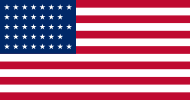 The US flag is modified to have thirty-eight stars, reflecting the addition of one new state: Colorado.
The US flag is modified to have thirty-eight stars, reflecting the addition of one new state: Colorado.
Frederick Douglass becomes US Marshal for the District of Columbia.
1877
 Hermann Fol reports watching the spermatozoan of a starfish penetrate the egg. He was able to see the transfer of the intact nucleus of the sperm into the egg, where it became the male pronucleus.
Hermann Fol reports watching the spermatozoan of a starfish penetrate the egg. He was able to see the transfer of the intact nucleus of the sperm into the egg, where it became the male pronucleus.
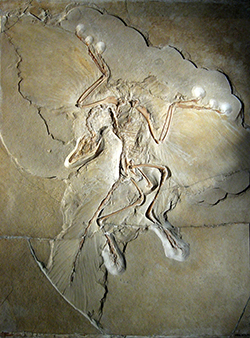 A new Archaeopteryx fossil is discovered in Solnhofen, complete with a toothy jaw. This well-preserved fossil, which will become known as the Berlin Archaeopteryx, supports Huxley's previous observations about its reptilian affinities.
A new Archaeopteryx fossil is discovered in Solnhofen, complete with a toothy jaw. This well-preserved fossil, which will become known as the Berlin Archaeopteryx, supports Huxley's previous observations about its reptilian affinities.
Comparative anatomy professor François Louis Paul Gervais undertakes thin-section microscopy studies of fossil eggs. His work will be largely forgotten until Roy Chapman Andrews discovers dinosaur eggs in Mongolia in the 1920s.
 Germ Theory of Disease: Louis Pasteur presented his Germ Theory of disease. Joseph Lister went on to initiate the practice of insuring that surgeons were clean before they conducted surgery.
Germ Theory of Disease: Louis Pasteur presented his Germ Theory of disease. Joseph Lister went on to initiate the practice of insuring that surgeons were clean before they conducted surgery.

 Thomas Edison and Joseph Wilson Swan produce first successful incandescent electric light.
Thomas Edison and Joseph Wilson Swan produce first successful incandescent electric light.
1878
 Wilhelm Friedrich Kühne proposed the term ENZYME (meaning "in yeast") and distinguished enzymes from the micro-organisms that produce them.
Wilhelm Friedrich Kühne proposed the term ENZYME (meaning "in yeast") and distinguished enzymes from the micro-organisms that produce them.
Charlotte Hill collects a well-preserved fossil butterfly, later named Prodryas persephone, from the Florissant Formation in Colorado. The fossil is about 35 million years old.
Entire skeletons of Iguanodon are discovered in Belgium, enabling a more accurate reconstruction of this dinosaur than those of Owen and Waterhouse Hawkins in the 1850s. Engineer-turned-paleontologist Louis Dollo will publish the first of several papers on these fossils in 1882.
 F. W. Woolworth opens his first "five and dime store".
F. W. Woolworth opens his first "five and dime store".
1879
 From 1879 through 1882, Walther Flemming describes and names CHROMATIN, MITOSIS, and the SPIREME. He makes the first accurate counts of chromosome numbers and accurately drew the "longitudinal splitting" of chromosomes.
From 1879 through 1882, Walther Flemming describes and names CHROMATIN, MITOSIS, and the SPIREME. He makes the first accurate counts of chromosome numbers and accurately drew the "longitudinal splitting" of chromosomes.
Eight-year-old Maria de Sautuola finds a Paleolithic cave drawing of bison on her father's property in Spain. It is the oldest artwork yet discovered, but it will be dismissed as a forgery for years, considered too beautiful to be the work of prehistoric savages.
(no entry for this year)
1880


 Throughout the decade of 1880-1890, Walther Flemming, Eduard Strasburger, Edouard van Beneden, and others elucidate the essential facts of cell division and stressed the importance of the qualitative and quantitative equality of chromosome distribution to daughter cells.
Throughout the decade of 1880-1890, Walther Flemming, Eduard Strasburger, Edouard van Beneden, and others elucidate the essential facts of cell division and stressed the importance of the qualitative and quantitative equality of chromosome distribution to daughter cells.
Charles Darwin and his son Francis publish the results of their studies on plant responses to light, explaining that phototropism (bending toward the light) results from light reaching the top of a plant's shoot.
 James A Garfield becomes twentieth president of the United States.
James A Garfield becomes twentieth president of the United States.
Six months after taking office, Garfield becomes the second US President to be assassinated, when he was shot by Charles J. Guiteau — a disgruntled and impoverished would-be office holder. When he purchased the pistol used in the assassination, he chose to buy one with an ivory handle because he thought it would look good as a museum exhibit after the assassination.
In January, the Tennessee State Legislature votes to segregate railroad passenger cars.
 On the Fourth of July, Booker T. Washington opens Tuskegee Institute in central Alabama.
On the Fourth of July, Booker T. Washington opens Tuskegee Institute in central Alabama.
 Chester A. Arthur becomes twenty-first president of the United States.
Chester A. Arthur becomes twenty-first president of the United States.
 Clara Barton founds the American Red Cross.
Clara Barton founds the American Red Cross.
1881
(no entry for this year)
Britain Invades Egypt The British invaded Egypt in response to anti foreign riots. The British defeated the army of Arabi Pasha at Al Tell. On September 15th they captured Cairo. Arabi pasha the nationalist leader was deported to Ceylon.
1882
Walther Flemming publishes accurate depictions of cell division (mitosis) in Zellsubstanz, Kern und Zelltheilung.
 Eduard Strasburger coins the terms CYTOPLASM and NUCLEOPLASM.
Eduard Strasburger coins the terms CYTOPLASM and NUCLEOPLASM.
 W. Flemming discovers lampbrush chromosomes and coins the term MITOSIS.
W. Flemming discovers lampbrush chromosomes and coins the term MITOSIS.
Karl Alfred von Zittel describes an exceptionally well-preserved pterosaur wing showing flight membranes in detail.
Charles Darwin publishes his final letter to Nature, on the dispersal of freshwater bivalves. His obituary appears the same month. In this paper, Darwin acknowledges the assistance of W. D. Crick or Northampton. Later, Crick's grandson — Francis Crick — will be one of the co- discoverers of the structure of DNA.
On October 16, the United States Supreme Court declares invalid the Civil Rights Act of 1875, stating that the federal government cannot bar corporations or individuals from discriminating on the basis of race.
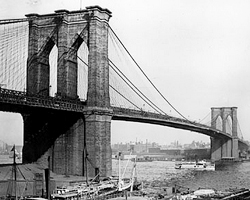 On May 25, the New York boroughs of Manhattan and Brooklyn were linked with the opening of the Brooklyn Bridge. The bridge was the first steel suspension bridge erected in the United States. It was built at a cost of $16 million and 26 lives. When it opened, the Brooklyn Bridge was the longest suspension bridge in the world.
On May 25, the New York boroughs of Manhattan and Brooklyn were linked with the opening of the Brooklyn Bridge. The bridge was the first steel suspension bridge erected in the United States. It was built at a cost of $16 million and 26 lives. When it opened, the Brooklyn Bridge was the longest suspension bridge in the world.
1883
 August Weismann points out the distinction in animals between the somatic cell line and the germ cells, stressing that only changes in germ cells are transmitted to further generations.
August Weismann points out the distinction in animals between the somatic cell line and the germ cells, stressing that only changes in germ cells are transmitted to further generations.
 Edouard van Beneden announced the principles of genetic continuity of chromosomes and reported the occurrence of chromosome reduction at germ cell formation. The sperm and egg are haploid and fertilization restores the diploid chromosome number.
Edouard van Beneden announced the principles of genetic continuity of chromosomes and reported the occurrence of chromosome reduction at germ cell formation. The sperm and egg are haploid and fertilization restores the diploid chromosome number.
 Wilhelm Roux offers a possible explanation for the function of mitosis.
Wilhelm Roux offers a possible explanation for the function of mitosis.
 William Keith Brooks, a professor at The Johns Hopkins University, publishes The Law of Heredity: A Study of the Cause of Variation and the Origin of Living Organisms. Although this speculative work did not significantly advance the understanding of heredity, brooks' thinking is important because during his career he provided instruction to and supervised the early research of Thomas H. Morgan, Edmund Beecher Wilson, and William Bateson — ultimately some of the most important contributors to the new science of genetics.
William Keith Brooks, a professor at The Johns Hopkins University, publishes The Law of Heredity: A Study of the Cause of Variation and the Origin of Living Organisms. Although this speculative work did not significantly advance the understanding of heredity, brooks' thinking is important because during his career he provided instruction to and supervised the early research of Thomas H. Morgan, Edmund Beecher Wilson, and William Bateson — ultimately some of the most important contributors to the new science of genetics.
 Pierre Émile Duclaux introduces the custom of designating an enzyme by the by the name of the substrate on which its action was first reported and adding the suffix -ase.
Pierre Émile Duclaux introduces the custom of designating an enzyme by the by the name of the substrate on which its action was first reported and adding the suffix -ase.
(no entry for this year)
1884



 During 1884-88, identification of the cell nucleus as the basis for inheritance was independently reported by Oscar Hertwig, Eduard Strasburger, Albrecht von Kölliker, and August Weismann.
During 1884-88, identification of the cell nucleus as the basis for inheritance was independently reported by Oscar Hertwig, Eduard Strasburger, Albrecht von Kölliker, and August Weismann.
 Gregor Mendel dies on January 6th, without ever knowing that his work on peas would lead to the transformation of biological research.
Gregor Mendel dies on January 6th, without ever knowing that his work on peas would lead to the transformation of biological research.


 Walther Flemming, Eduard Strasburger and Edouard van Beneden demonstrate that chromosome doubling occurs by a process of longitudinal splitting. Strasburger describes and names the PROPHASE, METAPHASE, and ANAPHASEstages of chromosomal division.
Walther Flemming, Eduard Strasburger and Edouard van Beneden demonstrate that chromosome doubling occurs by a process of longitudinal splitting. Strasburger describes and names the PROPHASE, METAPHASE, and ANAPHASEstages of chromosomal division.
1885
 August Weismann formulates the germ-plasm theory which held that the germ plasm was separate from the somatoplasm and was continuous from generation to generation.
August Weismann formulates the germ-plasm theory which held that the germ plasm was separate from the somatoplasm and was continuous from generation to generation.
 Carl Rabl theorized the individuality of chromosomes in all stages of the cell cycle.
Carl Rabl theorized the individuality of chromosomes in all stages of the cell cycle.
 Walther Flemming observed sister chromatids passing to opposite poles of the cell during mitosis.
Walther Flemming observed sister chromatids passing to opposite poles of the cell during mitosis.
Slavery is abolished in Cuba.
Daimler produces his first car.
1886
 Francis Galton devised a new useful statistical tool, the correlation table.
Francis Galton devised a new useful statistical tool, the correlation table.
 Hugo de Vries (Holland) discovers aberrant evening primrose plants at Hilversum, Holland. Experiments with these extending over 15 years formed the basis for his mutation theory of evolution.
Hugo de Vries (Holland) discovers aberrant evening primrose plants at Hilversum, Holland. Experiments with these extending over 15 years formed the basis for his mutation theory of evolution.
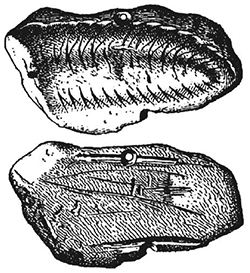 A. Ficatier publishes an account of the discovery of a trilobite perforated with two holes (perhaps to hang on a thread) at a Magdalenian- age site in France. The fossil lends the site its name of La Grotte du Trilobite.
A. Ficatier publishes an account of the discovery of a trilobite perforated with two holes (perhaps to hang on a thread) at a Magdalenian- age site in France. The fossil lends the site its name of La Grotte du Trilobite.
John Bell Hatcher develops the "ant hill method of collecting minute fossils," collecting hundreds of tiny fossil teeth and jaws pushed to the surface by ants. He even carries shovelfuls of ants and sediment to other fossil localities in need of excavation by the arthropods.
African-American players are banned from major league baseball.
Slavery is abolished in Brazil
Interstate Commerce Act Passed On February 4, President Cleveland signed into law the first bill regulating the railroads. The act, which called for just and equal rates, also limited pooling (secret pacts between railroads). This measure received broad support in the Congress.
The United States acquires Pearl Harbor, Hawaii, as a coaling station and future naval base.
1887
 August Weismann elaborated an all-encompassing theory of chromosome behavior during cell division and fertilization and predicted the occurrence of a reduction division (meiosis) in all sexual organisms.
August Weismann elaborated an all-encompassing theory of chromosome behavior during cell division and fertilization and predicted the occurrence of a reduction division (meiosis) in all sexual organisms.
 Edouard van Beneden demonstrated chromosome reduction in gamete maturation, thereby confirming August Weismann's predictions.
Edouard van Beneden demonstrated chromosome reduction in gamete maturation, thereby confirming August Weismann's predictions.
 Wilhelm Roux put forth the suggestion that the linearly arranged qualities of the chromosomes were equally transmitted to both daughter cells at meiosis.
Wilhelm Roux put forth the suggestion that the linearly arranged qualities of the chromosomes were equally transmitted to both daughter cells at meiosis.
 Harry Govier Seeley determines that dinosaurs consist of "lizard- hipped" (saurischian) and "bird-hipped" (ornithischian) branches.
Harry Govier Seeley determines that dinosaurs consist of "lizard- hipped" (saurischian) and "bird-hipped" (ornithischian) branches.
 George Eastman Patents Camera George Eastman patents the hand held camera.
George Eastman Patents Camera George Eastman patents the hand held camera.
Slavery is abolished in Brazil, bringing to an end of the legal sanction of slavery in the Americas.
1888
German anatomist W. von Waldeyer names chromosomes.
 Heinrich Wilhelm Gottfried von Waldeyer names the CHROMOSOME.
Heinrich Wilhelm Gottfried von Waldeyer names the CHROMOSOME.
 Theodor Boveri verifies August Weismann's predictions of chromosome reduction by direct observation in Ascaris.
Theodor Boveri verifies August Weismann's predictions of chromosome reduction by direct observation in Ascaris.
Florida becomes the first state to use the poll tax to disenfranchise black voters.
 Frederick Douglass is appointed minister to Haiti.
Frederick Douglass is appointed minister to Haiti.
 Benjamin Harrison becomes twenty-third president of the United States.
Benjamin Harrison becomes twenty-third president of the United States.
Oklahoma Land Rush The last major unsettled territory in the United States (which had been exclusively Indian) is opened for settlement. Over 200,000 settlers gather at the borders of the territory awaiting the opportunity to seize land. On the first day the territory was opened, 12,000 settlers arrived in Guthrie, Oklahoma.
1889
 Francis Galton publishes Natural Inheritance. In it he describes the quantitative measurement of metric traits in populations. He thus founds biometry and the statistical study of variation. Ultimately, he formulates the Law of Ancestral Inheritance, a statistical description of the relative contributions to heredity made by one's ancestors.
Francis Galton publishes Natural Inheritance. In it he describes the quantitative measurement of metric traits in populations. He thus founds biometry and the statistical study of variation. Ultimately, he formulates the Law of Ancestral Inheritance, a statistical description of the relative contributions to heredity made by one's ancestors.
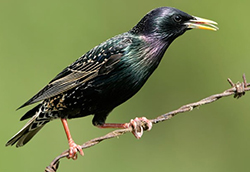 About 60 common starlings are released into New York's Central Park by Eugene Schieffelin, as part of an effort to introduce every bird species mentioned in the works of William Shakespeare into North America. The original 60 birds have since swelled in number to 150 million, occupying an area extending from southern Canada and Alaska to Central America.
About 60 common starlings are released into New York's Central Park by Eugene Schieffelin, as part of an effort to introduce every bird species mentioned in the works of William Shakespeare into North America. The original 60 birds have since swelled in number to 150 million, occupying an area extending from southern Canada and Alaska to Central America.
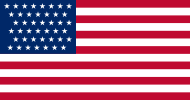 The US flag is modified to have forty-three stars, reflecting the addition of five new states: Idaho, Montana, North Dakota, South Dakota, and Washington.
The US flag is modified to have forty-three stars, reflecting the addition of five new states: Idaho, Montana, North Dakota, South Dakota, and Washington.
The United States Army massacres 200 Indians at Wounded Knee in South Dakota, ending the Indian wars of resistance.
1890
 The numerical equality of paternal and maternal chromosomes at fertilization was established by Theodor Boveri and Jean-Louis-Léon Guignard.
The numerical equality of paternal and maternal chromosomes at fertilization was established by Theodor Boveri and Jean-Louis-Léon Guignard.
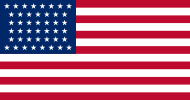 The US flag is modified to have forty-four stars, reflecting the addition of one new state: Wyoming.
The US flag is modified to have forty-four stars, reflecting the addition of one new state: Wyoming.
The first basketball game is played, in Springfield, Massachusetts.
1891
(no entry for this year)
A record 230 people are lynched in the United States this year; 161 are black and 69 white.
1892
 Publication of August Weismann's book Das Keimplasma (The Germ Plasm) emphasized meiosis as an exact mechanism of chromosome distribution.
Publication of August Weismann's book Das Keimplasma (The Germ Plasm) emphasized meiosis as an exact mechanism of chromosome distribution.
Joseph Whiteaves describes Anomalocaris, meaning "anomalous shrimp," from the Cambrian. The fossil that Whiteaves identifies as a shrimp will later prove to be part of a much larger animal.
1893
Entomologist E.B. Poulton studies caterpillars from the species Gastropacha quercifolia, noting how siblings look different depending on where they live and what they eat. His discovery will become known as phenotypic plasticity.
(no entry for this year)
1894
 Hans Driesch expounded the view that all nuclei of an organism were equipotential but varied in their activity in accordance with the differentiation of tissues.
Hans Driesch expounded the view that all nuclei of an organism were equipotential but varied in their activity in accordance with the differentiation of tissues.
 Karl Pearson published the first in a long series of contributions to the mathematical theory of evolution. Methods for analyzing statistical frequency distributions were developed in detail.
Karl Pearson published the first in a long series of contributions to the mathematical theory of evolution. Methods for analyzing statistical frequency distributions were developed in detail.
 William Bateson's Materials for the Study of Variation emphasized the importance of discontinuous variations, foreshadowing the rediscovery of Mendel's work.
William Bateson's Materials for the Study of Variation emphasized the importance of discontinuous variations, foreshadowing the rediscovery of Mendel's work.
Eugène Dubois publishes his monograph of Pithecanthropus erectus, or Java Man, a missing link between humans and apes.
French paleontologist Charles Brongniart describes a fossil dragonfly from the Carboniferous with a 2-foot (63-centimeter) wingspan. The find implies a higher oxygen content in the Earth's ancient atmosphere.
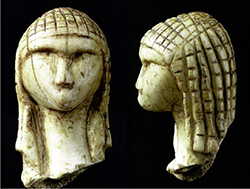 The intricately carved mammoth ivory figurine known as the Lady (or Venus) of Brassempouy is discovered in France. At roughly 25,000 years old, it ranks among the earliest known depictions of a human face.
The intricately carved mammoth ivory figurine known as the Lady (or Venus) of Brassempouy is discovered in France. At roughly 25,000 years old, it ranks among the earliest known depictions of a human face.
The Lumiere Brothers introduce moving pictures.
The Sino-Japanese War ends and Japan gains dominance over Korea and Taiwan.
1895
A team of paleontologists, including Samuel Williston, Elmer Riggs and Barnum Brown, successfully excavates a Triceratops fossil in Wyoming.
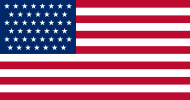 The US flag is modified to have forty-five stars, reflecting the addition of one new state: Utah.
The US flag is modified to have forty-five stars, reflecting the addition of one new state: Utah.
In Plessy vs. Ferguson, the United States Supreme Court declares legalized segregation in the United States to be constitutional.
 The will of Alfred Nobel establishes annual prizes for peace, science, and literature.
The will of Alfred Nobel establishes annual prizes for peace, science, and literature.
1896
 E. B. Wilson publishes The Cell in Development and Heredity. This influential treatise (ultimately reprinted in several editions) distills the information compiled concerning cytology in the half-century since Schleiden and Schwann put forth the cell theory.
E. B. Wilson publishes The Cell in Development and Heredity. This influential treatise (ultimately reprinted in several editions) distills the information compiled concerning cytology in the half-century since Schleiden and Schwann put forth the cell theory.
Dublin anatomist Daniel Cunningham concludes that Neanderthals represent an intermediate step between Pithecanthropus erectus and modern humans.
J. de Morgan describes nine pierced fossil urchins found in a Chalcolithic tomb at Toukh.
 William McKinley becomes twenty-fifth president of the United States. McKinley was the last veteran of the Civil war to serve as President. He enlisted as a private in the 23rd Ohio Infantry, and by the end of the war he had been promoted several times, finally leaving the service with the rank of Captain.
William McKinley becomes twenty-fifth president of the United States. McKinley was the last veteran of the Civil war to serve as President. He enlisted as a private in the 23rd Ohio Infantry, and by the end of the war he had been promoted several times, finally leaving the service with the rank of Captain.
 Zionist activity begins in the Middle East, under the World Zionist Congress called by Theodore Herzl.
Zionist activity begins in the Middle East, under the World Zionist Congress called by Theodore Herzl.
1897
 Gabriel Bertrand coined the term COENZYME to designate inorganic substances which were necessary to activate certain enzymes.
Gabriel Bertrand coined the term COENZYME to designate inorganic substances which were necessary to activate certain enzymes.
The United States Supreme Court, in Williams vs. Mississippi, rules that poll taxes and literacy tests do not violate the Constitution.
United States invades Cuba and defeats Spain in the Spanish-American War.
1898
(no entry for this year)
The Boer war breaks out between Afrikaners and the British in southern Africa.
1899

 L. Cuénot (France) working with animals, and Strasburger (Germany) working with plants, advance theory that sex is controlled within the germ cell, not by environment.
L. Cuénot (France) working with animals, and Strasburger (Germany) working with plants, advance theory that sex is controlled within the germ cell, not by environment.
Richard Altmann renames "nuclein" as NUCLEIC ACID.
The First International Congress of Genetics held in London.
 William Bateson writes a paper on hybridisation and cross-breeding as a method of scientific investigation that anticipates Mendel's rediscovery.
William Bateson writes a paper on hybridisation and cross-breeding as a method of scientific investigation that anticipates Mendel's rediscovery.
 Booker T. Washington publishes Up from Slavery, his autobiography.
Booker T. Washington publishes Up from Slavery, his autobiography.
1900
 K. Landsteiner discovers the blood-agglutination phenomenon in man.
K. Landsteiner discovers the blood-agglutination phenomenon in man.
 Karl Pearson develops the chi-square test.
Karl Pearson develops the chi-square test.
 Theodore Roosevelt becomes twenty-sixth president of the United States.
Theodore Roosevelt becomes twenty-sixth president of the United States.
 Queen Victoria dies and is succeeded by her son, Edward VII.
Queen Victoria dies and is succeeded by her son, Edward VII.
1901
 H. de Vries adopts the term MUTATION to describe sudden, spontaneous, drastic alterations in the hereditary material of Oenothera.
H. de Vries adopts the term MUTATION to describe sudden, spontaneous, drastic alterations in the hereditary material of Oenothera.
T. H. Montgomery studies spermatogenesis in various species of Hemiptera. He concludes that maternal chromosomes only pair with paternal chromosomes during meiosis.
 Harry Govier Seeley publishes Dragons of the Air, the first popular book on pterosaurs, arguing that they were warm-blooded and should be classified parallel to birds, in between reptiles and mammals. This is in direct opposition to Richard Owen's classification of pterosaurs as cold-blooded and poor flyers.
Harry Govier Seeley publishes Dragons of the Air, the first popular book on pterosaurs, arguing that they were warm-blooded and should be classified parallel to birds, in between reptiles and mammals. This is in direct opposition to Richard Owen's classification of pterosaurs as cold-blooded and poor flyers.
(no entry for this year)
1902
 T. Boveri studies sea urchin embryos and finds that in order to develop normally, the organism must have a full set of chromosomes, and from this he concludes that the individual chromosomes must carry different essential hereditary determinants.
T. Boveri studies sea urchin embryos and finds that in order to develop normally, the organism must have a full set of chromosomes, and from this he concludes that the individual chromosomes must carry different essential hereditary determinants.
 William Bateson coins terms that will become essential to describing findings in the new science of heredity: GENETICS, F1, F2, ALLELOMORPH (later shortened to ALLELE), HOMOZYGOTE, HETEROZYGOTE, and EPISTASIS.
William Bateson coins terms that will become essential to describing findings in the new science of heredity: GENETICS, F1, F2, ALLELOMORPH (later shortened to ALLELE), HOMOZYGOTE, HETEROZYGOTE, and EPISTASIS.
Barnum Brown of the American Museum of Natural History discovers Tyrannosaurus rex.
 W. E. B. Du Bois' The Souls of Black Folk is published on April 27. Du Bois rejects the gradualism of Booker T. Washington and calls for agitation on behalf of African-American rights.
W. E. B. Du Bois' The Souls of Black Folk is published on April 27. Du Bois rejects the gradualism of Booker T. Washington and calls for agitation on behalf of African-American rights.
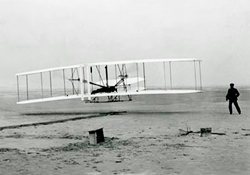 Orville and Wilbur Wright succeed with the first controlled flight in a heavier-than-air machine.
Orville and Wilbur Wright succeed with the first controlled flight in a heavier-than-air machine.
1903
 The concepts of PHENOTYPE, GENOTYPE, and SELECTION were introduced and clearly defined by Wilhelm Ludwig Johannsen.
The concepts of PHENOTYPE, GENOTYPE, and SELECTION were introduced and clearly defined by Wilhelm Ludwig Johannsen.
L. de Vesly describes first- to third-century remains at Gallo Roman temples and wells near Rouen, France. Finds there include a cache of Neolithic axes and fossil sea urchins — evidence of association of axes and urchins over thousands of years.
 Carl Neuberg first used the term BIOCHEMISTRY.
Carl Neuberg first used the term BIOCHEMISTRY.
The Russo-Japanese war begins with a surprise attack by the Imperial Japanese Navy against the Russian far East Fleet, while it was at anchor at Port Arthur.
1904
 Entomologist George Willis Kirkaldy publishes species descriptions of a series of insects whose names all end in "-chisme" (pronounced "kiss me"), such as Ohchisme, Dolichisme, Elachisme, Florichisme, Isachisme, Marichisme, Nanichisme, Peggichisme, and Polychisme. Kirkaldy's proposed names preface -chisme with the names of various women from alleged romantic conquests. In 1912 a letter to the International Entomological Congress from Lord Walsingham sought to make these names invalid on the basis of their being non-classical in their derivation. Kirkaldy himself had been a firm adherent to the principle of priority and was against any form of orthographic emendation to the spelling proposed by the original authors.
Entomologist George Willis Kirkaldy publishes species descriptions of a series of insects whose names all end in "-chisme" (pronounced "kiss me"), such as Ohchisme, Dolichisme, Elachisme, Florichisme, Isachisme, Marichisme, Nanichisme, Peggichisme, and Polychisme. Kirkaldy's proposed names preface -chisme with the names of various women from alleged romantic conquests. In 1912 a letter to the International Entomological Congress from Lord Walsingham sought to make these names invalid on the basis of their being non-classical in their derivation. Kirkaldy himself had been a firm adherent to the principle of priority and was against any form of orthographic emendation to the spelling proposed by the original authors.
 An obscure Swiss patent clerk, Albert Einstein, formulates the special theory of relativity and ushers in the atomic age.
An obscure Swiss patent clerk, Albert Einstein, formulates the special theory of relativity and ushers in the atomic age.
The National Forest Service is established in the United States by Gifford Pinchot.
1905
K. S. Merezhkovsky suggests that chloroplasts originated as a cyanobacterium swallowed by a protozoan, i.e., algal and plant cells result from two independent organisms that became symbionts. The idea will be largely forgotten until it is suggested again in the 1960s.
 Lucien Claude Cuénot performs crosses between mice carrying a gene that gives them yellow fur. Since they always produce yellow furred and agouti offspring in a 2:1 ratio, he concludes they are heterozygous. (In 1910, W. E. Castle and C. C. Little will show that yellow homozygotes die in utero. This dominant allele is thus the first gene shown to behave as a homozygous lethal.)
Lucien Claude Cuénot performs crosses between mice carrying a gene that gives them yellow fur. Since they always produce yellow furred and agouti offspring in a 2:1 ratio, he concludes they are heterozygous. (In 1910, W. E. Castle and C. C. Little will show that yellow homozygotes die in utero. This dominant allele is thus the first gene shown to behave as a homozygous lethal.)
 The Swimming Reindeer — the largest ivory carving from the late Ice Age yet found — is pieced together by Abbé Henri Breuil from two reindeer carved from mammoth ivory found decades earlier by Peccadeau de l'Isle.
The Swimming Reindeer — the largest ivory carving from the late Ice Age yet found — is pieced together by Abbé Henri Breuil from two reindeer carved from mammoth ivory found decades earlier by Peccadeau de l'Isle.
 An All-India Muslim League is founded by Sultan Mahommed Shah, Aga Khan III.
An All-India Muslim League is founded by Sultan Mahommed Shah, Aga Khan III.
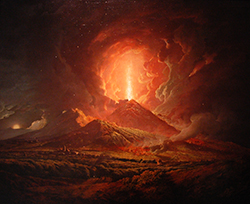 Mount Vesuvius erupts, devastating the town of Ottaiano, Italy
Mount Vesuvius erupts, devastating the town of Ottaiano, Italy
The Great San Francisco Earthquake kills seven hundred people and causes more than $400 million in property losses.
The world's largest battleship — the Satsuma — is launched in Japan.
1906

 William Bateson and Reginald Crundall Punnett report the discovery of two new genetic principles: LINKAGE and GENE INTERACTION.
William Bateson and Reginald Crundall Punnett report the discovery of two new genetic principles: LINKAGE and GENE INTERACTION.
In his presidential address to the Geological Society of America, Raphael Pumpelly claims that the end of the Pleistocene started the Neolithic Revolution.
 Alain Locke of Philadelphia, a Harvard graduate, becomes the first African-American Rhodes scholar to study at Oxford University in England.
Alain Locke of Philadelphia, a Harvard graduate, becomes the first African-American Rhodes scholar to study at Oxford University in England.
Robert Baden-Powell founds the Boy Scout movement, in Britain.
1907
Chemist Bertram Boltwood measures the ratio of isotopes of uranium and lead in a mineral from Connecticut. He concludes the mineral formed 410 million years ago. His estimate will later be changed to 265 million, but this experiment lays the groundwork for radiometric dating techniques.
P. Raymond describes a Neolithic deposit in Saône-et-Loire in France containing an axe with three fossil sea urchins.
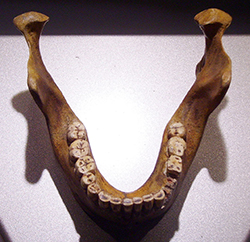 The Mauer jaw is discovered in Germany. On October 21, 1907, Daniel Hartmann, a worker at a sand mine in the Grafenrain open field system of the Mauer community unearthed a mandible at a depth of 24.63 m (80.81 ft), which he recognized as of human origin.[4] He was aware of the likelihood of finds, as for 20 years the Heidelberg scholar Otto Schoetensack had asked that the workers at the sand mine be encouraged to look out for fossils, after the well-preserved skull of a straight-tusked elephant had come to light there in 1887. Schoetensack had the workers taught the characteristics of human bones based on recent examples on his regular visits to the sand mine in search for "traces of mankind". The mandible will become the type specimen for Homo heidelbergensis (Archaic Homo sapiens, precursors to Neanderthals).
The Mauer jaw is discovered in Germany. On October 21, 1907, Daniel Hartmann, a worker at a sand mine in the Grafenrain open field system of the Mauer community unearthed a mandible at a depth of 24.63 m (80.81 ft), which he recognized as of human origin.[4] He was aware of the likelihood of finds, as for 20 years the Heidelberg scholar Otto Schoetensack had asked that the workers at the sand mine be encouraged to look out for fossils, after the well-preserved skull of a straight-tusked elephant had come to light there in 1887. Schoetensack had the workers taught the characteristics of human bones based on recent examples on his regular visits to the sand mine in search for "traces of mankind". The mandible will become the type specimen for Homo heidelbergensis (Archaic Homo sapiens, precursors to Neanderthals).
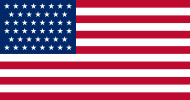 The US flag is modified to have forty-six stars, reflecting the addition of one new state: Oklahoma.
The US flag is modified to have forty-six stars, reflecting the addition of one new state: Oklahoma.
The Young Turk revolution restores the Constitution and parliamentary government in the Ottoman Empire.
1908
 Godfrey Harold Hardy, a Cambridge mathematician, writes a letter to the editor of Science, suggesting that Mendelian mechanisms acting alone have no effect on allele frequencies. The letter begins, I am reluctant to intrude in a discussion concerning matters of which I have no expert knowledge, and I should have expected the very simple point which I wish to make to have been familiar to biologists. However,... This short (less than one page) letter constitutes Hardy's entire lifetime contribution to the field of biology, yet still forms the mathematical basis for population genetics.
Godfrey Harold Hardy, a Cambridge mathematician, writes a letter to the editor of Science, suggesting that Mendelian mechanisms acting alone have no effect on allele frequencies. The letter begins, I am reluctant to intrude in a discussion concerning matters of which I have no expert knowledge, and I should have expected the very simple point which I wish to make to have been familiar to biologists. However,... This short (less than one page) letter constitutes Hardy's entire lifetime contribution to the field of biology, yet still forms the mathematical basis for population genetics.
Amadee and Jean Bouyssonie find a Neanderthal skeleton in a pit at La Chapelle-aux-Saints. The find spurs hypotheses of intentional Neanderthal burial of the dead, although some anthropologists will dispute this interpretation several decades later.
Charles and George Sternberg discover a dinosaur mummy, a duckbill dinosaur with skin, tendons and bits of flesh all fossilized.
The National Association for the Advancement of Colored People (NAACP) is formed on February 12 in New York City.
 William Howard Taft becomes twenty-seventh president of the United States.
William Howard Taft becomes twenty-seventh president of the United States.
Tel Aviv, the first Jewish town in modern Palestine, is founded.
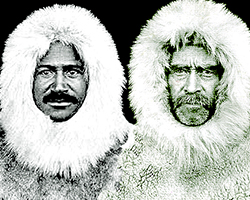 United States explorer Commander Robert E. Peary, accompanied by Matthew Henson, is the first person to reach North Pole.
United States explorer Commander Robert E. Peary, accompanied by Matthew Henson, is the first person to reach North Pole.
1909
 A. E. Garrod publishes Inborn Errors of Metabolism, the earliest discussion of the biochemical genetics of man (or any other species).
A. E. Garrod publishes Inborn Errors of Metabolism, the earliest discussion of the biochemical genetics of man (or any other species).
 George H. Shull advocates the use of self-fertilized lines in production of commercial seed corn. The hybrid corn program that resulted, created an abundance of foodstuffs worth billions of dollars.
George H. Shull advocates the use of self-fertilized lines in production of commercial seed corn. The hybrid corn program that resulted, created an abundance of foodstuffs worth billions of dollars.
H. Nilsson Ehle puts forward the multiple-factor hypothesis to explain the quantitative inheritance of seed-coat color in wheat.
 W. Johannsen's studies of the inheritance of seed size in self-fertilized lines of beans leads him to realize the necessity of distinguishing between the appearance of an organism and its genetic constitution. He invents the terms PHENOTYOPE and GENOTYPE to serve this purpose, and he also coins the word GENE.
W. Johannsen's studies of the inheritance of seed size in self-fertilized lines of beans leads him to realize the necessity of distinguishing between the appearance of an organism and its genetic constitution. He invents the terms PHENOTYOPE and GENOTYPE to serve this purpose, and he also coins the word GENE.
Abbé Breuil depicts a presumed Neanderthal burial at La Ferrassie.
Arthur Smith Woodward lectures the British Association for the Advancement of Science on "excess growth" and tooth loss in dinosaurs, citing these things as evidence of "racial senility" that doomed the dinosaurs to extinction.
Charles Doolittle Walcott starts digging fossils of soft-bodied animals in the Burgess Shale in the Canadian Rockies. He proceeds to publish several papers in which he describes these animals, which lived over 500 million years ago, as primitive ancestors of modern groups.
 On July 4, boxer Jack Johnson defeats Jim Jeffries in Reno, Nevada, to become the first African-American world heavyweight champion.
On July 4, boxer Jack Johnson defeats Jim Jeffries in Reno, Nevada, to become the first African-American world heavyweight champion.
1910
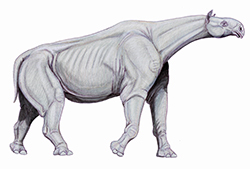 A few years after the find of some isolated teeth from the same species, British paleontologist Clive Forster Cooper finds better specimens of what will later be identified as Paraceratherium in an area that will later be part of Pakistan. A century later, Paraceratherium will still hold the title of the biggest land mammal yet discovered.
A few years after the find of some isolated teeth from the same species, British paleontologist Clive Forster Cooper finds better specimens of what will later be identified as Paraceratherium in an area that will later be part of Pakistan. A century later, Paraceratherium will still hold the title of the biggest land mammal yet discovered.
While digging the foundation for an imposing home, two laborers, Mercer and Crittenden, discover the remains of a cremation from the Iron Age, including a Neolithic axe and a fossil echinoid.
 A fire inside the Triangle Shirtwaist Company factory in New York City's garment district kills 146 workers, mostly immigrant Jewish and Italian women in their teens and early 20s. Most women could not escape the burning building because the doors to the stairwells and exits were locked to keep the workers from stealing linen from the factory. It is the deadliest workplace incident in the city's history until 9/11.
A fire inside the Triangle Shirtwaist Company factory in New York City's garment district kills 146 workers, mostly immigrant Jewish and Italian women in their teens and early 20s. Most women could not escape the burning building because the doors to the stairwells and exits were locked to keep the workers from stealing linen from the factory. It is the deadliest workplace incident in the city's history until 9/11.
Winston Churchill is appointed First Lord of the Admiralty.
1911
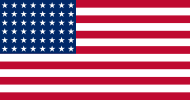 The US flag is modified to have forty-eight stars, reflecting the addition of two new states: Arizona and New Mexico.
The US flag is modified to have forty-eight stars, reflecting the addition of two new states: Arizona and New Mexico.
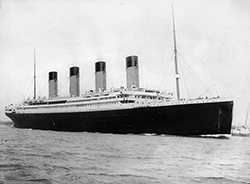 On April 10, the RMS Titanic — the largest, most advanced, and most luxurious passenger ship in the world — set off on her maiden voyage from Southampton, England to New York City. Four days later, this unsinkable marvel of modern engineering rammed an iceberg and sank in the North Atlantic, resulting in the deaths of 1,517 people.
On April 10, the RMS Titanic — the largest, most advanced, and most luxurious passenger ship in the world — set off on her maiden voyage from Southampton, England to New York City. Four days later, this unsinkable marvel of modern engineering rammed an iceberg and sank in the North Atlantic, resulting in the deaths of 1,517 people.

 The Republic of China is a nationally proclaimed with Sun Yat-sen as president. He appoints Chiang Kai-shek as his military advisor.
The Republic of China is a nationally proclaimed with Sun Yat-sen as president. He appoints Chiang Kai-shek as his military advisor.
1912
(no entry for this year)
 Woodrow Wilson becomes twenty-eighth president of the United States.
Woodrow Wilson becomes twenty-eighth president of the United States.
On April 11, President Woodrow Wilson initiates the racial segregation of workplaces, restaurants, and lunchrooms and all federal offices across the nation.
The federal income tax is introduced in the United States with the 16th amendment.
1913
 A. H. Sturtevant, an undergraduate working with Morgan at Columbia, provides the experimental basis for the linkage concept in Drosophila and produces the first GENETIC MAP.
A. H. Sturtevant, an undergraduate working with Morgan at Columbia, provides the experimental basis for the linkage concept in Drosophila and produces the first GENETIC MAP.
The Ottoman Empire entered World War I on the side of the Central Powers, fighting against the Allied Powers. The war proved costly for the empire, leading to economic hardship, military defeats, and ultimately, its dissolution.
World War I begins after Archduke Francis Ferdinand, heir to the Austrian throne, and his wife are assassinated in Sarajevo, Bosnia, on June 28 by a Serbian nationalist.
1914
Charles Doolittle Walcott identifies fossil bacteria in Cryptozoon-like structures (stromatolites).
Peyrony finds the remains of Neanderthal baby in southwestern France. Because no one knows the bones are Neanderthal, they are not examined closely and are later believed lost. They will be rediscovered and described nearly 90 years later.
(no entry for this year)
1915
 Calvin Bridges identifies strains of mutant fruit flies with extra pairs of wings. Decades later, these strains will help biologists understand Hox genes that control the head-to-toe anatomy of widely varying animals.
Calvin Bridges identifies strains of mutant fruit flies with extra pairs of wings. Decades later, these strains will help biologists understand Hox genes that control the head-to-toe anatomy of widely varying animals.
 Frederick Twort discovers a virus capable of infecting and destroying bacteria.
Frederick Twort discovers a virus capable of infecting and destroying bacteria.



 Thomas Hunt Morgan, Alfred Henry Sturtevant, Calvin Blackman Bridges, and Hermann Joseph Muller publish The Mechanism of Mendelian Heredity. This monograph provides the first systematic description of the actual mechanisms that control inheritance as evidenced in the Mendelian model. Here, for the first time, the gene is made real.
Thomas Hunt Morgan, Alfred Henry Sturtevant, Calvin Blackman Bridges, and Hermann Joseph Muller publish The Mechanism of Mendelian Heredity. This monograph provides the first systematic description of the actual mechanisms that control inheritance as evidenced in the Mendelian model. Here, for the first time, the gene is made real.

 The Sykes–Picot Agreement (a secret agreement between the governments of the UK and France defining their respective spheres of influence and control in the Middle East after the expected downfall of the Ottoman Empire during World War I) is drawn up and signed by Sir Mark Sykes and Fran ois Georges-Picot.
The Sykes–Picot Agreement (a secret agreement between the governments of the UK and France defining their respective spheres of influence and control in the Middle East after the expected downfall of the Ottoman Empire during World War I) is drawn up and signed by Sir Mark Sykes and Fran ois Georges-Picot.
1916
Two duckbill dinosaur fossils, with extremely rare skin impressions, sink to the bottom of the Atlantic when the ship carrying them to London — the SS Mount Temple — is stopped by the German military vessel, the SMS Möwe. The German ship takes the passengers prisoner and then sinks the Mount Temple.
 Lucy Diggs Slowe wins the championship in the first national tennis tournament sponsored by the American Tennis Association. With her victory she becomes the first African-American woman to win a major sports title.
Lucy Diggs Slowe wins the championship in the first national tennis tournament sponsored by the American Tennis Association. With her victory she becomes the first African-American woman to win a major sports title.
 The Balfour Declaration (dated 2 November 1917) — a formal statement of policy by the British government, written by Arthur Balfour, stating that "His Majesty's government view with favour the establishment in Palestine of a national home for the Jewish people, and will use their best endeavours to facilitate the achievement of this object" — is issued. The anniversary of the declaration, 2 November, is widely commemorated in Israel and among Jews in the Jewish diaspora as Balfour Day. This day is also observed as a day of mourning in Arab countries still today.
The Balfour Declaration (dated 2 November 1917) — a formal statement of policy by the British government, written by Arthur Balfour, stating that "His Majesty's government view with favour the establishment in Palestine of a national home for the Jewish people, and will use their best endeavours to facilitate the achievement of this object" — is issued. The anniversary of the declaration, 2 November, is widely commemorated in Israel and among Jews in the Jewish diaspora as Balfour Day. This day is also observed as a day of mourning in Arab countries still today.
The October Revolution occurs in Russia, followed by the Russian Civil War.
 The United States enters World War I; Gen. Pershing goes to Paris to lead American forces.
The United States enters World War I; Gen. Pershing goes to Paris to lead American forces.
1917
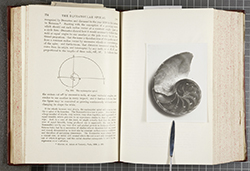 British polymath D'Arcy Wentworth Thompson publishes On Growth and Form arguing that the forms Darwinian natural selection can produce through evolution are constrained by physical and mathematical laws, and that organic structures often emulate inorganic natural structures. His analysis led the way for the scientific explanation of morphogenesis, the process by which patterns and body structures are formed in plants and animals. Thompson's description of the mathematical beauty of nature and the mathematical basis of the forms of animals stimulated thinkers as diverse as Julian Huxley, Conrad Hal Waddington, Alan Turing, Claude Lévi-Strauss, Eduardo Paolozzi, Le Corbusier, and Mies van der Rohe.
British polymath D'Arcy Wentworth Thompson publishes On Growth and Form arguing that the forms Darwinian natural selection can produce through evolution are constrained by physical and mathematical laws, and that organic structures often emulate inorganic natural structures. His analysis led the way for the scientific explanation of morphogenesis, the process by which patterns and body structures are formed in plants and animals. Thompson's description of the mathematical beauty of nature and the mathematical basis of the forms of animals stimulated thinkers as diverse as Julian Huxley, Conrad Hal Waddington, Alan Turing, Claude Lévi-Strauss, Eduardo Paolozzi, Le Corbusier, and Mies van der Rohe.
 C. B. Bridges discovers the first chromosome deficiency in Drosophila.
C. B. Bridges discovers the first chromosome deficiency in Drosophila.
 Felix Hubert D'Herelle, independently of Frederick Twort, discovers a virus capable of infecting and destroying bacteria, which he calls a BACTERIOPHAGE.
Felix Hubert D'Herelle, independently of Frederick Twort, discovers a virus capable of infecting and destroying bacteria, which he calls a BACTERIOPHAGE.
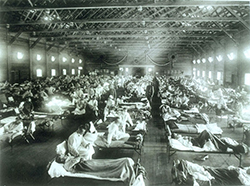 A worldwide influenza epidemic strikes. By 1920, 50 to 100 millions are dead, including Mark Sykes, the author of the British half of the Sykes-Picot Treaty.
A worldwide influenza epidemic strikes. By 1920, 50 to 100 millions are dead, including Mark Sykes, the author of the British half of the Sykes-Picot Treaty.
1918
(no entry for this year)
By the beginning of 1919, the Ku Klux Klan (revived in 1915 at Stone Mountain, Georgia) operates in 27 states. Eighty-three African Americans are lynched during the year, among them a number of returning soldiers still in uniform.
1919
 C. B. Bridges discovers chromosomal duplications in Drosophila.
C. B. Bridges discovers chromosomal duplications in Drosophila.
 T. H. Morgan calls attention to the equality in Drosophila melanogaster between the number of linkage groups and the haploid number of chromosomes.
T. H. Morgan calls attention to the equality in Drosophila melanogaster between the number of linkage groups and the haploid number of chromosomes.
Swedish geologist Johann Andersson discovers a major "dragon bone works" in northern China. Otto Zdansky also examines the works several years later, discovering that the fossils are referred to as dragons even though the workers recognize them as more pedestrian species such as horses and deer.
Women gain the right to vote in the United States.
The Russian Civil War ends in victory for the Bolsheviks.
1920
(no entry for this year)
1921
Fossil mammal expert William Diller Matthew suggests dinosaurs were driven extinct by mountain building, continental uplift and replacement by mammals.
Miners at Broken Hill in the British colony of Northern Rhodesia, Africa, find leg bones and a skull that will later be classified as Homo heidelbergensis.
 The Dyer Anti-Lynching Bill (first introduced by St. Louis congressman Leonidas Dyer in 1918), making lynching a federal offense, passes the US House of Representatives but fails in the US Senate.
The Dyer Anti-Lynching Bill (first introduced by St. Louis congressman Leonidas Dyer in 1918), making lynching a federal offense, passes the US House of Representatives but fails in the US Senate.
The Ottoman Empire officially ended with the signing of the Treaty of Lausanne, which recognized the sovereignty of the Republic of Turkey. Mustafa Kemal Ataturk, the founder of the Turkish Republic, implemented sweeping reforms to modernize the country and break with the Ottoman past.
1922
Lillian V. Morgan discovers attached-X chromosomes in Drosophila.
The American Museum of Natural History begins a series of excavations in central Mongolia, led by Roy Chapman Andrews. Hoping to find fossil human remains, Chapman's team instead finds dinosaurs.
Harding dies in office.
 Calvin Coolidge becomes thirtieth president of the United States.
Calvin Coolidge becomes thirtieth president of the United States.
Adolf Hitler's attempted coup d'état (the Beer Hall Putsch) in Munich fails. Hitler is imprisoned for eight months
1923
A. E. Boycott and C. Diver describe "delayed" Mendelian inheritance controlling the direction of the coiling of the shell in the snail Limnea peregra. A. H. Sturtevant suggests that the direction of coiling of the Limnea shell is determined by the character of the ooplasm, which is in turn controlled by the mother's genotype.
 C. B. Bridges discovers chromosomal translocations in Drosophila.
C. B. Bridges discovers chromosomal translocations in Drosophila.
Jesuit priests Émile Lincent and Pierre Teilhard de Chardin discover ancient stone tools at Shuidonggou, China. Their discoveries resemble those of the Middle Paleolithic industry in Europe.
 Gandhi undertakes his 21-day fast to protest feuds between Hindus and Muslims in India.
Gandhi undertakes his 21-day fast to protest feuds between Hindus and Muslims in India.
1924
Winifred Goldring publishes a description of a fossil forest discovered during excavations for the Gilboa Dam. Dating from the Devonian Period, the site will become known as the world's oldest fossil forest.
 On September 9, Ossian Sweet, a Detroit physician, is arrested for murder after he and his family kill a member of a white mob while defending their home. The Sweet family is represented by Clarence Darrow and they are acquitted of the charge.
On September 9, Ossian Sweet, a Detroit physician, is arrested for murder after he and his family kill a member of a white mob while defending their home. The Sweet family is represented by Clarence Darrow and they are acquitted of the charge.
Hitler reorganizes the Nazi party and publishes volume one of Mein Kampf.
Ibn Saud of Najd conquers Hijaz and forms Saudi Arabia.
1925
Tennessee schoolteacher John Thomas Scopes is tried for teaching evolution in the famous "Scopes Monkey Trial." Two-time presidential candidate William Jennings Bryan leads the prosecution. Labor lawyer Clarence Darrow leads the defense and goads Bryan into declaring that humans are not mammals. The conviction will be overturned on a technicality, and the anti- evolution law will remain on the books for decades.
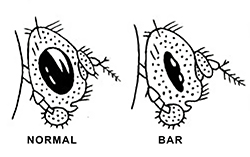 A. H. Sturtevant analyzes the Bar-eye phenomenon in Drosophila and discovers position effect.
A. H. Sturtevant analyzes the Bar-eye phenomenon in Drosophila and discovers position effect.
Francis Turville-Petre finds Galilee Man, the first fossil hominid discovered in Western Asia. The fossil will later be dated to more than 250,000 years old, and classified as neither modern Homo sapiens nor Neanderthal.
Raymond Dart publishes a description of the "Taung Child," a hominid child's skull from Africa. He classifies it as Australopithecus africanus and concludes that it's the missing link between humans and apes.
Hirohito takes over the Japanese throne upon the death of his father, Yoshihito.
 Mussolini takes total control in Italy, banning all opposition.
Mussolini takes total control in Italy, banning all opposition.
1926
A. H. Sturtevant finds the first inversion in Drosophila.
(no entry for this year)
1927
 Bernard O. Dodge initiates genetic studies on Neurospora.
Bernard O. Dodge initiates genetic studies on Neurospora.
 H. J. Muller reports the artificial induction of mutations in Drosophila by x-rays.
H. J. Muller reports the artificial induction of mutations in Drosophila by x-rays.
 J. B. S. Haldane suggests that the genes known to control certain coat colors in various rodents and carnivores may be evolutionarily homologous.
J. B. S. Haldane suggests that the genes known to control certain coat colors in various rodents and carnivores may be evolutionarily homologous.
Excavations in Kent's Cavern in southern England turn up a fragment of a human upper jaw, roughly 43,000 years old. Arthur Keith will provisionally identify it as anatomically modern human, and this finding will be confirmed in a 2011 study.
Johns Hopkins University biologist Raymond Pearl publishes an article entitled "Why Lazy People Live the Longest." He will expand on this rate- of-living hypothesis in a book the next year, arguing that a faster rate of biochemical reactions leads to a shorter lifespan. This hypothesis is quickly dismissed and generally considered buncombe. Later, however, Donald Trump, the 45th president of the United States will be discovered to hold similar views.
(no entry for this year)
1928
 Frederick Griffith discovers type-transformation of pneumococci. This lays the foundation for the work of Avery, MacLeod, and McCarthy (1944).
Frederick Griffith discovers type-transformation of pneumococci. This lays the foundation for the work of Avery, MacLeod, and McCarthy (1944).
 L. J. Stadler reports the artificial induction of mutations in maize, and demonstrates that the dose-frequency curve is linear.
L. J. Stadler reports the artificial induction of mutations in maize, and demonstrates that the dose-frequency curve is linear.
In a letter to Science, Louise Sudbury states that fossil plants, Cycadeoidea Etrusca, were collected by Etruscans over 4,000 years ago.
In trying to piece together a Burgess Shale organism over 500 million years old, Danish zoologist K. L. Henriksen glues an Anomalocaris appendage to a Tuzoia carapace to make what he thinks is a reasonable looking shrimp-like animal. This mistaken interpretation will persist for years.
John Henry Pull, a postman and amateur archaeologist, finds fossil urchins in two separate Neolithic burial sites. His efforts to publish on his findings, however, will be thwarted due to his pedestrian background.
 Herbert Hoover becomes thirty-first president of the United States.
Herbert Hoover becomes thirty-first president of the United States.
Black Tuesday in New York signals the beginning of a worldwide economic crisis and the beginning of the Great Depression, when the US stock exchange collapses, losing $26 billion in value.
1929
Davidson Black announces the find of Sinanthropus pekinensis, or Peking Man, discovered at Zhoukoudian, China. Over the next several years, five nearly-complete skulls will be recovered from the same site. Peking Man will be lost, however, during World War II.
Estonian paleobiologist Alexander Audova publishes a paper rejecting racial senility as the cause of dinosaur extinction and instead pointing to environmental change.
(no entry for this year)
1930
 R. A. Fisher publishes Genetical Theory of Natural Selection, a formal analysis of the mathematics of selection.
R. A. Fisher publishes Genetical Theory of Natural Selection, a formal analysis of the mathematics of selection.
Themistocles Zammit publishes Prehistoric Malta: The Tarxien Temples about excavations showing fossil sea urchins in Bronze Age temples.
(no entry for this year)
1931
C. Stern, and independently H. B. Creighton and B. McClintock, provide the cytological proof of crossing over.
The highly influential paleobotanist Sir Albert Charles Seward rejects the biologic interpretation of Cryptozoon fossils (stromatolites). This rejection will become known among paleontologists as "Seward's folly."
(no entry for this year)
1932
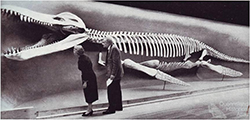 A Harvard expedition to Australia collects Kronosaurus queenslandicus, a 135-million-year-old marine reptile fossil with a 9- foot skull and banana-sized teeth. Researchers excavate the fossil from a limestone quarry with the aid of explosives.
A Harvard expedition to Australia collects Kronosaurus queenslandicus, a 135-million-year-old marine reptile fossil with a 9- foot skull and banana-sized teeth. Researchers excavate the fossil from a limestone quarry with the aid of explosives.
Fossil diggers discover a 25-million-year-old toothed, dwarf whale in Australia. Seven years later it will be named Mammalodon. More than 70 years later, it will be described as a "bottom-feeding mud-sucker."
 Franklin D. Roosevelt becomes thirty-second president of the United States.
Franklin D. Roosevelt becomes thirty-second president of the United States.
Adolf Hitler is appointed German Chancellor; later the same year he is granted dictatorial powers. Events are in motion that will lead to World War II — the greatest military struggle of all time.
1933
Robert Broom publishes The Coming of Man: Was it Accident or Design? arguing that evolution is really driven by spiritual agencies, some with conflicting priorities, and that mankind is the ultimate aim of all evolution.
 Barbara McClintock demonstrates in maize that a single exchange within the inversion loop of a paracentric inversion heterozygote generates an acentric and a dicentric chromatid.
Barbara McClintock demonstrates in maize that a single exchange within the inversion loop of a paracentric inversion heterozygote generates an acentric and a dicentric chromatid.
T. S. Painter initiates cytogenetic studies on the salivary gland chromosomes of Drosophila.
 In Herndon vs Georgia, the United States Supreme Court sets aside the death sentence of black communist Angelo Herndon, who was convicted under a pre-Civil War slave insurrection statute for passing out leaflets in Atlanta.
In Herndon vs Georgia, the United States Supreme Court sets aside the death sentence of black communist Angelo Herndon, who was convicted under a pre-Civil War slave insurrection statute for passing out leaflets in Atlanta.
1934
With funding from Sinclair Oil, Barnum Brown begins excavating in Wyoming's Howe Quarry. His finds will lead to the green dinosaur logo for Sinclair's gas stations. Many of them will simply be named "Dino."
(no entry for this year)
1935
 C. B. Bridges publishes the salivary gland chromosome maps for Drosophila melanogaster.
C. B. Bridges publishes the salivary gland chromosome maps for Drosophila melanogaster.
G. W. Beadle and B. Ephrussi and A. Kuhn and A. Butenandt work out the biochemical genetics of eye-pigment synthesis in Drosophila and Ephestia, respectively.
 J. B. S. Haldane is the first to calculate the spontaneous mutation frequency of a human gene.
J. B. S. Haldane is the first to calculate the spontaneous mutation frequency of a human gene.
M. Baudouin describes more than 80 fossil sea urchins drilled for use as jewelry, some worked as long as 35,000 years ago.
 Track star Jesse Owens wins four gold medals at the Berlin Olympics between August 3 and August 9.
Track star Jesse Owens wins four gold medals at the Berlin Olympics between August 3 and August 9.
German troops occupy the Rhineland in defiance of the treaties of Locarno and Versailles.
1936
A. H. Sturtevant and T. Dobzhansky publish the first account of the use of inversions in constructing a chromosomal phylogenetic tree.
Robert Broom finds the first skull of an adult australopithecine near Johannesburg.
(no entry for this year)
1937
T. Dobzhansky publishes Genetics and the Origin of Species — a milestone in evolutionary genetics.
(no entry for this year)
1938
 Fishermen find a coelacanth, a fish long believed to be extinct, off the coast of South Africa. Margaret Courtney-Latimer, a curator at the East London Museum in South Africa, keeps the fish preserved long enough for its identity to be confirmed by ichthyologist J.L.B. Smith.
Fishermen find a coelacanth, a fish long believed to be extinct, off the coast of South Africa. Margaret Courtney-Latimer, a curator at the East London Museum in South Africa, keeps the fish preserved long enough for its identity to be confirmed by ichthyologist J.L.B. Smith.
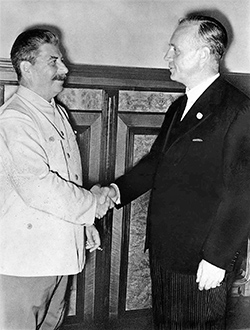 August 23, the Molotov–Ribbentrop Pact, officially the Treaty of Non-Aggression between Germany and the Union of Soviet Socialist Republics, and also known as the Hitler–Stalin Pact and the Nazi–Soviet Pact, was a non-aggression pact between Nazi Germany and the Soviet Union, with a secret protocol establishing Soviet and German spheres of influence across Northern Europe. The pact was signed in Moscow by Soviet Foreign Minister Vyacheslav Molotov and German Foreign Minister Joachim von Ribbentrop. One week after signing the pact, on 1 September 1939, Germany invaded Poland.
August 23, the Molotov–Ribbentrop Pact, officially the Treaty of Non-Aggression between Germany and the Union of Soviet Socialist Republics, and also known as the Hitler–Stalin Pact and the Nazi–Soviet Pact, was a non-aggression pact between Nazi Germany and the Soviet Union, with a secret protocol establishing Soviet and German spheres of influence across Northern Europe. The pact was signed in Moscow by Soviet Foreign Minister Vyacheslav Molotov and German Foreign Minister Joachim von Ribbentrop. One week after signing the pact, on 1 September 1939, Germany invaded Poland.
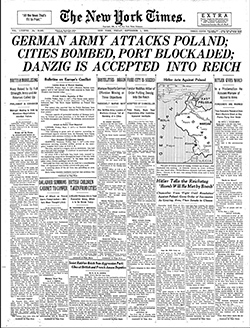 September 1, Germany invades Poland; Britain and France declare war on Germany on September 3. Soviet troops invade Poland. World War II begins.
September 1, Germany invades Poland; Britain and France declare war on Germany on September 3. Soviet troops invade Poland. World War II begins.
 September 1, George C. Marshall is sworn in as Chief of Staff of the US Army. After the war, Churchill refers to Marshall (the only military leader to serve through the entirety of WW II) as the Architect of Victory for his crucial role in ensuring the defeat of the Axis Powers. The very day that Hitler launches all-out war in Europe, the man who will oversee his defeat takes command of the US Military — a military that, at the time, contained only 334,000 total personnel.
September 1, George C. Marshall is sworn in as Chief of Staff of the US Army. After the war, Churchill refers to Marshall (the only military leader to serve through the entirety of WW II) as the Architect of Victory for his crucial role in ensuring the defeat of the Axis Powers. The very day that Hitler launches all-out war in Europe, the man who will oversee his defeat takes command of the US Military — a military that, at the time, contained only 334,000 total personnel.
1939
E. L. Ellis and M. Delbrück perform studies on coliphage growth that mark the beginning of modem phage work. They devise the "one-step growth" experiment, which demonstrates that after the phage adsorbs onto the bacterium, it replicates within the bacterium during the "latent period," and finally the progeny are released in a "burst."
About 200 worked ivory fragments, roughly 32,000 years old, are found in the Hohlenstein-Stadel Cave in Germany. Three decades later, the pieces will be reassembled as statue of a lion-headed man.
(no entry for this year)
1940
Frank Morton Carpenter collects a 2.5-foot wing from a dragonfly-like giant insect that lived in Oklahoma during the Permian Period.
Between 1941 and 1945, the desperate need for labor in US defense plants and shipyards leads to the migration of 1.2 million African-Americans from the South to the North and West. This migration transforms American politics as blacks increasingly vote in their new homes and put pressure on Congress to protect civil rights throughout the nation. Their activism lays much of the foundation for the national civil rights movement a decade later.
On June 25, Pres. Franklin Roosevelt issues Executive Order 8802, which desegregates US defense plants and shipyards and creates the Fair Employment Practices Committee.
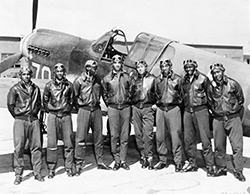 The US Army creates the Tuskegee Air Squadron (the 99th Pursuit Squadron) — an all African-American flying unit.
The US Army creates the Tuskegee Air Squadron (the 99th Pursuit Squadron) — an all African-American flying unit.
 07 DEC 1941: Pearl Harbor bombed by Japanese The US immediately declares war on Japan. Germany quickly declares war on the United States. The US is now a full participant in World War II.
07 DEC 1941: Pearl Harbor bombed by Japanese The US immediately declares war on Japan. Germany quickly declares war on the United States. The US is now a full participant in World War II.
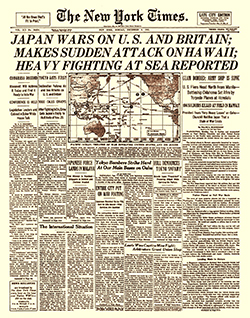 08 DEC 1941: The US responds to Pearl Harbor. President to address joint session of Congress. Declaration of War expected.
08 DEC 1941: The US responds to Pearl Harbor. President to address joint session of Congress. Declaration of War expected.
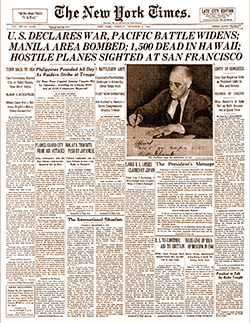 09 DEC 1941: The United States formally declares War on Japan.
09 DEC 1941: The United States formally declares War on Japan.
1941
G. W. Beadle and E. L. Tatum publish their classic study on the biochemical genetics of Neurospora and promulgate the ONE-GENE, ONE-ENZYME theory.
K. Mather coins the term polygenes and describes polygenic traits in various organisms.
Anthropologist E. T. Hall excavates the ruins of a dwelling in New Mexico occupied between 700 and 900 AD. He finds two fossil jawbones of Eocene mammals that were deliberately carried to the dwelling by Paleo- Indians.
German paleontologist H. Kirchner suggests that dinosaur tracks in the Rhine Valley might have inspired the legend of Siegfried slaying the dragon Fafnir.
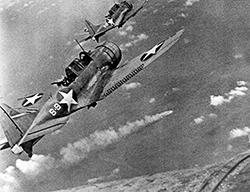 4-7 JUN 1942: The Battle of Midway occurs. Less than six months after Pearl Harbor the Japanese navy attempts to lure the remnants of the US Navy into a decisive battle at Midway Island. The Japanese plan backfires, as the battle proves to be a huge victory for US forces and the turning point in the war in the Pacific.
4-7 JUN 1942: The Battle of Midway occurs. Less than six months after Pearl Harbor the Japanese navy attempts to lure the remnants of the US Navy into a decisive battle at Midway Island. The Japanese plan backfires, as the battle proves to be a huge victory for US forces and the turning point in the war in the Pacific.
1942
Ernst Mayr publishes Systematics and the Origin of Species, and Julian Huxley publishes Evolution: The Modern Synthesis. Both books are significant contributions to the neo darwinian synthesis combining elements of natural selection, genetics, mutation, population biology and paleontology.
S. E. Luria and T. F. Anderson publish the first electron micrographs of bacterial viruses. T2 has a polyhedral body and a tail.
(no entry for this year)
1943
On April 3, the United States Supreme Court in Smith vs. Allright declares white-only political primaries unconstitutional.
 D-Day landing On June 6th, the largest amphibious force ever assembled, led by General Dwight D. Eisenhower, successfully attacks and establishes a landing on the coast of France at Normandy.
D-Day landing On June 6th, the largest amphibious force ever assembled, led by General Dwight D. Eisenhower, successfully attacks and establishes a landing on the coast of France at Normandy.
1944
Theoretical physicist Erwin Schrödinger publishes What is Life? arguing that living organisms store and pass along information, perhaps using something like Morse code. This book will inspire James Watson, Francis Crick and Maurice Wilkins, who will share the Nobel prize for discovering the structure of DNA.
O. T. Avery, C. M. MacLeod, and M. McCarty describe the pneumococcus transforming principle. The fact that it is rich in DNA suggests that DNA and not protein is the hereditary chemical.
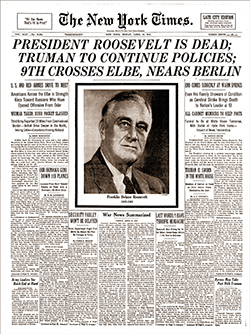 13 APR 1945: President Roosevelt dies in office.
13 APR 1945: President Roosevelt dies in office.
 Harry S. Truman becomes thirty-third president of the United States.
Harry S. Truman becomes thirty-third president of the United States.
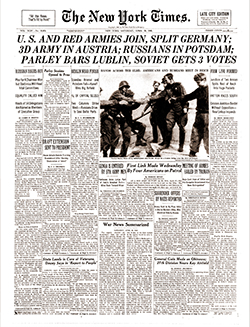 28 APR 1945: US and Russian troops meet. Germany split in two.
28 APR 1945: US and Russian troops meet. Germany split in two.
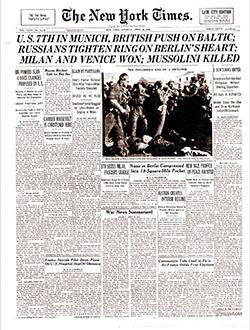 30 APR 1945: Press reports Mussolini killed by Italian partisans, his body abused. Hitler commits suicide by gunshot while hiding in his Führerbunker, but news of his death will not surface for a few days.
30 APR 1945: Press reports Mussolini killed by Italian partisans, his body abused. Hitler commits suicide by gunshot while hiding in his Führerbunker, but news of his death will not surface for a few days.
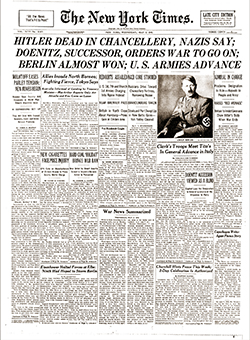 02 MAY 1945: Hitler reported dead..
02 MAY 1945: Hitler reported dead..
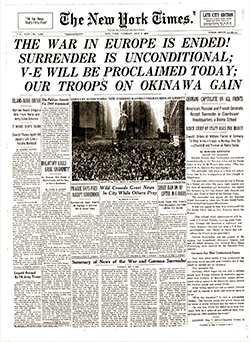 08 MAY 1945: Germany surrenders unconditionally. The war in Europe is over.
08 MAY 1945: Germany surrenders unconditionally. The war in Europe is over.
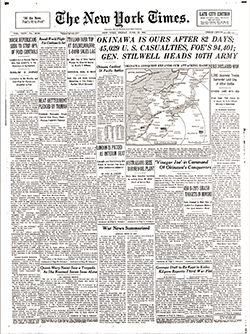 22 JUN 1945: Okinawa falls after 82 days of fierce fighting.
22 JUN 1945: Okinawa falls after 82 days of fierce fighting.
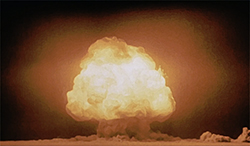 16 JUL 1945: The Manhattan Project yields results — the world's first atomic bomb is secretly tested in New Mexico.
16 JUL 1945: The Manhattan Project yields results — the world's first atomic bomb is secretly tested in New Mexico.
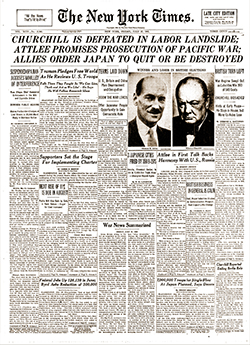 27 JUL 1945: Churchill is defeated in British elections. Potsdam Declaration is reported, calling for Japan to surrender unconditionally or face "prompt and utter destruction."
27 JUL 1945: Churchill is defeated in British elections. Potsdam Declaration is reported, calling for Japan to surrender unconditionally or face "prompt and utter destruction."
 06 AUG 1945: the first atomic bomb used in combat is dropped on Hiroshima, Japan.
06 AUG 1945: the first atomic bomb used in combat is dropped on Hiroshima, Japan.
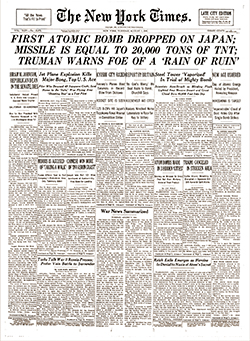 07 AUG 1945: The world learns about the atomic bomb. President Truman announces "The force from which the sun draws its power has been loosed against those who brought war to the Far East" and he calls upon Japan to immediately accept the terms of the Potsdam Declaration or expect a rain of ruin from the air, the like of which has never been seen on this earth."
07 AUG 1945: The world learns about the atomic bomb. President Truman announces "The force from which the sun draws its power has been loosed against those who brought war to the Far East" and he calls upon Japan to immediately accept the terms of the Potsdam Declaration or expect a rain of ruin from the air, the like of which has never been seen on this earth."
 09 AUG 1945: The second atomic bomb used in combat is dropped on Nagasaki, Japan. The primary target for this mission was actually the city of Kokura, but the bomber crew moved on to the secondary target of Nagasaki when Kokura proved to be too obscured by smoke to get a clear view for the bombsight. Russia declares war on japan.
09 AUG 1945: The second atomic bomb used in combat is dropped on Nagasaki, Japan. The primary target for this mission was actually the city of Kokura, but the bomber crew moved on to the secondary target of Nagasaki when Kokura proved to be too obscured by smoke to get a clear view for the bombsight. Russia declares war on japan.
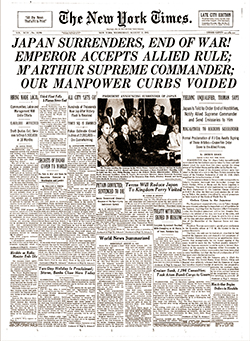 15 AUG 1945: In the afternoon of August 15th (Japanese time), Japan announces its unconditional surrender. World War II is finally over. More than 60 million people have died as a result of the conflict.
15 AUG 1945: In the afternoon of August 15th (Japanese time), Japan announces its unconditional surrender. World War II is finally over. More than 60 million people have died as a result of the conflict.
 Col. Benjamin O. Davis, Jr, is named commander of Godman Field, Kentucky. He is the first African-American to command a United States military base.
Col. Benjamin O. Davis, Jr, is named commander of Godman Field, Kentucky. He is the first African-American to command a United States military base.
1945
 S. E. Luria demonstrates that mutations occur in bacterial viruses.
S. E. Luria demonstrates that mutations occur in bacterial viruses.
The United States Supreme Court, in Morgan vs Virginia, rules that segregation in interstate bus travel is unconstitutional.
1946
 Nobel Prize in Medicine awarded to H. J. Muller for his contributions to radiation genetics
Nobel Prize in Medicine awarded to H. J. Muller for his contributions to radiation genetics
Genetic recombination in bacteriophage is demonstrated by M. Delbrück and W. T. Bailey and by A. D. Hershey.
J. Lederberg and E. L. Tatum demonstrate genetic recombination in bacteria.
Along the Kolyma River in northeastern Siberia, Gulag prisoners discover a nest with three frozen, mummified ground squirrel carcasses. They turn the carcasses over to the Gulag camp geologist, Yuriy Popov, who relays them to other Soviet scientists. Seventy years later, radiocarbon dating and DNA analysis of the ground squirrel mummies will identify their age at over 30,000 years old, and indicate that they are not direct ancestors of modern ground squirrels in the region.
Geologist Reg Sprigg discovers fossils near the Ediacara Hills in Australia. The fossils are of multicellular organisms that predated the Cambrian Period, making them the oldest complex fossils yet discovered. At least some of the fossils are generally assumed to be related to modern cnidarians like jellyfish and corals.
 On April 10, Jackie Robinson of the Brooklyn Dodgers becomes the first African-American to play major league baseball in the 20th century.
On April 10, Jackie Robinson of the Brooklyn Dodgers becomes the first African-American to play major league baseball in the 20th century.
1947
American Museum of Natural History curator Edwin Colbert finds a massive quarry of Coelophysis dinosaurs in New Mexico and concludes from their skeletons that these Triassic dinosaurs were swift runners with a bird- like posture. Later examination of two fossils will lead Colbert to conclude they were also cannibals, but the "last meals of juvenile coelophyses" will eventually prove to be crocodilian.
Rudolph Zallinger completes The Age of Reptiles mural in the Yale Peabody Museum. His image of slow-moving dinosaurs will prevail until the 1960s.
On July 26, Pres. Harry Truman issues Executive Order 9981, directing the desegregation of the armed forces.
The United States Supreme Court, in Shelley vs Kraemer, rules that racially restrictive covenants are legally unenforceable.
1948
 H. J. Muller coins the term dosage compensation.
H. J. Muller coins the term dosage compensation.
J. Lederberg and N. Zinder, and, independently, B. D. Davis develop the penicillin selection technique for isolating biochemically deficient bacterial mutants.
Mary Leakey finds the skull of the ape Proconsul, about 16 million years old. Although a very significant find, it does little to bolster Louis and Mary Leakey's meager research funding.
(no entry for this year)
1949
A. D. Hershey and R. Rotman demonstrate that genetic recombination occurs in bacteriophage.
J. V. Neel provides genetic evidence that the sickle-cell disease is inherited as a simple Mendelian autosomal recessive.
French prehistorian André Leroi-Gourhan discovers the Cave of the Reindeer near the village of Arcy-sur-Cure where he will conduct a 15-year excavation. Discoveries at Arcy will suggest to some researchers an artistic sense among Neanderthals, including the collection of fossil mollusk shells and fossil coral. Doubts about ages of objects, however, will leave the subject open to debate.
(no entry for this year)
1950
At a Cold Spring Harbor Symposium, Ernst Mayr argues that all hominid specimens so far found should be categorized in the genus Homo: H. transvaalensis, H. erectus, and H. sapiens.
E. Chargaff lays the foundations for nucleic acid structural studies by his analytical work. He demonstrates for DNA that the numbers of adenine and thymine groups are always equal and so are the numbers of guanine and cytosine groups. These findings later suggest to Watson and Crick that DNA consists of two polynucleotide strands joined by hydrogen bonding between A and T and between G and C.
E. M. Lederberg discovers lambda, the first viral episome of E. coli.
 On May 24, a mob of 3500 whites attempt to prevent a black family from moving into an apartment in Cicero, Illinois. Illinois Gov. Adlai Stevenson calls out the Illinois National Guard to protect the family and restore order.
On May 24, a mob of 3500 whites attempt to prevent a black family from moving into an apartment in Cicero, Illinois. Illinois Gov. Adlai Stevenson calls out the Illinois National Guard to protect the family and restore order.
On May 24, the United States Supreme Court rules that racial segregation in District of Columbia restaurants is unconstitutional.
1951
Barbara McClintock publishes a paper describing "jumping" genes that can move around within an organism's genome.
(no entry for this year)
1952
A. D. Hershey and M. Chase demonstrate that the DNA of phage enters the host, whereas most of the protein remains behind.
F. Sanger and his colleagues work out the complete amino acid sequence for the protein hormone insulin, and show that it contains two polypeptide chains held together by disulfide bridges.
J. Lederberg and E. M. Lederberg invent the replica plating technique.
N. D. Zinder and J. Lederberg describe transduction in Salmonella.
1953

 J. D. Watson and F. H. C. Crick propose a model for DNA comprised of two helically intertwined chains tied together by hydrogen bonds between the purines and pyrimidines.
J. D. Watson and F. H. C. Crick propose a model for DNA comprised of two helically intertwined chains tied together by hydrogen bonds between the purines and pyrimidines.
W. Hayes discovers polarized behavior in bacterial recombinations. He isolates the Hfr H strain of E. coli and shows that certain genes are readily transferred from Hfr to F- bacteria, whereas others are not.
Piltdown Man is determined to be a hoax: the jaw of an ape and a human skull.
On May 17, the United States Supreme Court, in Brown vs the Board of Education, declares segregation in all public schools in the United States unconstitutional, nullifying the earlier judicial doctrine of "separate but equal."
1954
Elso Barghoorn and Stanley Tyler report the discovery of bacterial cells in Canadian rock formations that are nearly 2 billion years old.
Philip Abelson and his team detect amino acids in fish that are over 300 million years old.
 Rosa Parks refuses to relinquish her bus seat to a white man on December 1, initiating the Montgomery bus boycott. Soon afterward, Martin Luther King, Jr., becomes the leader of the boycott.
Rosa Parks refuses to relinquish her bus seat to a white man on December 1, initiating the Montgomery bus boycott. Soon afterward, Martin Luther King, Jr., becomes the leader of the boycott.
 Fourteen-year-old Chicago resident Emmett Till is lynched in Money, Mississippi, on August 28.
Fourteen-year-old Chicago resident Emmett Till is lynched in Money, Mississippi, on August 28.
1955
 S. Benzer works out the fine structure of the rII region of phage T4 of E. coli, and coins the terms CISTRON,RECON, and MUTON.
S. Benzer works out the fine structure of the rII region of phage T4 of E. coli, and coins the terms CISTRON,RECON, and MUTON.
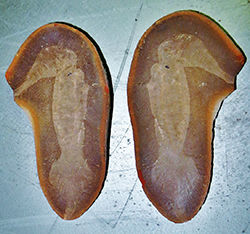 Professional pipefitter and amateur paleontologist Francis Tully finds an enigmatic fossil near Morris, Illinois. Dating from about 300 million years ago, the fossil will be formally named Tullimonstrum gregarium and nicknamed the Tully monster. Although it will defy classification for decades, it will nevertheless be named the state fossil of Illinois.
Professional pipefitter and amateur paleontologist Francis Tully finds an enigmatic fossil near Morris, Illinois. Dating from about 300 million years ago, the fossil will be formally named Tullimonstrum gregarium and nicknamed the Tully monster. Although it will defy classification for decades, it will nevertheless be named the state fossil of Illinois.
(no entry for this year)
1956
F. Jacob and E. L. Wollman are able experimentally to interrupt the mating process in E. coli and show that a piece of DNA is inserted from the donor bacterium into the recipient.
Fifteen-year-old English schoolgirl Tina Negus finds a specimen of the fossil species that will later be named Charnia masoni, from the geologic period that will later be named the Ediacaran. Unfortunately, Negus can't convince her geography teacher that the fossil she has found is Precambrian and gives up, leaving the fossil to be extracted by local schoolboy Roger Mason the next year.
Keith Runcorn publishes a paper describing polar wandering based on paleomagnetic studies of Europe and North America. He suggests continental drift, but his paper attracts little attention.
Paleontologist M. W. de Laubenfels publishes a paper suggesting that the dinosaurs were driven to extinction by a meteorite impact. His paper will not be taken seriously, but this hypothesis will be presented again in 1980 with more compelling evidence.
Brian Logan and fellow geologists find living stromatolites in Shark Bay, Australia. The find is somewhat surprising as stromatolites have no defenses against mouth-bearing organisms and have probably been relatively rare since the Cambrian Period.
Congress passes the Civil Rights Act of 1957, the first legislation protecting black rights since Reconstruction.
In September, Pres. Dwight D. Eisenhower sends federal troops to Little Rock, Arkansas, to ensure the enforcement of a federal court order to desegregate Central High School and to protect nine African-American students enrolled as part of the order.
1957
Francis Crick proposes the "central dogma" of genetic information transfer: DNA specifies RNA and RNA specifies cell proteins.
V. M. Ingram reports that normal and sickle-cell hemoglobin differ by a single amino acid substitution.
(no entry for this year)
1958
 F. H. C. Crick suggests that during protein formation the amino acid is carried to the template by an adaptor molecule containing nucleotides and that the adaptor is the part that actually fits on the RNA template. Crick thus predicts the discovery of transfer RNA.
F. H. C. Crick suggests that during protein formation the amino acid is carried to the template by an adaptor molecule containing nucleotides and that the adaptor is the part that actually fits on the RNA template. Crick thus predicts the discovery of transfer RNA.
F. Jacob and E. L. Wollman demonstrate that the single linkage group of E. coli is circular and suggest that the different linkage groups found in different Hfr strains result from the insertion at different points of a factor in the circular linkage group that determines the rupture of the circle.
M. Meselson and F. W. Stahl use the density gradient equilibrium centrifugation technique to demonstrate the semiconservative distribution of density label during DNA replication in E. coli.
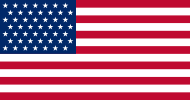 The US flag is modified to have forty-nine stars, reflecting the addition of one new state: Alaska.
The US flag is modified to have forty-nine stars, reflecting the addition of one new state: Alaska.
1959
J. Lejeune, M. Gautier, and R. Turpin show that Down syndrome is a chromosomal aberration involving trisomy of a small telocentric chromosome.
R. L. Sinsheimer demonstrates that bacteriophage phiX174 of E. coli contains a single-stranded DNA molecule.
Mary Leakey finds hominid skull belonging to Paranthropus boisei.
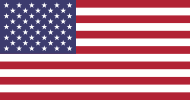 The US flag is modified to have fifty stars, reflecting the addition of one new state: Hawaii.
The US flag is modified to have fifty stars, reflecting the addition of one new state: Hawaii.
The Civil Rights Act of 1960 is signed into law by Pres. Dwight D. Eisenhower on May 6. The act establishes federal inspection of local voter registration rolls and introduces penalties for anyone who obstructs a citizens attempt to register to vote or to cast a ballot.
1960
Alister Hardy promotes his Homo aquaticus or "aquatic ape" hypothesis to the British Sub Aqua Club. He will follow up this announcement with several magazine articles.
The Congress of Racial Equality organizes Freedom Rides through the Deep South.
 John F. Kennedy becomes thirty-fifth president of the United States.
John F. Kennedy becomes thirty-fifth president of the United States.
1961

 F. Jacob and J. Monod publish "Genetic regulatory mechanisms in the synthesis of proteins," a paper in which the theory of the OPERON is developed.
F. Jacob and J. Monod publish "Genetic regulatory mechanisms in the synthesis of proteins," a paper in which the theory of the OPERON is developed.
Martin Glaessner determines fossils in the Ediacara Hills of South Australia (Ediacaran fauna) to be Precambrian in age (approximately 600 million years old), making them the oldest-known multicelled organisms.
 On October 1, James Meredith becomes the first black student to enroll at the University of Mississippi.
On October 1, James Meredith becomes the first black student to enroll at the University of Mississippi.
1962
Human geneticist James Neel develops the "thrifty genotype" hypothesis that human ancestors endured feast-famine cycles that made the human body very effective in storing fat for lean times.
Martin Luther King Jr. writes his "Letter from Birmingham Jail" on April 16.
Kennedy assassinated.
Lyndon Johnson becomes thirty-sixth president of the United States.
 Martin Luther King Jr. is named Time magazine's Man of the Year.
Martin Luther King Jr. is named Time magazine's Man of the Year.
 On June 12, Mississippi NAACP field secretary Medgar Evers is assassinated outside his home in Jackson.
On June 12, Mississippi NAACP field secretary Medgar Evers is assassinated outside his home in Jackson.
1963
Lantian Man, a 500,000-year-old Homo erectus specimen, is found in Lantian County, China, just north of Xi'an.
Congress passes the Civil Rights Act of 1964. The act and this discrimination in all public accommodations and by employers. It also establishes the Equal Opportunity Employment Commission (EEOC) to monitor compliance with the law.


 On June 21, civil rights workers James Chaney, Andrew Goodman, and Michael Schwerner are abducted and killed by terrorists in Mississippi.
On June 21, civil rights workers James Chaney, Andrew Goodman, and Michael Schwerner are abducted and killed by terrorists in Mississippi.
The 24th amendment to the Constitution, which abolishes the poll tax, is ratified.
1964
Louis Leakey describes Homo habilis, meaning "handy." The new species designation is not well received by the scientific community.
Two deciduous molars, roughly 44,000 years old, are collected at Grotta del Cavallo in southeastern Italy. After an initial classification as Neanderthal, they will be assigned to modern humans in a 2011 study.
Vincent Dethier publishes "Microscopic Brains," an article on insect behavior, in Science. He calls for a more empathetic approach to animal subjects, even tiny invertebrates.
 Malcolm X is assassinated at the Audubon Ballroom in Harlem on February 21.
Malcolm X is assassinated at the Audubon Ballroom in Harlem on February 21.
The Watts Uprising occurs on August 11-16th. Thirty-four people are killed and 1000 are injured in the five-day confrontation.
1965
N.H. Field publishes "Fossil sea-echinoids from a Romano-British site" describing the centuries-long occupation of a Romano-British settlement in Dorset. Newer buildings have been built upon older ones, with fossil urchins in each.
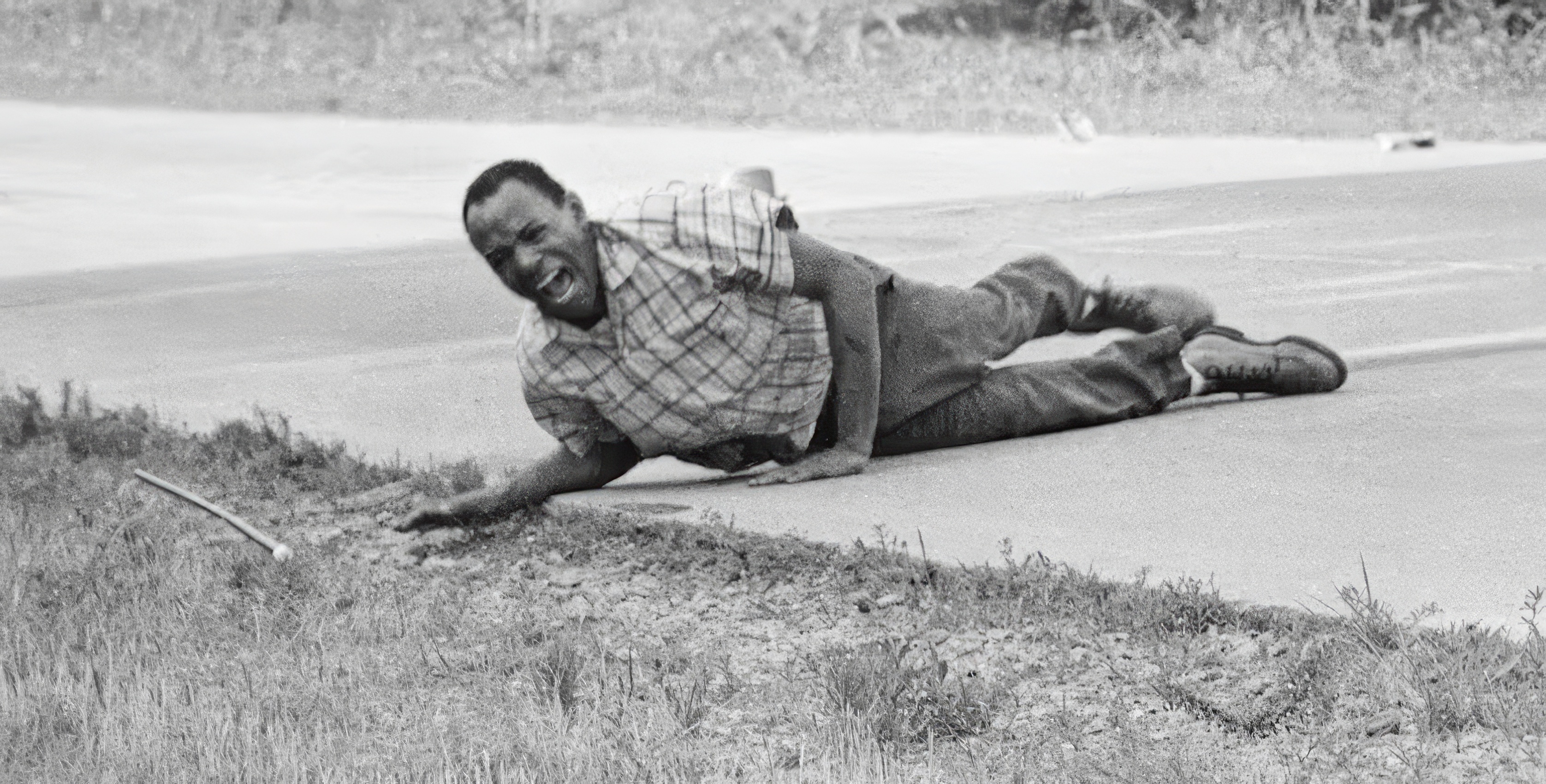 On June 5, James Meredith begins a solitary March Against Fear for 220 miles from Memphis, Tennessee, to Jackson, Mississippi, to protest racial discrimination. Meredith is shot by a sniper soon after crossing into Mississippi.
On June 5, James Meredith begins a solitary March Against Fear for 220 miles from Memphis, Tennessee, to Jackson, Mississippi, to protest racial discrimination. Meredith is shot by a sniper soon after crossing into Mississippi.
 On November 8, Edward Brooke of Massachusetts becomes the first African-American to be elected to the United States Senate since Reconstruction.
On November 8, Edward Brooke of Massachusetts becomes the first African-American to be elected to the United States Senate since Reconstruction.

 On September 15, the Black Panther Party is formed in Oakland, California, by Bobby Seale and Huey P. Newton.
On September 15, the Black Panther Party is formed in Oakland, California, by Bobby Seale and Huey P. Newton.
1966
Willi Hennig works on a new approach to assessing evolutionary relationships, known as cladistics. Although it will be hotly debated, this technique will eventually become standard practice in paleontology, botany and zoology.
Harry Whittington begins reexamining Burgess Shale fossils originally identified by Charles Walcott starting in 1909. Over the next two decades, Whittington (with the assistance of his graduate students Simon Conway Morris and Derek Briggs), will eventually overturn some of Walcott's theories and propose that most of the animals left no living relatives.
 On July 13, Thurgood Marshall takes his seat as the first African-American justice on the United States Supreme Court.
On July 13, Thurgood Marshall takes his seat as the first African-American justice on the United States Supreme Court.
On June 12, the United States Supreme Court, in Loving vs Virginia, strikes down state interracial marriage bans.
The six-day Newark Riot begins on July 12.
1967
Lynn Sagan (later Lynn Margulis) hypothesizes that chloroplasts originated as cyanobacteria, and that mitochondria originated as bacteria. She suggests that both were engulfed by other cells and began functioning as symbionts.
Graduate student S.B. Misra discovers a well-preserved sea floor with numerous fossils dating from the late Precambrian (later to be dubbed the Ediacaran Period) at Mistaken Point, Newfoundland.
P. S. Martin suggests that fast-moving bands of human hunters caused the extinctions of Pleistocene big-game species.
Richard Leakey finds two fossil skulls, Omo I and Omo II, in Ethiopia. Though initially dated at 130,000 years, the fossils will later be dated (using argon decay) at 195,000 years, and designated as the oldest examples so far found of Homo sapiens.
Daniel Janzen argues that, because they live under "easy" conditions, tropical plants cannot likely survive a wide range of temperature, light, or hydrologic conditions.
 On April 4, Martin Luther King, Jr., is assassinated in Memphis, Tennessee. In the wake of the assassination, 125 cities in 29 states experience uprisings.
On April 4, Martin Luther King, Jr., is assassinated in Memphis, Tennessee. In the wake of the assassination, 125 cities in 29 states experience uprisings.
 On June 5, New York Senator and presidential candidate Robert F. Kennedy is assassinated in Los Angeles.
On June 5, New York Senator and presidential candidate Robert F. Kennedy is assassinated in Los Angeles.
1968
A.G. Cairns-Smith publishes a paper suggesting that the first life on Earth might have been fine-grained clay crystals. He will publish on this topic several more times before his death, but the experimental evidence will remain scant, perhaps in part because sufficient technology doesn't yet exist to test the hypothesis.
Richard Fox describes a Paleocene mammal, Prothryptacodon albertensis, retrieved from a well dug in Alberta, Canada. This find eerily resembles that of another Paleocene mammal recovered from a Louisiana oil well and described in 1932 by George Gaylord Simpson.
Teenaged fossil enthusiast Tadashi Suzuki finds a plesiosaur fossil in his hometown of Iwaki City, Japan. The fossil turns out to be a new species, but it won't be identified as such for nearly 40 years.
1969
R. H. Whittaker proposes to divide all living things into five kingdoms: Animalia, Plantae, Fungi, Protista and Monera.
Archaeologist Joachim Hahn pieces together the fragments of the lion- headed man found 30 years earlier the Hohlenstein-Stadel Cave in Germany.
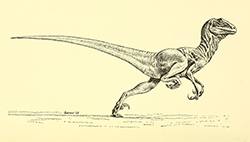 John Ostrom publishes Osteology of Deinonychus antirrhopus, an Unusual Theropod from the Lower Cretaceous of Montana — a description of Deinonychus with a frontispiece illustration by Bob Bakker, suggesting that the dinosaur is alert, agile and intelligent.
John Ostrom publishes Osteology of Deinonychus antirrhopus, an Unusual Theropod from the Lower Cretaceous of Montana — a description of Deinonychus with a frontispiece illustration by Bob Bakker, suggesting that the dinosaur is alert, agile and intelligent.
 Dr. Clifton Wharton Junior is named president of Michigan State University on January 2. He is the first African-American to lead a major, predominantly white university in the 20th century.
Dr. Clifton Wharton Junior is named president of Michigan State University on January 2. He is the first African-American to lead a major, predominantly white university in the 20th century.
1970
(no entry for this year)
On January 12, the Congressional Black Caucus is formed in Washington DC.
1971
Five pairs of adult wall lizards are moved between two islands in Croatia. Over the next few decades, the lizards on the new island will evolve larger heads, stronger bites, and a greater tolerance for an herbivorous diet than the original lizard population.
A. G. Sharov describes a pterosaur with fossil "hair" impressions as Sordes pilosus (hairy devil).
Grad student Douglas Lawson discovers the humerus of a giant pterosaur in Texas. Over the next four years, he will continue collecting and finally publish a description of Quetzalcoatlus northropi, the largest flying animal ever found, with an estimated wingspan of 39 feet.
Polish and Mongolian paleontologists discover the entwined skeletons of a Protoceratops and a juvenile Velociraptor in the Gobi Desert, most likely locked in mortal combat.

 In November, Barbara Jordan of Houston and Andrew Young of Atlanta become the first black Congressional representatives elected from the US South since 1898.
In November, Barbara Jordan of Houston and Andrew Young of Atlanta become the first black Congressional representatives elected from the US South since 1898.
1972
Stephen Jay Gould and Niles Eldredge publish their theory of punctuated equilibrium, stating that evolution often occurs in short bursts, followed by long periods of stability.
Bob Bakker publishes "Anatomical and Ecological Evidence of Endothermy in Dinosaurs" in Nature, arguing that dinosaurs were warm-blooded animals.
Harry Whittington shows a preliminary reconstruction of the Burgess Shale species Opabinia at a Palaeontological Association meeting, and the crowd roars with laughter.
 In the late summer of 1973, Republican Vice President Spiro Agnew was under investigation by the United States Attorney's office in Baltimore, Maryland, on charges of extortion, tax fraud, bribery and conspiracy. In October, he was formally charged with having accepted bribes totaling more than $100,000, while holding office as Baltimore County Executive, Governor of Maryland, and as Vice President of the United States. On October 10, 1973, Agnew was allowed to plead no contest to a single charge that he had failed to report $29,500 of income received in 1967, with the condition that he resign the office of Vice President. Agnew is the only Vice President in U.S. history to resign because of criminal charges.
In the late summer of 1973, Republican Vice President Spiro Agnew was under investigation by the United States Attorney's office in Baltimore, Maryland, on charges of extortion, tax fraud, bribery and conspiracy. In October, he was formally charged with having accepted bribes totaling more than $100,000, while holding office as Baltimore County Executive, Governor of Maryland, and as Vice President of the United States. On October 10, 1973, Agnew was allowed to plead no contest to a single charge that he had failed to report $29,500 of income received in 1967, with the condition that he resign the office of Vice President. Agnew is the only Vice President in U.S. history to resign because of criminal charges.
 Thomas Bradley is elected the first black mayor of Los Angeles in the modern era. He is reelected four times and thus holds the mayor's office for 20 years.
Thomas Bradley is elected the first black mayor of Los Angeles in the modern era. He is reelected four times and thus holds the mayor's office for 20 years.
1973
Half in jest, Francis Crick and Leslie Orgel suggest that ancient aliens may have seeded the early Earth with DNA, and all life on this planet arose from that.
Peter and Rosemary Grant begin a long-term study of finches on the Galápagos Islands. In succeeding years, as they watch finches adapt to alternating wet and dry conditions, the Grants will uncover evidence that evolution proceeds more rapidly than what Darwin estimated.
Taking a line from Through the Looking Glass, Leigh Van Valen establishes the "Red Queen" hypothesis of coevolution between predator and prey: "it takes all the running you can do, to keep in the same place. If you want to get somewhere else, you must run at least twice as fast as that!"
Heinz Tobien collects a primate tooth fragment from limestone rocks in southern Germany. Studies published decades later, in 2001 and 2011, will suggest that the fossil is 17 million years old, and that a hominoid migration into Eurasia occurred 3 million years earlier than previously thought.
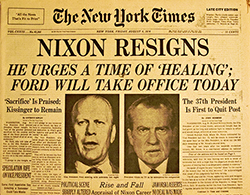 Under mounting impeachment pressure resulting from the Watergate break-in, Nixon becomes the first president ever to resign from presidency.
Under mounting impeachment pressure resulting from the Watergate break-in, Nixon becomes the first president ever to resign from presidency.
 Gerald Ford becomes thirty-eighth president of the United States.
Gerald Ford becomes thirty-eighth president of the United States.
1974
Donald Johanson and his team discover a female fossil hominid (to be later named Australopithecus afarensis) and call her Lucy. Lucy's discovery establishes that hominids walked upright before developing large brains, overturning some long-held beliefs about hominid evolution. Her status as a direct ancestor of modern humans, however, will remain controversial.
Heavy equipment operator Porky Hansen accidentally uncovers a mammoth tusk while leveling ground for a building. The site will reveal many more mammoths, becoming a tourist attraction for Hot Springs, South Dakota.
John Ostrom publishes a paper titled "Archaeopteryx and the Origin of Flight" reviving Thomas Henry Huxley's arguments from the 1860s.
(no entry for this year)
1975
Mary-Claire King and Allan Wilson publish their finding that human and chimpanzee DNA sequences differ by roughly 1 percent, meaning humans have more in common with chimps than chimps do with gorillas. King and Wilson suggest that humans and chimps differ largely in the DNA that switches on and off genes.
Armed with an old geological map, selt-taught fossil hunter Joan Wiffin finds New Zealand's first recognized dinosaur fossil, a theropod tail vertebra, in the Maungahouanga Valley.
(no entry for this year)
1976
Overturning the classifications introduced by R. H. Whittaker seven years earlier, Carl Woese proposes to divide all living things into three categories: Bacteria, Archaea and Eukarya.
Paleontologists looking for cave bear remains explore Sima de los Huesos ("Pit of the Bones") at Atapuerca, Spain. For many years afterwards, it will remain the densest accumulation of fossil human bones ever discovered, including the remains of more than 30 Homo heidelbergensis individuals.
 The eighth and final night for the televised miniseries based on Alex Haley's Roots is shown on February 3. This final episode achieves the highest ratings to that point for a single television program.
The eighth and final night for the televised miniseries based on Alex Haley's Roots is shown on February 3. This final episode achieves the highest ratings to that point for a single television program.
Jimmy Carter becomes thirty-ninth president of the United States.
1977
Submersible vehicle Alvin reveals deep sea vents on the ocean floor that give rise to an ecosystem owing nothing to photosynthesis. This finding prompts speculation that life on Earth first arose in deep-sea, not shallow-water, ecosystems.
Fred Sanger and collaborators publish the first complete DNA sequence of an organism, a bacteriophage, or virus infecting bacteria.
(no entry for this year)
1978
J. W. Kitching discovers a clutch of prosauropod eggs in South Africa, the oldest dinosaur embryos yet found. They will show that sauropods walked on all fours as small animals, but the significance of this find will be overlooked for nearly three decades.
Mary Leakey announces the discovery of fossil footprints at Laetoli demonstrating that hominids walked upright 3.6 million years ago.
 On March 28, a partial core meltdown occurred in Unit 2 of the Three Mile Island Nuclear Generating Station in Dauphin County, Pennsylvania near Harrisburg.
On March 28, a partial core meltdown occurred in Unit 2 of the Three Mile Island Nuclear Generating Station in Dauphin County, Pennsylvania near Harrisburg.
1979
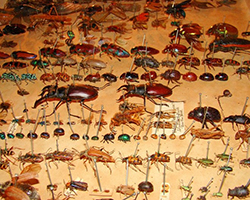 Fresh out of law school and short on cash, Robert Heggestad buys an antique cabinet on an installment plan from a Virginia antique shop. The cabinet turns out to contain some 1,700 plant and invertebrate specimens from the personal collection of Alfred Russel Wallace.
Fresh out of law school and short on cash, Robert Heggestad buys an antique cabinet on an installment plan from a Virginia antique shop. The cabinet turns out to contain some 1,700 plant and invertebrate specimens from the personal collection of Alfred Russel Wallace.
Crystal Bennett finds a human-altered sea urchin fossil in Islamic (Fatimid) deposits dating from the 10th to 12th centuries in the Amman Citadel.
(no entry for this year)
1980
Christiane Nüsslein-Volhard and Eric Wieschaus describe genetic mutations affecting the body plan of the fruit fly Drosophila, and identify genes controlling the basic body plans of all animals. These genes will eventually be known as Hox genes.
Paul Berg, Walter Gilbert, and Frederick Sanger share a Nobel Prize in Chemistry, with Berg cited for his fundamental studies of the biochemistry of nucleic acids, with particular regard to recombinant-DNA, and Gilbert and Sanger cited for their contributions concerning the determination of base sequences in nucleic acids. This is Sanger's second Nobel, the first having come in 1958 for his work on the structure of insulin.
(no entry for this year)
1982
(no entry for this year)
On November 2, Pres. Ronald Reagan signs into law a bill making the third Monday in January a federal holiday honoring the life of Martin Luther King Jr.
1983
German paleobiologist Adolf Seilacher suggests that most of the Ediacaran fossils discovered in the 1940s are not related to any modern forms. Calling them vendobionts, he argues that they went extinct after the emergence of large predators. Seilacher's interpretation, however, will remain in dispute.
(no entry for this year)
1984
David Raup and Jack Sepkoski publish the controversial claim that mass extinctions are regularly spaced at 26 million years.
Richard Leakey and his team discover Turkana Boy, the most complete Homo erectus fossil yet discovered.
United States Rep. William H. Gray III (Pennsylvania), becomes the first African-American congressmen to chair the House Budget Committee.
1985
Kenneth Oakley publishes Decorative and Symbolic Uses of Fossils describing, among other things, a hand axe crafted by Homo heidelbergensis featuring a fossil sea urchin, and a fossil urchin set within a bronze locket from a Gallo-Roman temple.
Paleoanthropologists excavate an artifact-rich portion of Cueva de los Aviones in Iberia. Fifty-thousand-year-old perforated and pigment-stained shells from the cave will prompt researchers to argue, 25 years later, that Neanderthals wore both makeup and jewelry.
On September 8, The Oprah Winfrey Show from Chicago becomes nationally syndicated.
 On April 26, the Chernobyl Nuclear Disaster occurred in the Soviet Union, when reactor 4 of the Chernobyl Nuclear Power Plant suffered a catastrophic power increase, leading to explosions in the core. This dispersed large quantities of radioactive fuel and core materials into the atmosphere and ignited the combustible graphite moderator. The burning graphite moderator increased the emission of radioactive particles, carried by the smoke, as the reactor had not been contained by any kind of hard containment vessel (unlike all Western plants). The accident occurred during an experiment scheduled to test a potential safety emergency core cooling feature. Large areas in Ukraine, Belarus, and Russia had to be evacuated, with over 336,000 people resettled.
On April 26, the Chernobyl Nuclear Disaster occurred in the Soviet Union, when reactor 4 of the Chernobyl Nuclear Power Plant suffered a catastrophic power increase, leading to explosions in the core. This dispersed large quantities of radioactive fuel and core materials into the atmosphere and ignited the combustible graphite moderator. The burning graphite moderator increased the emission of radioactive particles, carried by the smoke, as the reactor had not been contained by any kind of hard containment vessel (unlike all Western plants). The accident occurred during an experiment scheduled to test a potential safety emergency core cooling feature. Large areas in Ukraine, Belarus, and Russia had to be evacuated, with over 336,000 people resettled.
1986
(no entry for this year)
 Dr. Clifton R. Wharton Jr. is appointed chairman and CEO of TIAA-CREF, the 19th largest US Fortune 500 company. He becomes the first black chairman and CEO of a major US corporation.
Dr. Clifton R. Wharton Jr. is appointed chairman and CEO of TIAA-CREF, the 19th largest US Fortune 500 company. He becomes the first black chairman and CEO of a major US corporation.
 Kurt Schmoke becomes the first African-American elected mayor of Baltimore.
Kurt Schmoke becomes the first African-American elected mayor of Baltimore.
1987
Allan Wilson and Rebecca Cann announce that all humans share a common ancestor who lived in Africa as recently as 150,000 years ago. Because the discovery is based on examination of mitochondrial DNA, the ancestral entity will be given the popular (and somewhat misleading) name of "Mitochondrial Eve." The controversial finding will be supported by another discovery in 2000.
Jenny Clack finds Acanthostega, the most complete Devonian tetrapod yet discovered. It has evidence for functional gills as well as legs, strongly suggesting that animals evolved legs while still living in the water.
Kansas rancher Charles Bonner collects a plesiosaur mother-and-fetus fossil. Nearly 25 years later, O'Keefe and Chiappe will describe this as evidence that that plesiosaurs gave live birth and might have been attentive mothers.
(no entry for this year)
1988
Molecular biologist John Cairns describes experiments suggesting that bacteria facing environmental stress can "direct" their mutations to produce favorable adaptations. Directed mutation will remain a controversial idea, but the possibility that organisms mutate at a greater rate (hypermutation) under environmental stress will gain more acceptance.
 Douglas Wilder wins the governorship of Virginia, make him the first African-American to be popularly elected to that office.
Douglas Wilder wins the governorship of Virginia, make him the first African-American to be popularly elected to that office.
 Gen. Colin L. Powell is named chief of the United States Joint Chiefs of Staff, the first African-American in the youngest person (52) to hold the post.
Gen. Colin L. Powell is named chief of the United States Joint Chiefs of Staff, the first African-American in the youngest person (52) to hold the post.
 In March, Frederick Andrew Gregory becomes the first African-American to command a space shuttle when he leads the crew of the Discovery.
In March, Frederick Andrew Gregory becomes the first African-American to command a space shuttle when he leads the crew of the Discovery.
George Bush becomes forty-first president of the United States.
1989
Ned Colbert finally completes his definitive species description of the Coelophysis dinosaurs he found in 1947.
Philip Gingerich finds a fossil whale, Basilosaurus in Egypt. It has tiny legs, just inches long, retaining all five toes. Five years later, he will discover an even more primitive whale ancestor, Rodhocetus, with even bigger hind legs, in Pakistan. Eighteen years later, Hans Thewissen will announce the discovery of another missing link in cetacean evolution: fox- like Indohyus found in Kashmir.
 Nelson Mandela, South African black nationalist, is freed after 27 years in prison.
Nelson Mandela, South African black nationalist, is freed after 27 years in prison.
1990
The Human Genome Project is launched with the goal of sequencing all 3 billion base pairs of human DNA by 2005.
Mongolia invites the American Museum of Natural History to reinstate excavations in the Gobi desert.
Scott Wing of the Smithsonian Institution discovers the Big Cedar Ridge fossil plant site in Wyoming. The locality will become known as the Pompeii of Cretaceous plants.
The Soviet Union ends, and so does the Cold War.
1991
Chicxulub crater is discovered in the Yucatán Peninsula, supporting the asteroid impact theory first suggested in 1980.
(no entry for this year)
1992
A team led by Tim White finds the first traces of a hominid fossil that will later be named Ardipithecus ramidus. Seventeen years later, the team will publish a detailed description of a 4.4-million-year-old, 120-centimeter-tall, nearly complete adult female, along with fossils from 35 other individuals. The team will argue that "Ardi" should supplant Lucy at the base of the hominid tree.
Ian Campbell and collaborators publish a paper pointing to the Siberian Traps, an area of massive volcanic activity, as the cause of the Permo- Triassic mass extinction 251 million years ago.
Paleontologists led by Jim Kirkland discover Utahraptor, a super-sized velociraptor that conveniently supports the super-sized velociraptors that will appear in the screen version of Jurassic Park a year later.
Suburban San Diego roadwork uncovers mastodon bones and broken rocks at what becomes known as the (Richard) Cerutti Mastodon site. Roadwork halts while paleontologist Tom Deméré examines the find. Twenty-five years later, Deméré, Cerutti and nine other researchers will contend that the site is evidence of human presence in North America 130,000 years ago.
1993
A calcite-encrusted hominid skeleton is discovered in a karst cave near Altamura, Italy. About two decades later, researchers will date the rock layers and test a scapula fragment, eventually concluding that the skeleton is probably 128,000 to 187,000 years old, and ranks among so- called "early Neanderthals."
Geology student Iwan Stossel stumbles across a nearly 400-million-year-old tetrapod fossil trackway on the island of Valentia, County Kerry, Ireland.
J. William Schopf publishes a description of microfossils of the Apex Basalt in Australia. His claims that they are 3.5-billion-year-old microbes that could photosynthesize and produce oxygen will later be challenged. One of his challengers, Martin Brasier, will coauthor a 2011 study on microfossils from a nearby outcrop, claiming that the 3.4-billion- year-old microbes fed off sulfur.
On an expedition in the Gobi desert, paleontologists from the American Museum of Natural History discover the skeleton of an Oviraptor dinosaur crouching over a nest of eggs, apparently incubating them in the same fashion as modern birds.
Roland Anderson and Jennifer Mather publish "Personalities of Octopuses" in the Journal of Comparative Psychology.
 On April 27, Nelson Mandela is elected President of South Africa in that nation's first election giving black voters full enfranchisement. The land of apartheid is now led by a black activist.
On April 27, Nelson Mandela is elected President of South Africa in that nation's first election giving black voters full enfranchisement. The land of apartheid is now led by a black activist.
1994
Anthropologist Ron Clarke finds previously overlooked foot bones, showing both ape and human qualities, from Sterkfontein. Future finds will associate these bones with a skeleton nicknamed Little Foot.
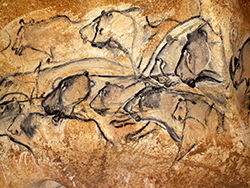 In what will later be named Chauvet Cave, French cavers discover 32,000-year-old paintings showing 400 animal images.
In what will later be named Chauvet Cave, French cavers discover 32,000-year-old paintings showing 400 animal images.
(no entry for this year)
1995
Lee Berger and Ron Clarke publish an article in the Journal of Human Evolution arguing that the Taung child, discovered in 1924, may have been killed by a bird of prey.
(no entry for this year)
1996
Using "molecular clock" estimates of mutation rates, Greg Wray and collaborators hypothesize that metazoan phyla diverged from each other 1 billion years ago, or even earlier. In other words, they argue that metazoans existed hundreds of millions of years before the earliest metazoan fossils (about 600 million years old) yet found.
Alan Walker and Pat Shipman publish a description of advanced Vitamin A poisoning in a 1.7-million-year-old Homo erectus skeleton. They assert that it is evidence of both meat eating, caused by consuming the liver of a large carnivore, and sufficient sociability in Homo erectus to care for an ill and incapacitated individual.
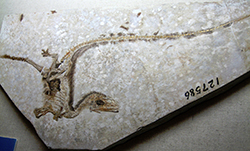 Chen Pei Ji unveils Sinosauropteryx prima from Liaoning, China, the first feathered dinosaur discovered, at the Society of Vertebrate Paleontology's annual meeting. Fourteen years later, a team of Chinese and British paleontologists will argue that this animal had a striped tail, a reddish color alternating with white, based on pigment-rich microscopic spheres in the fossilized feathers.
Chen Pei Ji unveils Sinosauropteryx prima from Liaoning, China, the first feathered dinosaur discovered, at the Society of Vertebrate Paleontology's annual meeting. Fourteen years later, a team of Chinese and British paleontologists will argue that this animal had a striped tail, a reddish color alternating with white, based on pigment-rich microscopic spheres in the fossilized feathers.
The roughly 9,000-year-old Kennewick Man skeleton is found in the northwestern United States. Craniometric analysis initially suggests an affiliation to Ainu and Polynesian groups. Better DNA sampling methods will finally allow genetic analysis nearly 20 years later, and that will indicate a relationship closest to modern Native Americans.
Tim White's team discovers horse, antelope and other mammal bones with cut marks from stone tools — evidence of tool use 2.5 million years ago.
(no entry for this year)
1997
A team of archaeologists finds evidence of human occupation 14,000 years ago at Monte Verde, Chile, pushing back the arrival date of humans in the Americas.
Excavations near Koblenz in northern Germany turn up a Neanderthal skullcap, estimated at 170,000 years old, that was apparently used as a bowl.
Paleontologist Karen Chin receives a 17-inch coprolite excavated in Saskatchewan. Estimated at 65 million years old and full of crunched bone, it is likely the calling card of a T. rex.
Paleontologist Paul Sereno discovers the delicate Darth Vader-like skull of a dinosaur he will later name Nigersaurus taqueti and nickname the "Mesozoic Cow."
Two 5-foot-long Humboldt squid in the Sea of Cortez "mug" a diver working on a PBS documentary, making off with the gold chain hanging around the diver's neck, and demonstrating that Humboldt squid have bad manners but good taste.
(no entry for this year)
1998
Andrew Parker publishes a paper suggesting that some Cambrian animals (Wiwaxia, Canadia and Marella) developed flickering displays of iridescent color at about the same time that eyes evolved.
Aterian artifacts (named for stone tools discovered in Algeria in 1917) are estimated at 70,000 years old at sites in Libya. Over the next dozen years, the age of artifacts found at various sites in northern Africa will be pushed back to at least 110,000 years old.
Xiao, Zhang and Knoll describe fossilized animal embryos in Nature. Li, Chen and Hua simultaneously describe embryos in Science. The fossils all come from the Doushantuo phosphorites in southern China, and all are estimated to be about 570 million years old, making them the oldest fossil embryos so far discovered. Nine years later, however, Bailey and collaborators will challenge this interpretation, arguing the "fossil embryos" could just as easily be large bacteria. That challenge will be answered by the announcement of fossil embryos inside egg cysts.
(no entry for this year)
1999
Chinese paleontologists discover an exceptionally well-preserved feathered dinosaur, probably a juvenile dromaeosaur. Citing the confusion caused by language barriers and jet lag, the paleontologists' American collaborators nickname the fossil "Dave the fuzzy raptor," after a character alluded to in a Cheech and Chong routine. This fossil will be assigned to the genus Sinornithosaurus. (The next fuzzy discovery will be nicknamed "Chong.")
(no entry for this year)
2000
Based on studies of Y chromosomes, Peter Underhill publishes his finding that all modern humans share a common ancestor, bolstering the 1987 announcement from Cann and Wilson. This suggests a "bottleneck" event (population crash) among human ancestors living in Africa roughly 150,000 years ago.
Sally McBearty and Alison Brooks publish "The Revolution that Wasn't" challenging the long-held notion of a "big bang" in human intellectual evolution approximately 40,000 years ago. Instead, they cite evidence for earlier appearances of modern behavior.
A research team led by Paul Sereno discovers Rugops primus ("first wrinkle face") in the Sahara. This dinosaur's resemblance to South American fossils suggests that Africa separated from the ancient landmass of Gondwana more recently than previously thought.
Phil Currie publishes a paper suggesting that T. rex was a social animal that hunted in packs.
2001
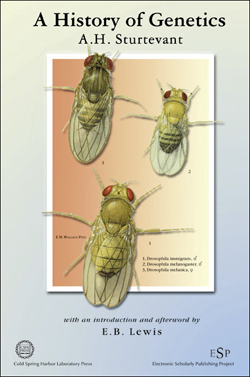 Alfred Sturtevant's A History of Genetics is republished jointly by the Electronic Scholarly Publishing Project and the Cold Spring Harbor Laboratory Press. Sturtevant provides an insider's perspective (he created the FIRST GENETIC MAP ) to this first-rate summary of the foundations of classical genetics.
Alfred Sturtevant's A History of Genetics is republished jointly by the Electronic Scholarly Publishing Project and the Cold Spring Harbor Laboratory Press. Sturtevant provides an insider's perspective (he created the FIRST GENETIC MAP ) to this first-rate summary of the foundations of classical genetics.
CLICK TO BUY THIS BOOK
The International Human Genome Sequencing Consortium (Human Genome Project) publishes the initial sequence and analysis of the human genome in Nature Magazine. Celera Genomics simultaneously publishes a draft human genome sequence in Science Magazine.
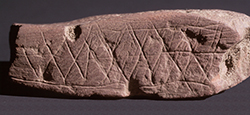 Chris Henshilwood and collaborators discover and describe 77,000-year-old artwork: stones carved with lines and triangles, from Blombos Cave on the Southern Cape coast of Africa. Three years later, Henshilwood and collaborators will describe more Blombos artifacts: tiny snail shells that were apparently pierced and worn as jewelry about 76,000 years ago. A few years after that, another research team will describe similar shell beads, at least 100,000 years old, in Israel and Algeria.
Chris Henshilwood and collaborators discover and describe 77,000-year-old artwork: stones carved with lines and triangles, from Blombos Cave on the Southern Cape coast of Africa. Three years later, Henshilwood and collaborators will describe more Blombos artifacts: tiny snail shells that were apparently pierced and worn as jewelry about 76,000 years ago. A few years after that, another research team will describe similar shell beads, at least 100,000 years old, in Israel and Algeria.
Joshua Smith and collaborators publish a description of a giant sauropod from Egypt, possibly the largest Cretaceous sauropod yet discovered. It is considered a possible food source for three large carnivorous dinosaur species discovered decades earlier by Ernst Stromer.
Luann Becker and collaborators publish a paper describing carbon fullerenes (buckyballs) at the Permo-Triassic boundary in China, Japan and Hungary. Because they can occur in meteorites, the fullerenes are cited as evidence of a meteorite impact at the end of the Permian. Other scientists will have difficulty reproducing their results, however, and the researchers' claim will remain controversial.
Odin and Néraudeau publish a description of a Neanderthal flint tool found in southwestern France with a fossil sea urchin on one side.
(no entry for this year)
2002
David Lordkipanidze and collaborators excavate a 1.77-million-year-old Homo erectus skull of a "toothless old man" in Dmanisi. New bone growth after the loss of his teeth suggests that he was cared for by others, the oldest evidence yet found of care for the sick in fossil hominids.
Michel Brunet and collaborators publish a description of Sahelanthropus tchadensis, a hominid fossil from western central Africa. Suspected to be 6 to 7 million years old, it is possibly the oldest hominid fossil yet found. Its location, in Chad, is expected to spur hominid fossil hunting west of Africa's Rift Valley.
(no entry for this year)
2003
M.R. Sánchez-Villagra, O. Aguilera and I. Horovitz publish a description of Phoberomys, a fossil rodent from Venezuela the size of a buffalo.
Paleontologists in Germany identify the world's oldest pantry: an underground burrow system probably dug by an extinct species of ground squirrel or hamster. Estimated at 17 million years old, the food stash is stuffed with more than 1,800 fossilized nuts.
Paleontologists led by John Horner find a T. rex fossil that will later yield evidence of blood vessels and blood cells. The fossil will also prove to be an egg-laying female.
Two separate teams, digging 2,000 miles apart, find two new Antarctic dinosaurs in the same week. One appears to be a Jurassic sauropod, the other a Cretaceous theropod.
Barack Obama is elected to the United States Senate from Illinois. He becomes the second African-American elected to the Senate from that state, and only the fifth black US senator in history.
2004
Peter Brown, Mike Morwood and collaborators announce the find of a 1-meter- tall hominid skeleton on the Indonesian island of Flores. Found near the remains of giant lizards and pygmy elephants, the new species is formally named Homo floresiensis and nicknamed the "hobbit." Though some suspect it's a kind of malformed, small-brained midget, this interpretation will be answered by braincase scans, wrist bones too primitive to be Homo sapiens, and the announcement of several more individuals of the same species. Later studies will suggest direct ancestry from Homo erectus, although another study will argue the remains really indicate Down syndrome. The species is initially given an estimated age as young as 11,000 years, but later research will indicate an age of at least 50,000 years.
A 70-million-year-old mammal jaw is found in Pui, Romania, some 100 miles from Vlad Dracula's castle. Eleven years later, the animal will be formally named Barbatodon transylvanicus by scientists who note that strengthening iron, not blood drinking, gives the teeth their bright red color.
D. Néraudeau describes deposits in western France revealing hundreds of Acheulian and Mousterian tools, 12 of them bearing fossils.
Heather Wilson and Lyall Anderson publish a paper describing the oldest land animal fossil yet discovered: Pneumodesmus newmani, a 428-million- year-old, centimeter-long millipede found by amateur fossil hunter Mike Newman.
M.-Y. Zhu and collaborators publish a description of munched trilobite parts inside another arthropod, confirming earlier suspicions that other animals snacked on the little water bugs.
Naama Goren-Inbar and her team announce the discovery of controlled fire use by hominids at a 790,000-year-old site in Israel, pushing the earliest known use of fire back 300,000 years from previous estimates.
Qingjin Meng and collaborators publish a description of an adult Psittacosaurus dinosaur associated with 34 juveniles, apparent evidence of parental care.
The British Museum begins an excavation project at Happisburgh in Norfolk. Over the next six years, researchers will uncover artifacts pushing back the earliest evidence of human activity at such a high latitude — 45 degrees — to perhaps as much as 950,000 years ago.
Using CT scans on femurs of the early hominid Orrorin tugenensis discovered in Kenya, Galik and collaborators push back the development of bipedalism in hominids to 6 million years ago (2 million years earlier than in Australopithecus anamensis).
X. Wang and Z. Zhou publish a description of the first known pterosaur egg containing an exquisitely preserved embryo. Though the egg is slightly smaller than the average chicken egg, the embryo sports a 27-centimeter wingspan. Several months later, Z. Zhou and F. Zhang publish a description of a Cretaceous bird embryo, the first found with feathers.
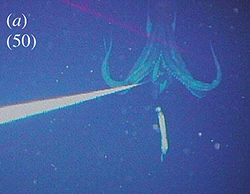 A team of Japanese researchers take the first photograph ever of a giant squid in the wild. Unfortunately, they rip off one of the poor creature's tentacles in the process.
A team of Japanese researchers take the first photograph ever of a giant squid in the wild. Unfortunately, they rip off one of the poor creature's tentacles in the process.
(no entry for this year)
2005
M.A. Whyte announces the discovery of a 330-million-year-old trackway of a 5-foot-long, six-legged water scorpion (eurypterid) that could walk on land while the first tetrapods tried to do the same thing. Two years later, Simon Braddy, Markus Poschmann and collaborators will announce the find of fossil claw from an 8-foot eurypterid.
Yaoming Hu, Jin Meng, Yuanqing Wang and Chuankui Li publish a description of two large carnivorous mammals from the Cretaceous, one of which appears to have the remains of a diminutive dinosaur in its stomach. These fossils overturn long-held notions that Mesozoic mammals were all rat-sized plebeians scurrying around dinosaur feet.
Yohannes Haile-Selassie and colleagues announce the find of a nearly 4- million-year-old hominid from Ethiopia, possibly the remains of Australopithecus anamensis.
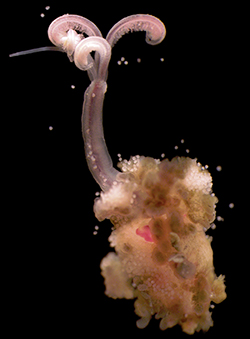 Adrian Glover and Thomas Dahlgren announce the discovery of a new species of marine worm, discovered off the Swedish coast, that lives on whale bones on the sea floor. They name the species Osedax mucofloris.
Adrian Glover and Thomas Dahlgren announce the discovery of a new species of marine worm, discovered off the Swedish coast, that lives on whale bones on the sea floor. They name the species Osedax mucofloris.
(no entry for this year)
2006
Jean Moliner, Gerhard Ries, Cyril Zipfel and Barbara Hohn publish their findings on stressed plants that not only mutate at a greater rate, but also pass an increased mutation tendency to their offspring.
Jin Meng and collaborators describe a Mesozoic gliding mammal that pushes back the origin of mammalian flight by 70 million years, and suggests mammals maybe dabbled in flight earlier than birds.
Qiang Li and colleagues describe Castorocauda lutrasimilis, a Jurassic mammal that looked something like a mix between a beaver, otter, and platypus. Their discovery pushes back mammalian adaptation to an aquatic lifestyle by more than 100 million years.
The Research Council of Norway announces that oil drillers have struck a piece of dinosaur bone off the country's coast. At 1.4 miles below the North Sea, the bone fragment obtains the status of the world's deepest dinosaur.
Zeresenay Alemseged and collaborators publish a description of a 3.3- million-year-old partial skeleton from a juvenile Australopithecus afarensis from Ethiopia. The remains indicate that the australopithecene toddler walked upright and climbed trees.
Paleontologist Neil Clark suggests that some Loch Ness "sightings" may have been inspired by partial glimpses of traveling circus elephants taking dips in the lake.
(no entry for this year)
2007
Fred Spoor, Meave Leakey and collaborators describe remains of Homo habilis and Homo erectus from the same rock layer a short distance apart. The finds suggest that the two species coexisted in the same area for up to 500,000 years, and that H. erectus probably did not descend from H. habilis as previously thought.
John Kappelman and collaborators announce the find of a 500,000-year-old hominid skull from Turkey showing signs of tuberculosis. The researchers argue that condition could be induced by a Vitamin D deficiency resulting from a dark-skinned individual migrating to an area with less sunlight.
Kate Trinajstic and collaborators announce the discovery of 380-million- year-old Australian fossil fish sporting fossilized muscle.
Xing Xu and collaborators describe Gigantoraptor erlianensis, a 25- foot-long, 3,000-pound, bird-like dinosaur from Inner Mongolia. The find runs counter to earlier assumptions that dinosaurs necessarily got smaller as they acquired more features resembling those of birds.
On August 27, Illinois Sen. Barack Obama becomes the first African-American to attain the Democratic Party nomination for president of the United States when he is chosen at the party's national convention in Denver.
2008
After studying grunting fish, Andrew Bass and colleagues report that the part of the brain controlling volcalization is extremely primitive, and propose that vertebrates evolved the ability to communicate through sound some 400 million years ago.
Based on studies of fossils and extant carnivores, Chris Carbone and collaborators suggest that sabertooth cats were sociable animals that hunted in packs.
Chinese and Brazilian researchers describe a sparrow-sized pterosaur from northeastern China. Although a juvenile, the pterosaur is no hatchling, and it's more mature than any of the smaller pterosaurs so far found. The researchers name the species Nemicolopterus crypticus meaning "hidden flying forest dweller."
Susan Evans, Marc Jones and David Krause describe a bowling-ball-sized fossil frog from Madagascar. Because the Cretaceous creature's closest living relative is in South America, the scientists posit a land link connecting South America, Antarctica and Madagascar. The frog is named Beelzebufo ampinga, translated loosely as "armored devil toad" or more loosely as "fossil frog from hell."
2009
Gabriele Gentile and colleagues describe a previously overlooked pink iguana, referred to as "rosada," on the Galápagos Islands. The pink lizard species may represent the earliest divergence of land animals on the island chain that Charles Darwin made famous.
Anthony Martin and colleagues announce the discovery of three 106-million- year-old burrows in Australia that they identify as dinosaur burrows, perhaps used by the ancient reptiles to keep warm during the winter when Australia was closer to the South Pole.
Australian paleontologists announce the find of Zac, a plant-munching sauropod, on a sheep farm — the same sheep farm where paleontologists discovered Cooper, an armor-plated titanosaur, in 2004.
Chris Henshilwood and collaborators describe 13 engraved ochre artifacts from South Africa's Blombos Cave, some dating back 100,000 years. This discovery supplements earlier finds pushing back the advent of human artwork.
Erik Seiffert and coauthors argue that "missing link" Darwinius masillae described earlier in the year is not an ancestor of modern apes and monkeys but instead of modern lemurs and lorises.
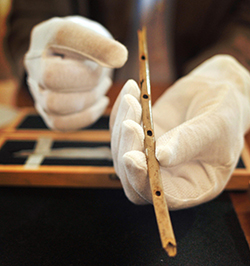 Nicholas Conard and collaborators describe 35,000-year-old flutes, one nearly complete flute carved from bird bone, and flute fragments carved from ivory, discovered in Hohle Fels Cave in Ulm, Germany.
Nicholas Conard and collaborators describe 35,000-year-old flutes, one nearly complete flute carved from bird bone, and flute fragments carved from ivory, discovered in Hohle Fels Cave in Ulm, Germany.
(no entry for this year)
2010
Ryan Kerney announces the discovery of algae (Oophila amblystomatis) living inside spotted salamander (Ambystoma maculatum) embryo cells — the first discovery of a photosynthetic symbiont living inside vertebrate cells.
Candy makers Hershey and Mars finance competing genomic sequences for cacao (the primary ingredient of chocolate).
Abderrazak El Albani and colleagues describe 2.1-billion-year-old macroscopic fossils from Gabon. The authors argue that the fossils are multicellular, pushing back the record of macroscopic life by more than 200 million years. The team also contends that the complex shapes of the fossils suggest cell signaling and coordinated growth.
Adam Brumm, Mike Morwood and colleagues publish a paper arguing that more than 40 stone artifacts found in situ and dated to approximately 1 million years ago indicate that the ancestors of Homo floresiensis (the "hobbits") arrived on Flores some 120,000 years earlier than previously thought.
Bulldozer operator Jesse Steele uncovers bones while digging a reservoir in Snowmass, Colorado. Excavations at the site will turn up more than 40 kinds of Ice Age animals.
Grzegorz Niedzwiedzki and colleagues publish a description of 395-million- year-old tetrapod tracks from Poland — 18 million years before tetrapods were thought to exist. The tracks' early date, large size and marine environment cause some skepticism about the find.
In the same week, separate research teams announce the finds of a 100- million-year-old mammal hair preserved in amber, and a 30-million-year- old pelican fossil with a 30-centimeter-long beak.
Meijer and Due announce the discovery of a 1.8-meter-tall, 16-kilogram, likely landlubbing, carnivorous stork (Leptoptilos robustus) on the island of Flores. Whether the storks ate Homo floresiensis juveniles, the hobbits hunted the storks, or everybody left each other alone is unresolved.
Nicholas Longrich describes a new dinosaur species from previously misidentified fossils at the American Museum of Natural History. Perhaps nudged by drinking buddies, he names the ceratopsian — with pretty heart shapes in its crest — Mojoceratops.
Scott Sampson and colleagues describe two species of exuberantly horned ceratopsian dinosaurs from late Cretaceous sediments in Utah: Utahceratops gettyi and Kosmoceratops richardsoni.
The Smithsonian opens its new human origins hall. A week later, Johannes Krause and colleagues announce the find of a fossil finger fragment from an unknown hominid from Siberia coincident with Neanderthals and modern humans (later dubbed Denisovans, and found distantly related to modern New Guineans). A few weeks after that, Lee Berger and colleagues announce the find of a new hominid from South Africa, Australopithecus sediba. Several weeks later, an international team announces a small DNA overlap between modern humans and Neanderthals that suggests interbreeding.
(no entry for this year)
2011
Two studies released in the same week indicate that modern Melanesians and Aboriginal Australians descended from an earlier migration out of Africa than did other populations. Further, the studies suggest that participants in the earlier migration interbred with Denisovans.
Bruce Archibald and coauthors describe a hummingbird-sized flying ant species that hopped continents during the early Eocene.
Darren Naish and coauthors describe a 27.5-centimeter bird jaw from the Late Cretaceous found in Kazakhstan. With only the jaw, the paleontologists can't be sure whether it loped like an ostrich, or pelted unfortunate land lubbers with effluvia missiles from above.
Jianni Liu and colleagues describe Diania cactiformis, or "walking cactus." It's a kind of leggy worm known as a lobopodian that lived in the Cambrian Period some 520 million years ago. The authors indicate that it might be close to the ancestral line for arthropods — jointed animals ranging from lobsters to ladybugs.
John Paterson and coauthors report their findings on Anomalocaris, a meter- long Cambrian predator so weird its remains were once mistaken for a shrimp and a jellyfish. They find that its eyes, mounted on the ends of stalks, were compound eyes, each with 16,000 separate lenses. Like dragonfly eyes but supersized.
Junchang Lü and colleagues announce the find of a Jurassic fossil from China, a probable female pterosaur who died while laying an egg. The egg is tiny compared to the mother, and has a parchment-like eggshell. The find suggests that pterosaurs buried their eggs, and that females lacked head crests.
Lee Berger and coauthors publish several papers on Australopithecus sediba arguing that the species is a direct ancestor of modern humans and the family tree will need to be redrawn. Other paleoanthropologists aren't so sure. They do agree that the Sediba's weird mix of primitive and advanced features demonstrates remarkable hominid diversity.
Longrich and Olson describe a newly discovered wing feature on an extinct, flightless Jamaican bird named Xenicibis: built-in nunchucks.
Michael Waters and coauthors describe a stone tool assemblage at the Buttermilk Creek Complex in Texas documenting the presence of humans in the New World about 15,500 years ago — more than 2,000 years before the earliest Clovis sites.
On the sesquicentennial of its discovery, a new study challenges the status of Archaeopteryx as the earliest known bird. Xing Xu and coauthors argue that Archaeopteryx and newly discovered Xiaotingia are closer to nonavian dinosaurs. Reactions to the paper are mixed.
Relying on molecular dating and some (literally) lousy fossils, Vincent Smith and colleagues assert that lice have been rapidly evolving since well before the end of the Cretaceous, and may have hung out on feathered dinosaurs before annoying other species.
Esther Ullrich-Lüter and colleagues describe photoreceptors in sea urchin tube feet, meaning the animals may have functioned as big, compound eyes.
(no entry for this year)
2012
A boy named Evgeniy Solinder discovers a well-preserved mammoth in the Siberian Arctic. Later examination will show evidence that the mammoth was killed by spear-wielding humans, and radiocarbon dating will indicate that the animal is 45,000 years old, pushing back the earliest known human occupation of the region by 10,000 years.
After examining fossil feathers with an electron microscope and comparing them to modern feathers, a team of American and Chinese scientists announces that Microraptor, a four-winged dinosaur from China probably had an iridescent sheen to its feathers.
Chinese and Canadian researchers announce the discovery of Yutyrannus huali, a distant T. rex relative in which the 1.5-ton adult still sported long filamentous feathers.
Clive Finlayson and coauthors argue that Neanderthals collected bird feathers for use in personal adornment.
Extrapolating from contemporary cows, a team of British scientists contends that sauropod flatulence, releasing the potent greenhouse gas methane, played a significant role in the Mesozoic's warm, moist climate.
Gregory Retallack publishes a paper arguing that Ediacaran fossils long thought to be marine animals were actually land-based lichens. His argument pushes back the beginning of land-based life by 65 million years. Anticipating "sharp intakes of breath in the paleontological community," Nature sets up a comment forum at the same time it publishes Retallack's paper.
Two studies, released the same week in Science and Nature and done partly by the same researchers, describe two groups of ancient tools from South Africa. The studies say that one group, estimated to be about 71,000 years old, has small bladelets likely made from heat-treated stone, and the other group, estimated to be about 500,000 years old, has spear tips.
Walter Joyce and coauthors announce a new discovery in Germany's Messel Pit, a famous Eocene fossil site. The discovery includes multiple pairs of fossil turtles petrified in a state of indelicacy.
A team of British and U.S. scientists describe the color mechanism of a brilliant iridescent blue African fruit, Pollia condensata. Like some beetle shells, butterfly wings, and bird feathers, the fruit gets its color from microscopic structures rather than pigments, but the fruit's coiled strands of cellulose are like nothing before discovered in nature.
An international team of researchers publishes a study indicating that aphids might be able to engage in a photosynthesis-like process, using carotenoids for the "capture of light energy."
Eric Rittmeyer and coauthors describe Paedophryne amauensis, a 7.7- millimeter-long frog from New Guinea, "the smallest known vertebrate species."
Frank Glaw and coauthors describe several new species of miniature chameleons from Madagascar. Among the tiniest is Brookensia micra, with juveniles little enough to stand on the head of a match.
While sorting and relocating the Cambridge Herbarium, a university librarian finds fungi and seaweed collected by Charles Darwin on his Beagle voyage, still wrapped in newspaper from 1828.
(no entry for this year)
2013
Based on new genetic research, David Reich, Svante Pääbo and collaborators announce at a Royal Society of London meeting that Denisovans bred with Neanderthals, ancestors of people now living in East Asia and Oceania, and another group of extinct archaic humans who were genetically dissimilar to both Neanderthals and modern humans. A few weeks later, Matthias Meyer, Svante Pääbo and coauthors describe the oldest hominin DNA sequence to date, from a 400,000-year-old femur from Spain's Sima de los Huesos. The mitochondrial DNA indicate an unexpected link to Denisovans.
Using genetic material from more than 300 individuals, including aboriginal Australians from the Northern Territory, a team of geneticists argues that Australians — long believed isolated from other populations for some 45,000 years — received substantial gene flow from India about 4,230 years ago.
Dale Greenwalt and coauthors describe a 46-million-year-old fossil female mosquito from Montana with traces of her last bloody meal (iron and porphyrin) in her bloated abdomen — strong evidence that these bugs have been irritating nicer animals for tens of millions of years.
David Legg describes a Cambrian arthropod with scissor-like front appendages. He names the species Kootenichela deppi after Johnny Depp.
David Lordkipanidze and coauthors publish a new paper on the hominid fossils from Dmanisi, Georgia. They argue that all the fossils from the site are Homo erectus, and make the controversial claim that hominid species found worldwide from that period — Homo erectus, Homo habilis, and Homo rudolfensis — might all belong to one species with a lot of variability.
Marie Soressi and coauthors contend that Neanderthals made leather-working tools similar to modern-day lissoirs used on pricey handbags.
Reporting on some 12 years of research at La Chapelle-aux-Saints, William Rendu and coauthors support the original interpretation of intentional Neanderthal burials. They conclude that the burial pits are not explained by natural processes and, unlike the site's scavenged animal bones, the relatively undamaged human remains at the site must have been buried quickly.
Robert DePalma and coauthors describe a likely T. rex tooth lodged between hadrosaur vertebrae. The authors also describe regenerated bone that "massively overgrew" after the hadrosaur was bitten. They cite the find as evidence that T. rex hunted, at least some of the time, and that this lucky hadrosaur lived to munch leaves another day.
Robert Reisz and collaborators announce the "discovery of an embryonic dinosaur bone bed from the Lower Jurassic of China, the oldest such occurrence in the fossil record." The find includes the remains of many individual dinosaurs at different stages of development.
(no entry for this year)
2014
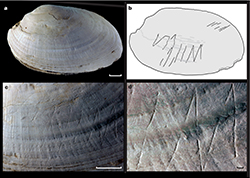 After reexamining mussel shells collected by Eugène Dubois in Indonesia in the 1890s, a team of researchers announces that one of the shells bears the oldest-yet-known geometric engraving. They date the shell at around 500,000 years and attribute the handiwork to Homo erectus.
After reexamining mussel shells collected by Eugène Dubois in Indonesia in the 1890s, a team of researchers announces that one of the shells bears the oldest-yet-known geometric engraving. They date the shell at around 500,000 years and attribute the handiwork to Homo erectus.
Ainara Sistiaga and colleagues describe what they contend is the oldest human coprolite yet positively identified: a roughly 50,000-year-old Neanderthal calling card from El Salt, Spain. Their analysis indicates that Neanderthals balanced their meaty diets with nuts, berries and vegetables. Other researchers find the study intriguing but hope for confirmation that the fossil turd is from a human and not, say, a bear.
An international research team announces the age of Indonesian cave art, originally discovered in the 1950s. The authors state that radiometric dating indicates the artwork is about 40,000 years old, making it comparable in age to the oldest reliably dated art found in Europe. The authors describe one hand stencil from Sulawesi's Maros karsts as "the oldest known hand stencil in the world."
Matt Lamanna and coauthors describe Anzu wyliei, an bipedal, bird- like feathered dinosaur found in North and South Dakota. Measuring 11 feet and 500 pounds, the oviraptorosaur is nicknamed the "chicken from hell."
Nick Ashton and coauthors describe human footprints discovered along England's east coast in May 2013 — exposed and eroded by ocean water in a matter of weeks. Based on the geologic setting, the researchers estimate the tracks at about 800,000 years old (making them the oldest hominid footprints yet found outside Africa), and suggest the footprints might have been left by Homo antecessor.
Nizar Ibrahim, Paul Sereno and collaborators describe the aquatic adaptations of Spinosaurus, a massive carnivorous dinosaur species first studied by Ernst Stromer around 1912. Citing the animal's tiny nostril high on the head, dense limb bones, long forelimbs and flat feet, the authors argue that the dinosaur lived a semiaquatic life.
Researchers affiliated with the Museum of Paleontlogy Egidio Feruglio announce the discovery of the biggest dinosaur yet discovered: a seven- storey-tall titanosaur from Patagonia. A few months later, an international research team names the species Dreadnoughtus schrani, and states that multiple aspects of the skeleton indicate the animal was still growing when it died.
Xiaoya Ma and coauthors describe a well preserved 520-million-year-old fossil arthropod of the species Fuxianhuia protensa. The team identifies the animal's circulatory system from dark carbon lines in the fossil. The researchers argue that this fossil preserves the oldest cardiovascular system yet known, and that complex cardiovascular systems evolved early in the Cambrian Period.
Bryan Sykes and colleagues publish their DNA analysis of 37 hair samples purported to be remains of Bigfoot or Yeti, collected from Russia, the Himalaya and the United States. They announce that two samples match the DNA of fossil polar bears, and the rest match animals such as dogs, cows, horses, raccoons, and goat-like serows.
(no entry for this year)
2015
Bhart-Anjan Bhullar, Arhat Abzhanov and colleagues announce that they have reverse engineered dinosaur snouts in chicken embryos by altering beak- building gene expressions.
Stephen Hackley publishes a review article arguing that human brains retain vestigial neural circuitry, the same circuitry that currently allows other mammals (and once allowed our ancient ancestors) to orient their ears toward novel stimuli.
A team led by Sonia Harmand announces the discovery of stone tools at Lomekwi, Kenya, estimated to be 3.3 million years old, meaning older than the genus Homo. The heaviest of the tools prompt archaeologist David Braun to ask about their makers, "What the hell do these things look like if they can use 15-kilogram tools?"
After recruiting skinny spelunkers to excavate a cave he can't reach, and recruiting "early career scientists" to interpret the fossils, Lee Berger, with his coauthors, announces Homo naledi from South Africa. Berger and coauthors suggest that the hominid might be more than 2 million years old and that it might have intentionally disposed of its dead. In an accompanying commentary, Chris Stringer expresses surprise at "the apparent lack of attempts" to date the fossils.
After studying Chinle Formation rocks at Ghost Ranch, New Mexico, Jessica Whiteside and coauthors argue that weather extremes, drought and fires kept dinosaurs from dominating Earth's tropics for the first 30 million years of the Mesozoic Era.
An international research team announces that Sterkfontein Cave's "Little Foot," classified as Australopithecus prometheus, is 3.67 million years old, making the fossil older than the iconic Lucy.
An international research team describes Aegirocassis benmoulae, a 480- million-year-old arthropod similar to Anomalocaris that might have measured as much as 2 meters (6 feet) long. Found in Morocco, the fossils have been preserved in three dimensions, and indicate that the giant arthropod was a filter feeder.
Based on new specimens from Burgess Shale, Martin Smith and Jean-Bernard Caron describe the elusive head of the Cambrian animal Hallucigenia, noting that it is shaped like a spoon with "a really cheeky semicircular smile" next to multiple appendages. They also note that what had previously been mistaken for the head was at the other end of the body — "decay fluids" squeezed out of the gut during fossilization.
Caleb Brown and Donald Henderson describe Regaliceratops peterhewsi, a new species of ceratopsid dinosaur that they have nicknamed "Hellboy."
Emily Mitchell and coauthors hypothesize that Fractofusus, an Ediacaran Period rangeomorph (unlike a modern plant or animal, but big enough to leave a distinctive fossil), reproduced in two ways: by sprouting clones from its body, and by releasing propagules (akin to seeds) into the ocean water.
Fernando Novas and coauthors describe Chilesaurus diegosuarezi, a "bizarre herbivorous" theropod, i.e., a member of a group of typically carnivorous dinosaurs, from Jurassic-aged rocks in Chile. The dinosaur species is named for Diego Suárez, who found the first fossil bones in the rock formation when he was seven years old.
James Lamsdell and coauthors describe the oldest-yet-known sea scorpion (eurypterid), from 467-million-year-old rocks in Iowa. The researchers state that Pentecopterus decorahensis grew to over 5 feet long and, unlike any other arthropod known (living or extinct), radically changed limb shape during the growth process. The authors suggest that eurypterids either diversified very quickly, or originated much earlier than previously thought.
Nohemi Sala and coauthors describe a 430,000-year-old skull from Spain's Sima de los Huesos Cave bearing two fractures indicative of deadly blunt- force trauma. The authors describe the find as "the earliest evidence of lethal interpersonal violence in the hominin fossil record."
Silvia Danise and Nicholas Higgs describe trace fossils suggesting that the marine worm genus Osedax fed on the bones of Cretaceous plesiosaurs that fell to the ocean floor 100 million years ago. They hypothesize that the genus of the species Osedax mucofloris ("bone-eating snot flower" first described in 2005) ate the bones of Mesozoic marine reptiles and sea turtles before whales evolved into the worms' favorite food.
Xiaoya Ma and coauthors argue that brain tissue has been fossilized in seven specimens of the Cambrian arthropod Fuxianhuia protensa from the Chenjiang fossil beds in southwest China.
Xing Xu and colleagues describe Yi qi, a small Jurassic dinosaur with weird rod-like bones projecting from its wrists, and traces of membranes. The researchers assert that the rod-like bones might have supported membranes that might have been used in flight, but probably just gliding. They also note that the dinosaur had a relatively heavy behind and would have occasionally stalled.
A team of scientists describes Acmella nana collected from the forests of Borneo. The shells range in size from 0.60 to 0.79 millimeters, roughly 0.30 millimeters smaller than the previous tiniest-snail-species record holder identified just a month before.
Jérémie Teyssier and coauthors attribute panther chameleons' ability to quickly change color to their ability to rapidly tune a network of photonic crystals under their skin. The authors also argue that a deeper layer of larger crystals in the chameleons' skin reflects sunlight, especially in the near-infrared. In short, the crystals keep the chameleons both cool and colorful.
Nature publishes "Here Be Dragons" explaining that medieval dragons, who engaged in a centuries-long slumber encouraged by the Little Ice Age and "a bewildering lack of knights," might undergo a resurgence due to global warming since higher temperatures benefit "buccal and nasal furnaces." The article is published online on April 1 with the editorial note that "some of its content may merit a degree of scepticism."
(no entry for this year)
2016
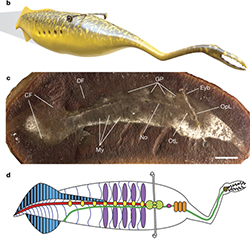 A team led by Victoria McCoy publishes an analysis of Tullimonstrum gregarium (the Tully monster, originally found in 1955) concluding that the animal was a vertebrate related to lampreys. One of the paper authors, Carmen Soriano, remarks, "If you put in a box a worm, a mollusk, an arthropod and a fish, and you shake, then what you have at the end is a Tully monster."
A team led by Victoria McCoy publishes an analysis of Tullimonstrum gregarium (the Tully monster, originally found in 1955) concluding that the animal was a vertebrate related to lampreys. One of the paper authors, Carmen Soriano, remarks, "If you put in a box a worm, a mollusk, an arthropod and a fish, and you shake, then what you have at the end is a Tully monster."
Allen Nutman and colleagues argue that a group of metamorphic rocks from the Isua Supracrustal Belt in southwest Greenland preserve 3.7-billion- year-old stromatolites. If the claim is correct, the fossils are the oldest so far discovered, but other researchers express doubts.
Błażej Błażejowski and coauthors argue that Trimerocephalus chopini, 365-million-year-old eyeless Devonian trilobites, migrated by forming single-file lines, keeping their queues together through touch and/or chemical signals such as pungent urine.
David Norman and colleagues announce that a mineral lump found on a Sussex beach in 2004 is fossilized brain tissue from a 133-million-year-old dinosaur, perhaps an Iguanodon or related species.
Elizabeth Martin-Silverstone and coauthors describe fossil pterosaur fragments (an upper arm bone and some vertebrae) from Hornby Island, British Columbia. The researchers state that the internal structure of the humerus and the partially fused condition of the vertebrae suggest the individual was nearly full grown when it died, and had a wingspan of just 1.5 meters (5 feet). If the pterosaur was as little as the researchers suspect, then when it was perched, it would be about as short as a house cat.
Frido Welker and coauthors argue that 40,000-year-old jewelry, collected decades earlier from Arcy-sur-Cure, was made by Neanderthals. The researchers base their claim on the amino acids found in the collagen of bone fragments associated with the ancient bits of bling — amino acids indicative of Neanderthals as opposed to archaic humans.
Gerrit van den Bergh and coauthors announce the find of Homo floresiensis- like fossils from a new site on the island of Flores, about 50 miles east of the 2004 "hobbit" discovery site. The new find, including a partial mandible and some teeth, is estimated at 700,000 years old, more than half a million years older than the fossils found in 2004.
John Kappelman and colleagues claim that the Australopithecus africanus specimen Lucy fell from a tree more than 30 feet high, dying in the fall that left observable fractures in her fossil bones. The claim attracts skepticism from Donald Johanson and Tim White, members of the original Lucy discovery team.
Lida Xing and coauthors describe the feathered tail of a theropod dinosaur, perhaps a young coelurosaur. The fossil is preserved in Cretaceous amber from Myanmar (Burma).
Mary Higby Schweitzer and coauthors publish a study of medullary bone (known as a ready-to-use source of calcium for making eggshells in modern birds) in a Tyrannosaurus rex fossil. The researchers argue that the medullary tissue shows that this T. rex was not only female but also pregnant.
Mikkel Pedersen and coauthors argue that Beringia did not shed glaciers and gain vegetation early enough to support the ancestors of Clovis people, though later migrants to the Americas might have traveled that route.
Nichole Gunter and coauthors hypothesize that dung beetles probably evolved during the Cretaceous Period to eat dinosaur poo, and that "the switch in dinosaur diet to incorporate more nutritious and less fibrous angiosperm foliage provided a palatable dung source that ultimately created a new niche for diversification."
Julius Nielsen and coauthors publish an account of the longest-lived vertebrate so far discovered: a Greenland shark (Somniosus microcephalus) that ranges in age from 272 to 512 years old.
 Donald Trump becomes forty-fifth president of the United States. A Berlusconi-like event visits America.
Donald Trump becomes forty-fifth president of the United States. A Berlusconi-like event visits America.
2017
A Chinese-U.S. team announces the discovery of two hominid skullcaps, 105,000 to 125,000 years old, from eastern China. Although the researchers don't assign the crania to any species, some of their peers speculate that the fossils might be Denisovan.
After studying von Ebner lines (microscopic daily growth lines in teeth) from Protoceratops andrewsi and Hypacrosaurus stebingeri embryos, Gregory Erickson and coauthors argue that the dinosaurs had months-long gestation periods, developing more like slow-growing reptiles than fast-growing birds.
An international research team describes a well-preserved baby bird specimen in a 99-million-year-old piece of amber collected from Burma. The scientists classify the hatchling as a member of the enantiornithes, extinct relatives of modern birds that still had clawed wings and teeth.
An international team describes California's Cerutti Mastodon site, found in 1992. The researchers argue that the assemblage of broken mastodon bones and rocks comprises evidence of human activity. Based on measures of radioactive uranium and thorium in the bones, they argue that the site is 130,000 years old. Because this date is generally understood to precede modern Homo sapiens spreading beyond Africa, the paper suggests that Neanderthals, Denisovans or even late Homo erectus might have reached North America via the Bering Land Bridge and Pacific Coast. Nature, the paper's publisher, calls the study a "jaw-dropping claim." Parties to the announcement anticipate skepticism.
Darren Naish and Mark Witton describe a robust cervical verterbra from the Transylvanian azhdarchid pterosaur Hatzegopteryx. The researchers argue that the animal had a short, thick neck that could withstand torsion and compression, and could bear heavy loads. Considering the fossil locality (the Romanian town of Haţeg) was an island during the Cretaceous, and therefore lacked typical terrestrial predators, the authors contend that Hatzegopteryx might have occupied the top of the food chain. Witton describes these pterosaurs as "giraffe-sized, quadrupedal Panzer- storks."
Gerald Mayr and colleagues describe a 150-centimeter- (60-inch-) long, 61- million-year-old fossil penguin, almost the biggest fossil penguin ever found, and the oldest of that size. The researchers state that this fossil's differences from more primitive penguins implies that penguins arose earlier than previously thought, probably during the Mesozoic.
Thomas Hegna and coauthors describe possible eggs from a roughly 450- million-year-old pyritized trilobite, Triarthrus eatoni. The tiny eggs are clustered near the animal's head, indicating that the head was the gamete-ejection point.
(no entry for this year)
2018
(no entry for this year)
2019
(no entry for this year)
(no entry for this year)
2020
(no entry for this year)
 Joe Biden becomes the 46th President of the United States.
Joe Biden becomes the 46th President of the United States.
2021
(no entry for this year)
(no entry for this year)
2022
(no entry for this year)
(no entry for this year)
2023
(no entry for this year)
(no entry for this year)
2024
(no entry for this year)
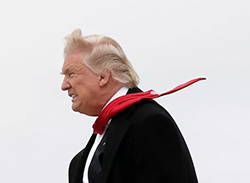 Donald Trump becomes the 47th President of the United States, with Republican majorities in the Senate and House and with a Supreme Court packed with his picks (and likely more on the way). A strong wind blows to the right.
Donald Trump becomes the 47th President of the United States, with Republican majorities in the Senate and House and with a Supreme Court packed with his picks (and likely more on the way). A strong wind blows to the right.
2025
(no entry for this year)
(no entry for this year)
2026
(no entry for this year)
(no entry for this year)
2027
(no entry for this year)
(no entry for this year)
2028
(no entry for this year)
(no entry for this year)
2029
(no entry for this year)
ESP Quick Facts
ESP Origins
In the early 1990's, Robert Robbins was a faculty member at Johns Hopkins, where he directed the informatics core of GDB — the human gene-mapping database of the international human genome project. To share papers with colleagues around the world, he set up a small paper-sharing section on his personal web page. This small project evolved into The Electronic Scholarly Publishing Project.
ESP Support
In 1995, Robbins became the VP/IT of the Fred Hutchinson Cancer Research Center in Seattle, WA. Soon after arriving in Seattle, Robbins secured funding, through the ELSI component of the US Human Genome Project, to create the original ESP.ORG web site, with the formal goal of providing free, world-wide access to the literature of classical genetics.
ESP Rationale
Although the methods of molecular biology can seem almost magical to the uninitiated, the original techniques of classical genetics are readily appreciated by one and all: cross individuals that differ in some inherited trait, collect all of the progeny, score their attributes, and propose mechanisms to explain the patterns of inheritance observed.
ESP Goal
In reading the early works of classical genetics, one is drawn, almost inexorably, into ever more complex models, until molecular explanations begin to seem both necessary and natural. At that point, the tools for understanding genome research are at hand. Assisting readers reach this point was the original goal of The Electronic Scholarly Publishing Project.
ESP Usage
Usage of the site grew rapidly and has remained high. Faculty began to use the site for their assigned readings. Other on-line publishers, ranging from The New York Times to Nature referenced ESP materials in their own publications. Nobel laureates (e.g., Joshua Lederberg) regularly used the site and even wrote to suggest changes and improvements.
ESP Content
When the site began, no journals were making their early content available in digital format. As a result, ESP was obliged to digitize classic literature before it could be made available. For many important papers — such as Mendel's original paper or the first genetic map — ESP had to produce entirely new typeset versions of the works, if they were to be available in a high-quality format.
ESP Help
Early support from the DOE component of the Human Genome Project was critically important for getting the ESP project on a firm foundation. Since that funding ended (nearly 20 years ago), the project has been operated as a purely volunteer effort. Anyone wishing to assist in these efforts should send an email to Robbins.
ESP Plans
With the development of methods for adding typeset side notes to PDF files, the ESP project now plans to add annotated versions of some classical papers to its holdings. We also plan to add new reference and pedagogical material. We have already started providing regularly updated, comprehensive bibliographies to the ESP.ORG site.
ESP Picks from Around the Web (updated 06 MAR 2017 )
Old Science

Weird Science

Treating Disease with Fecal Transplantation
Fossils of miniature humans (hobbits) discovered in Indonesia

Dinosaur tail, complete with feathers, found preserved in amber.
Astronomy

Mysterious fast radio burst (FRB) detected in the distant universe.